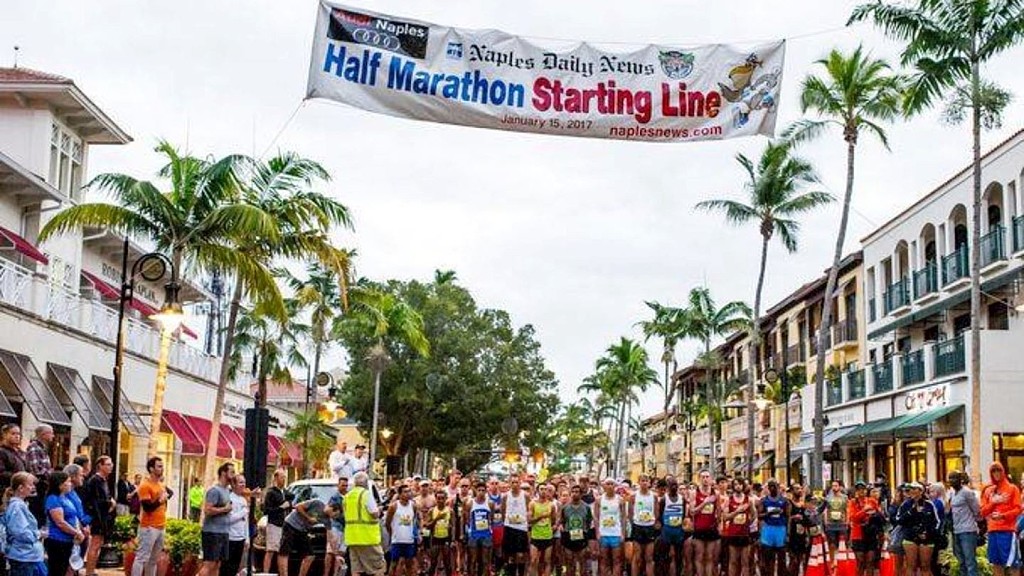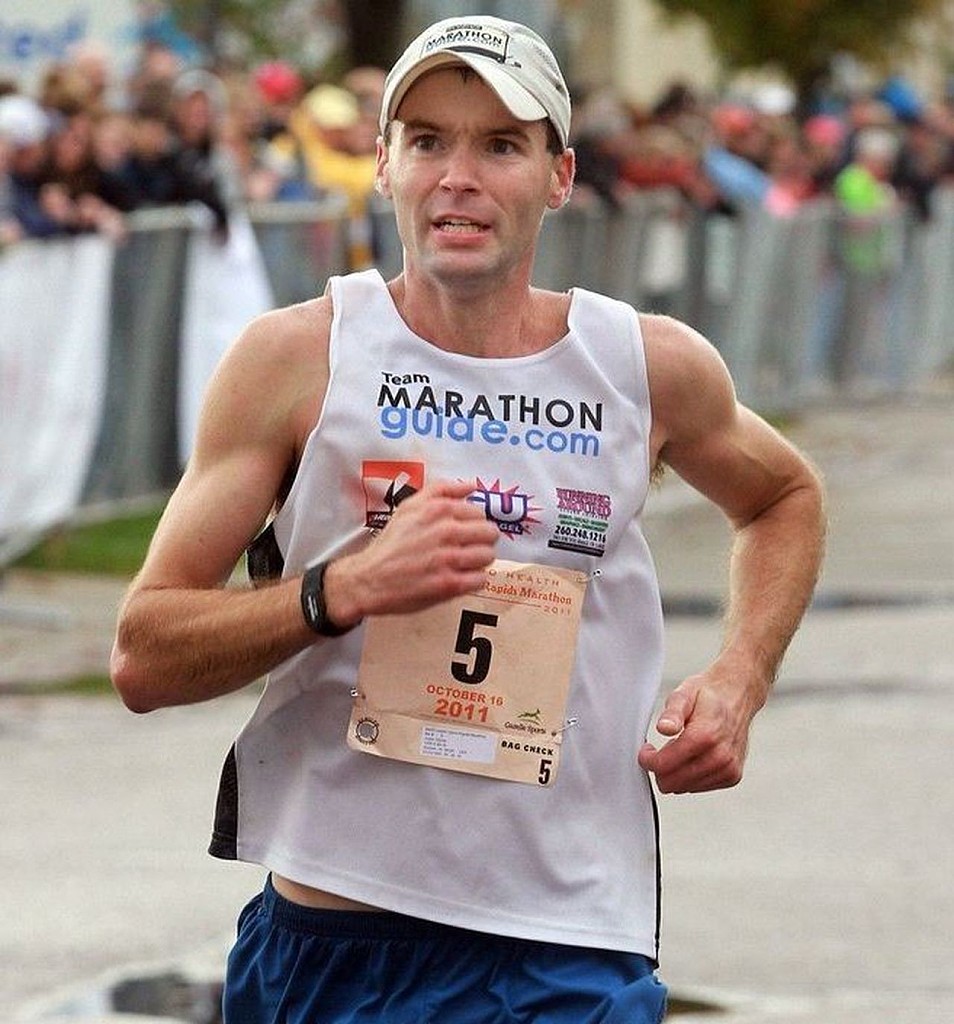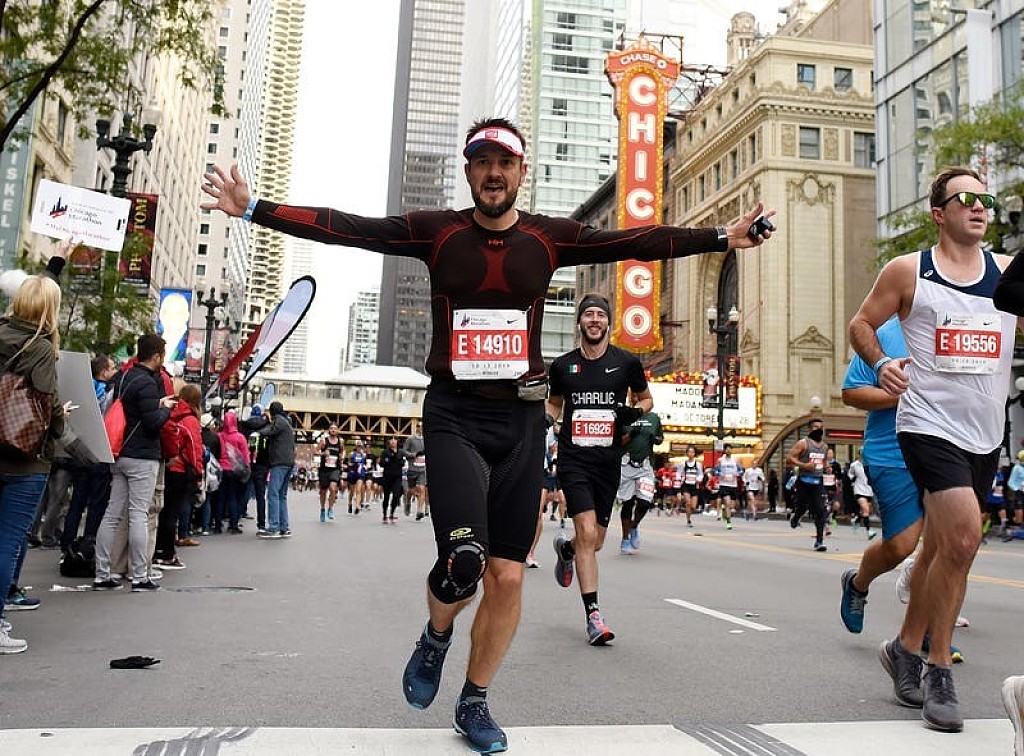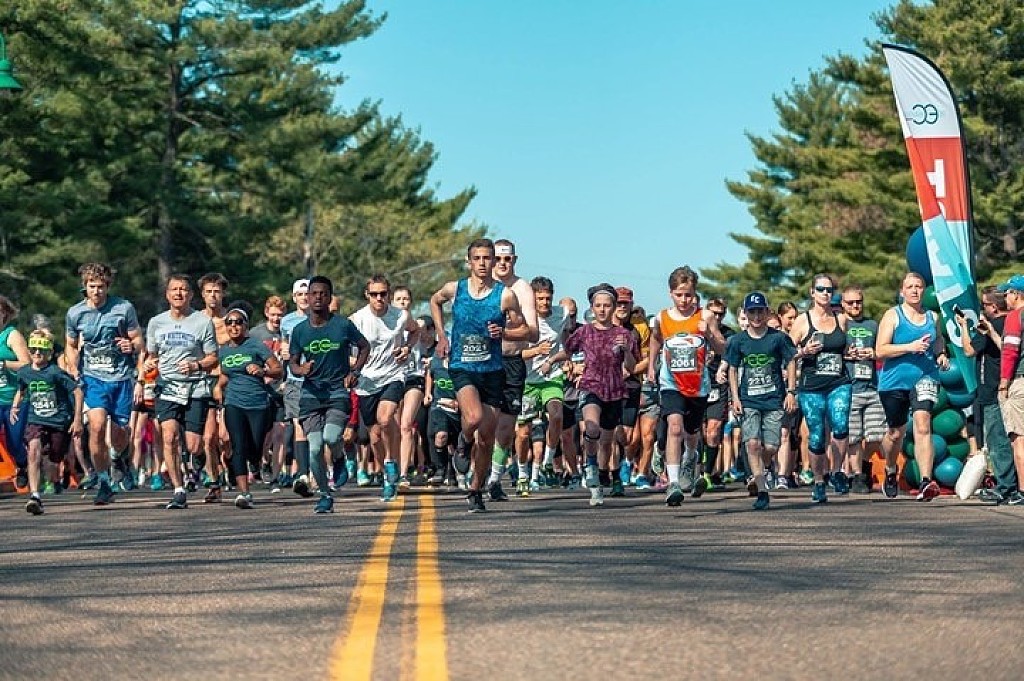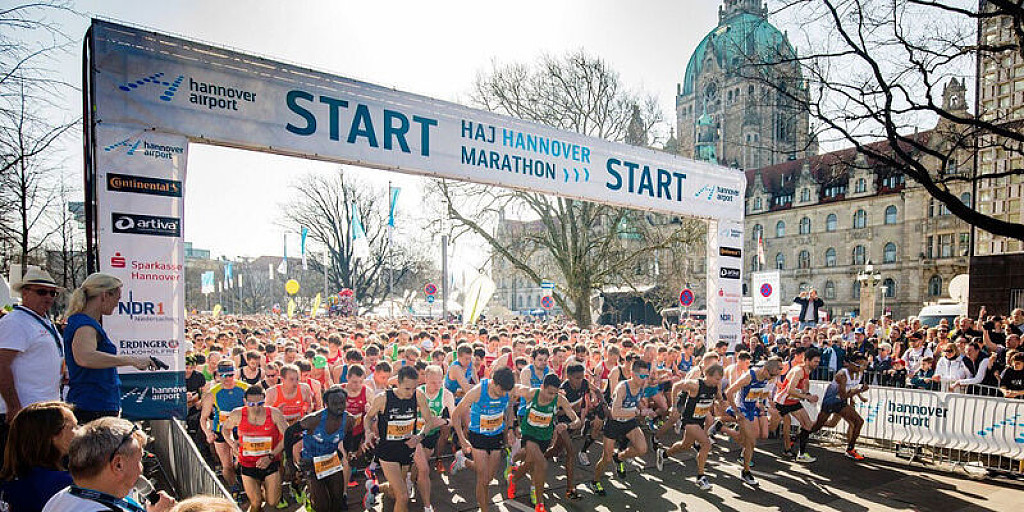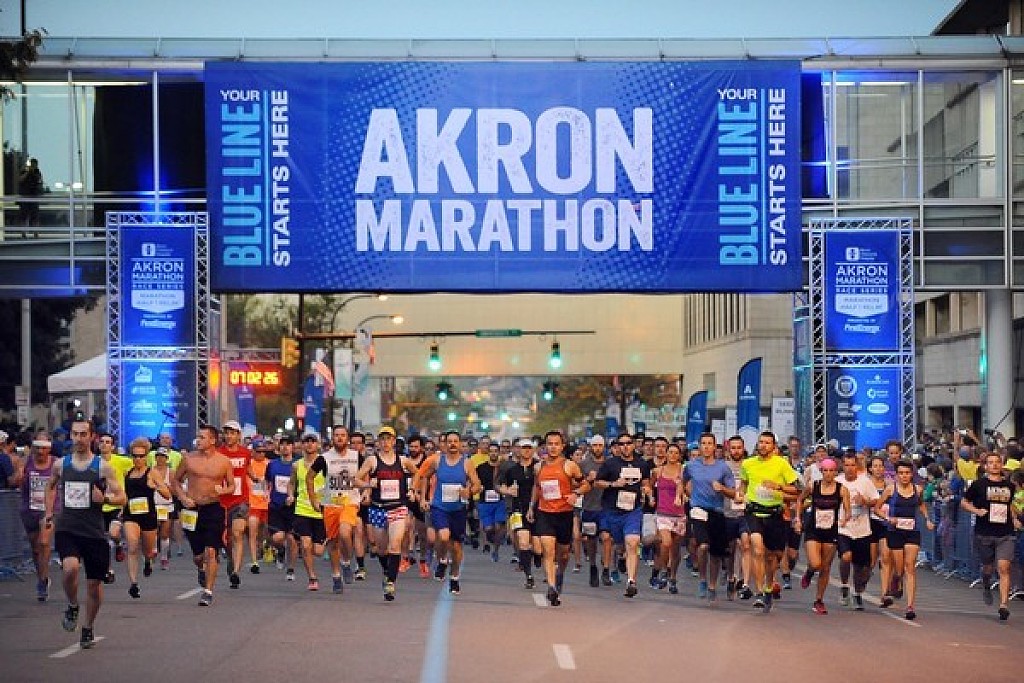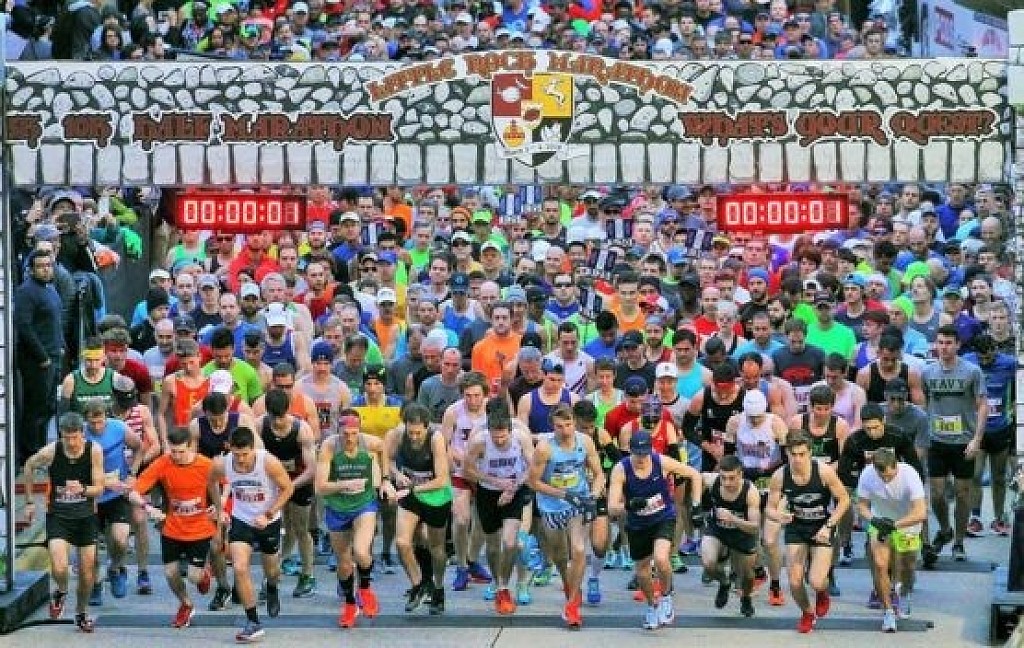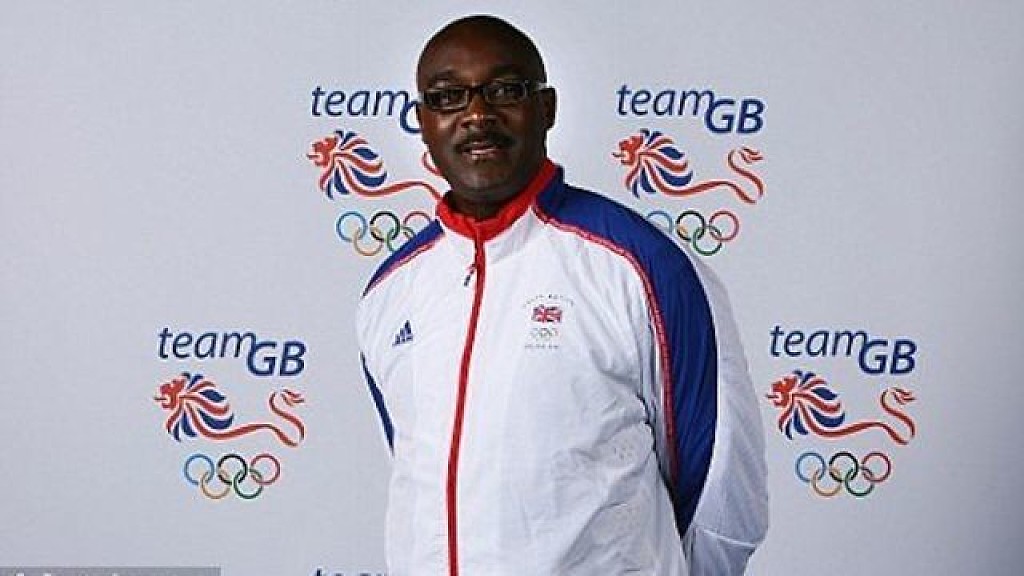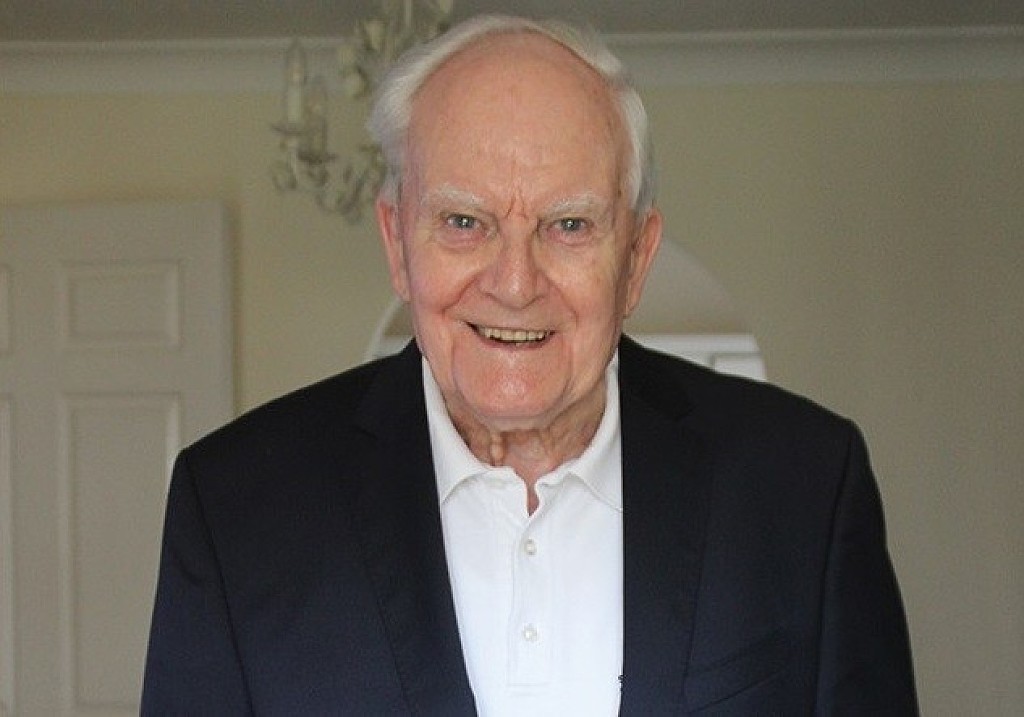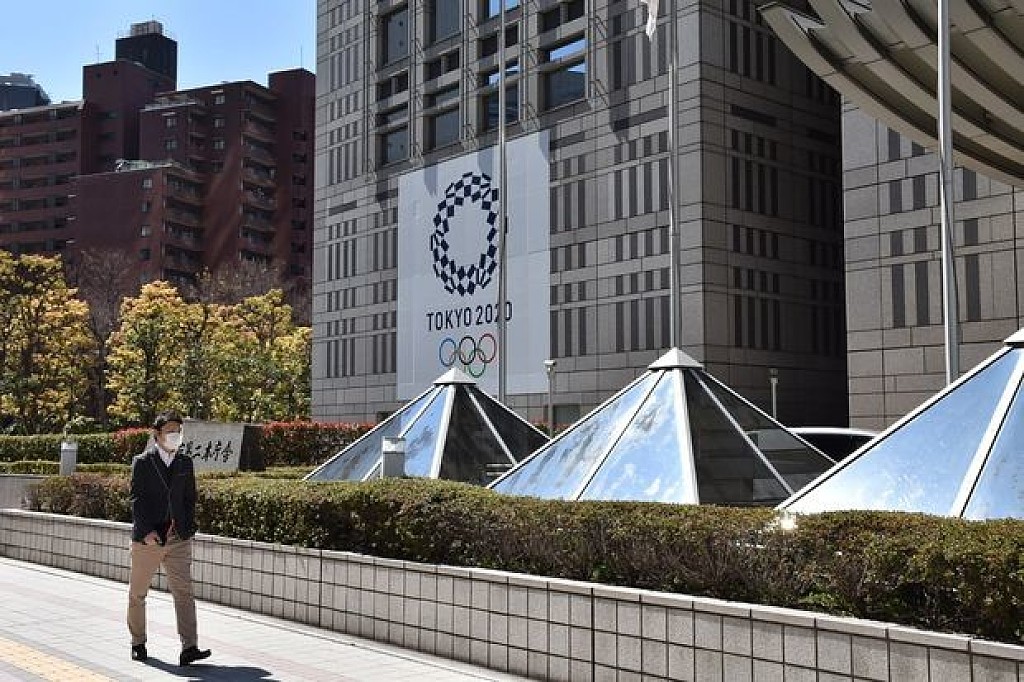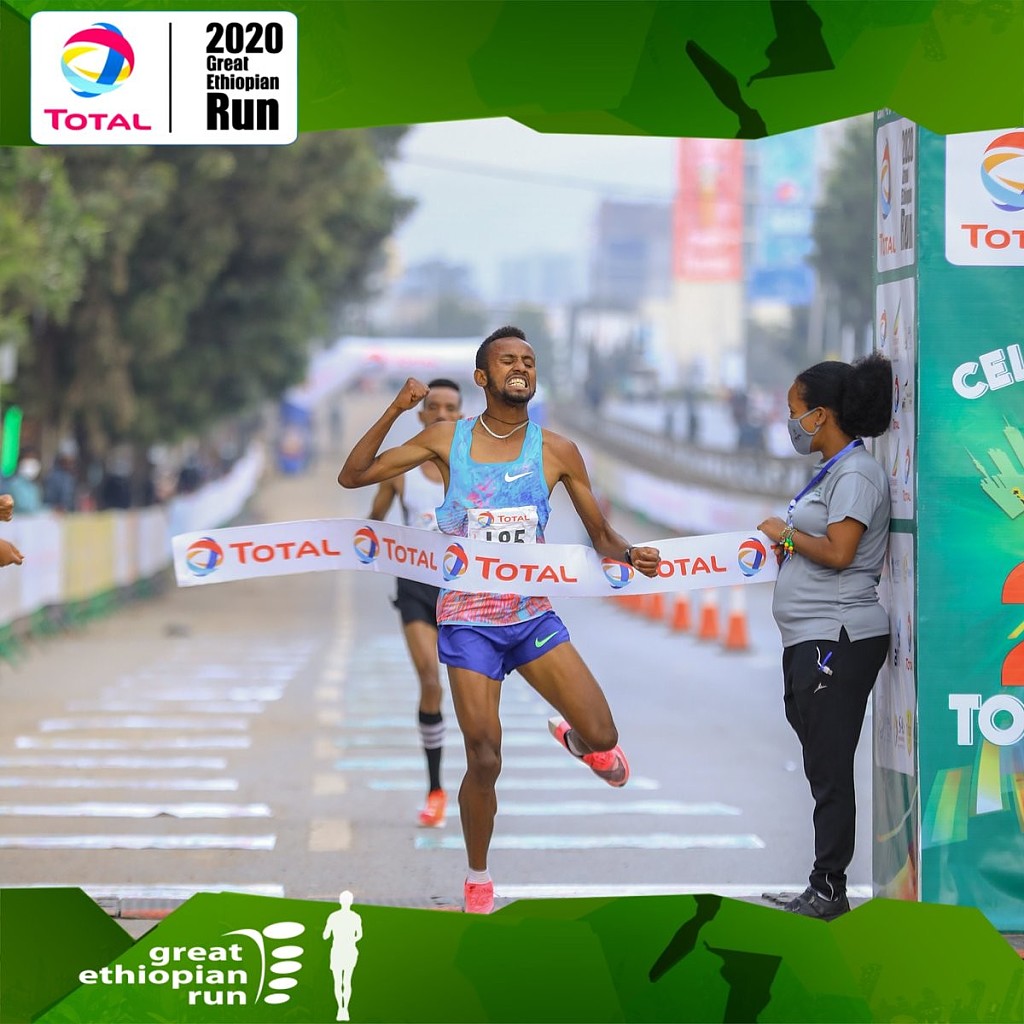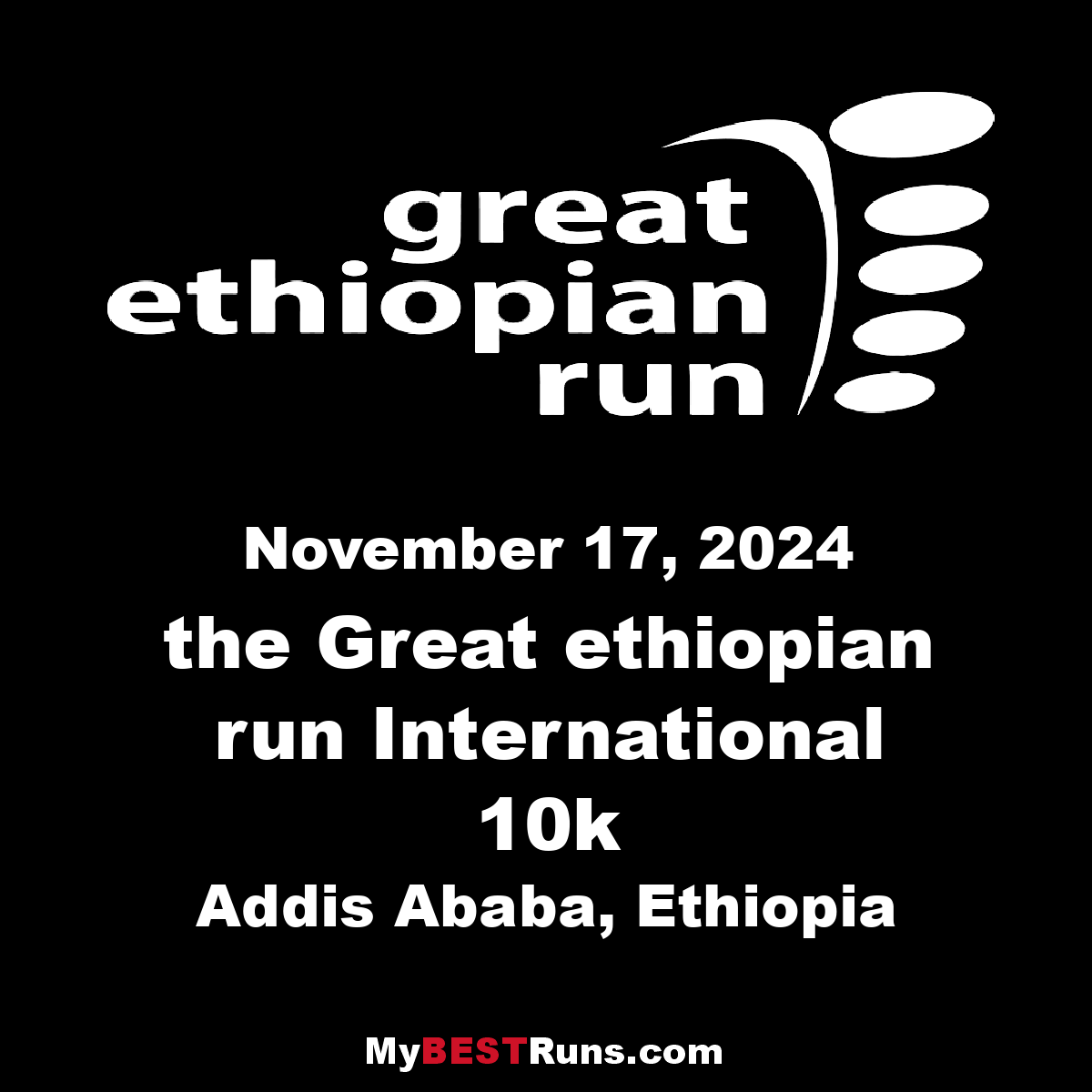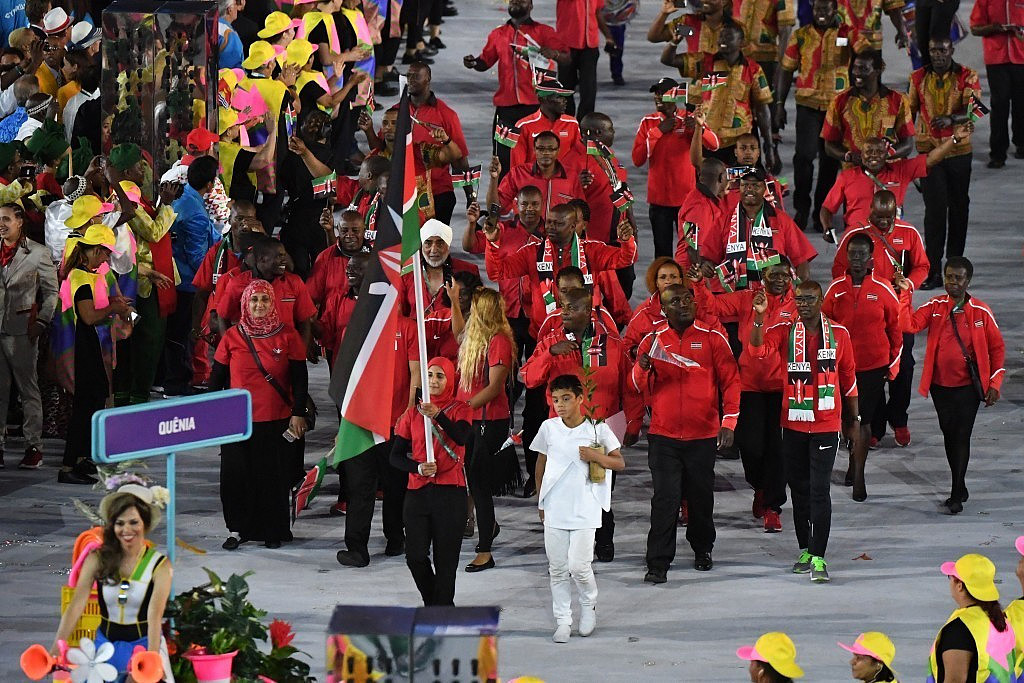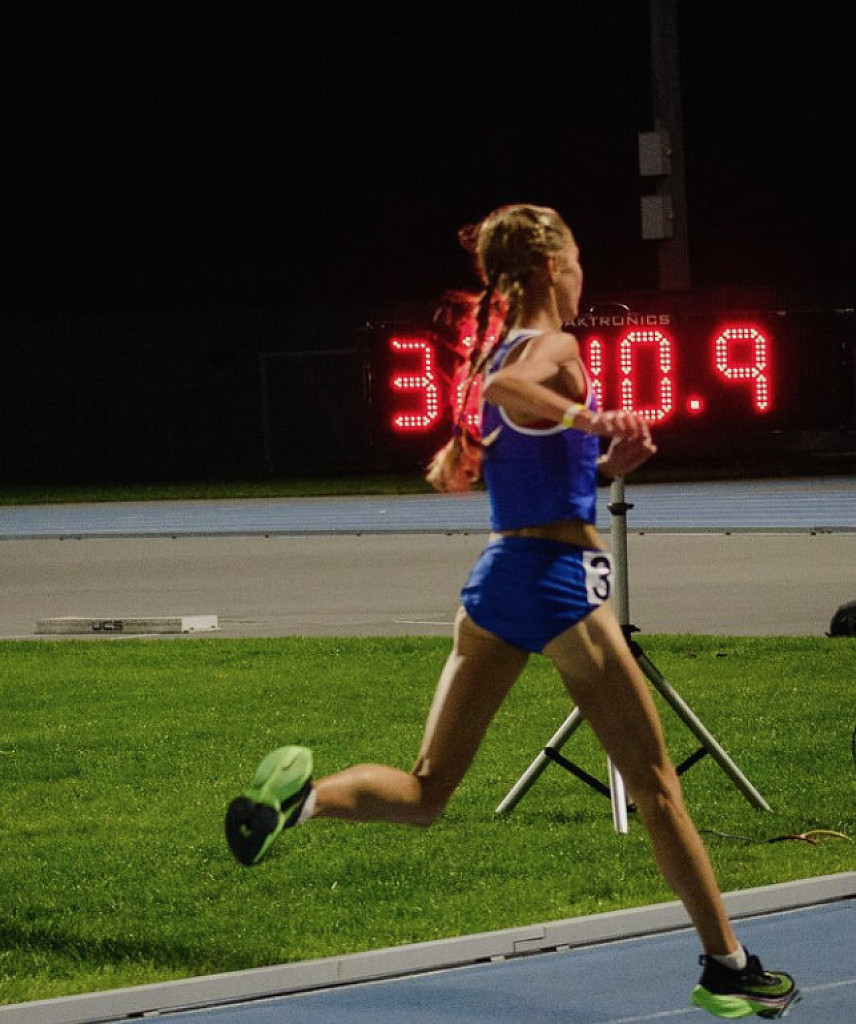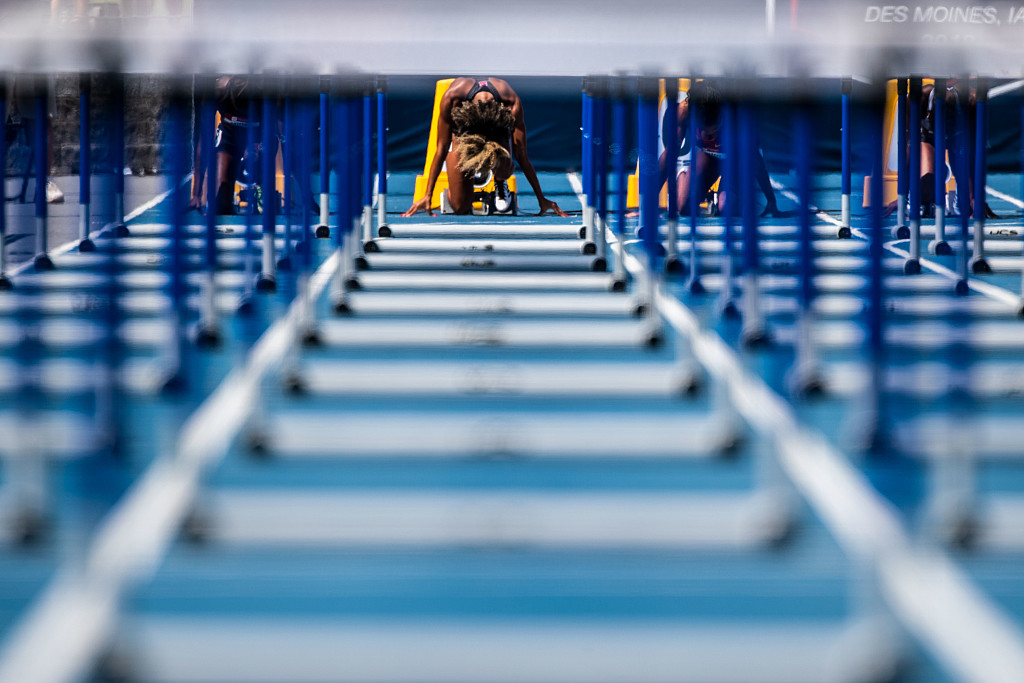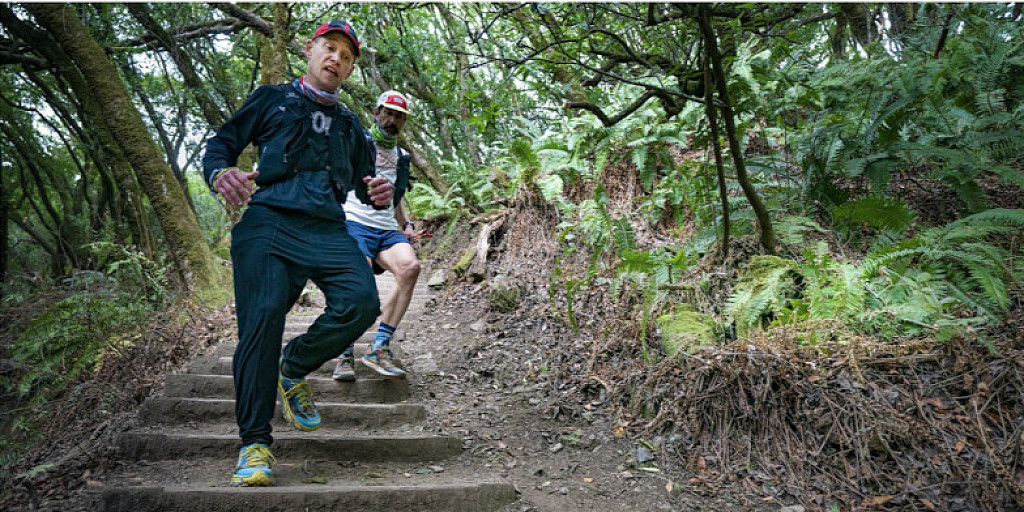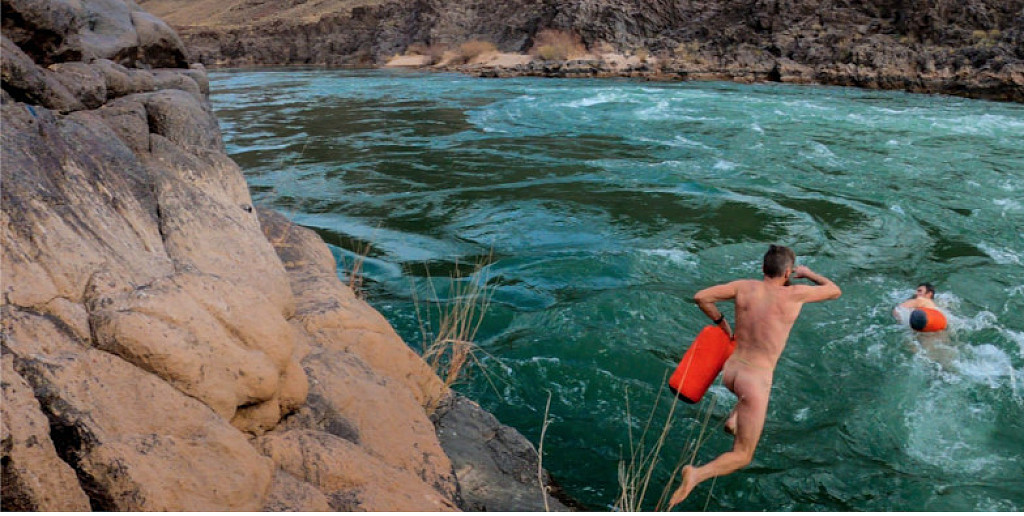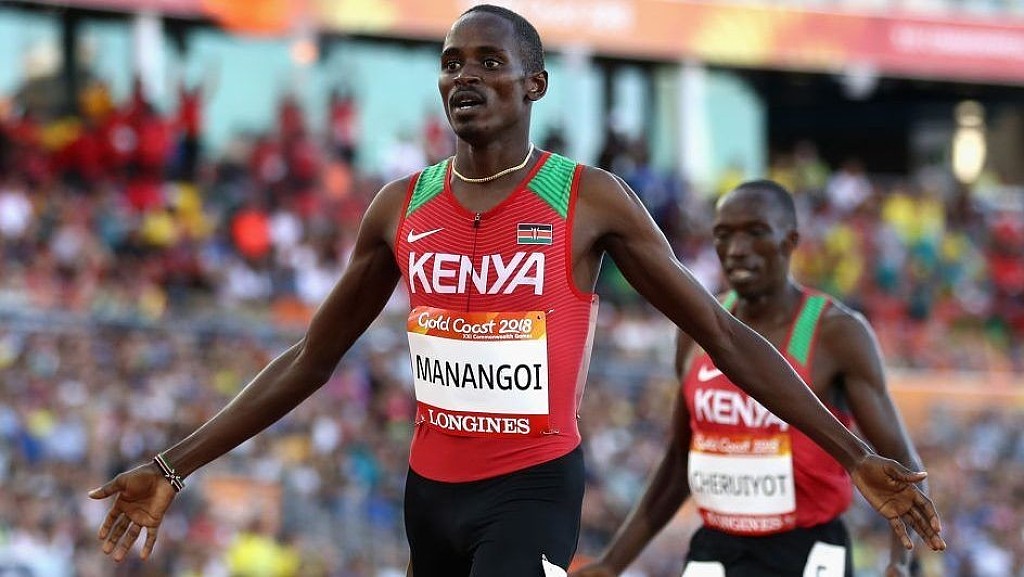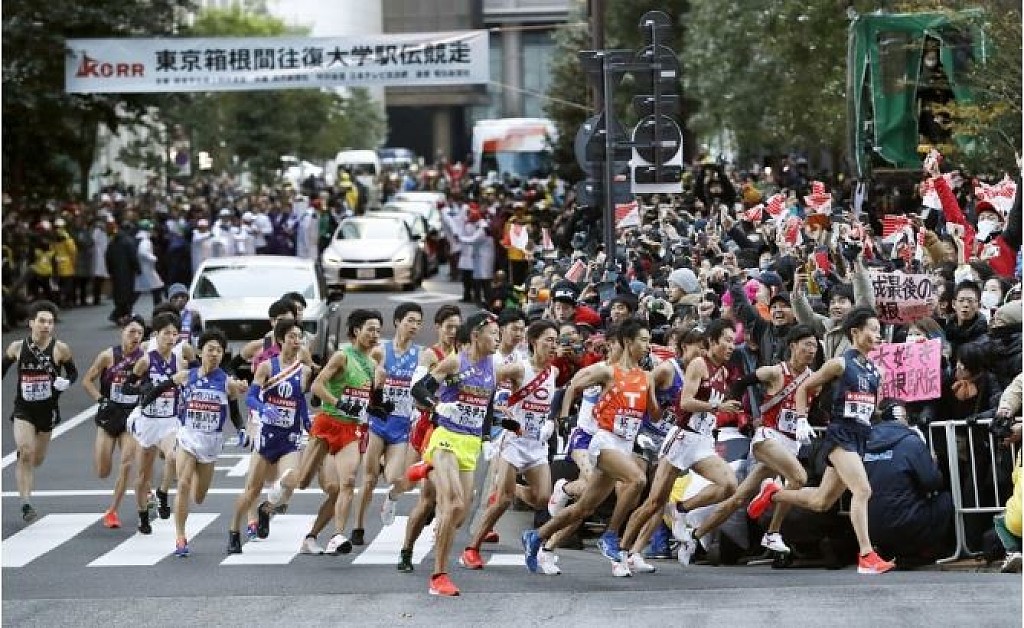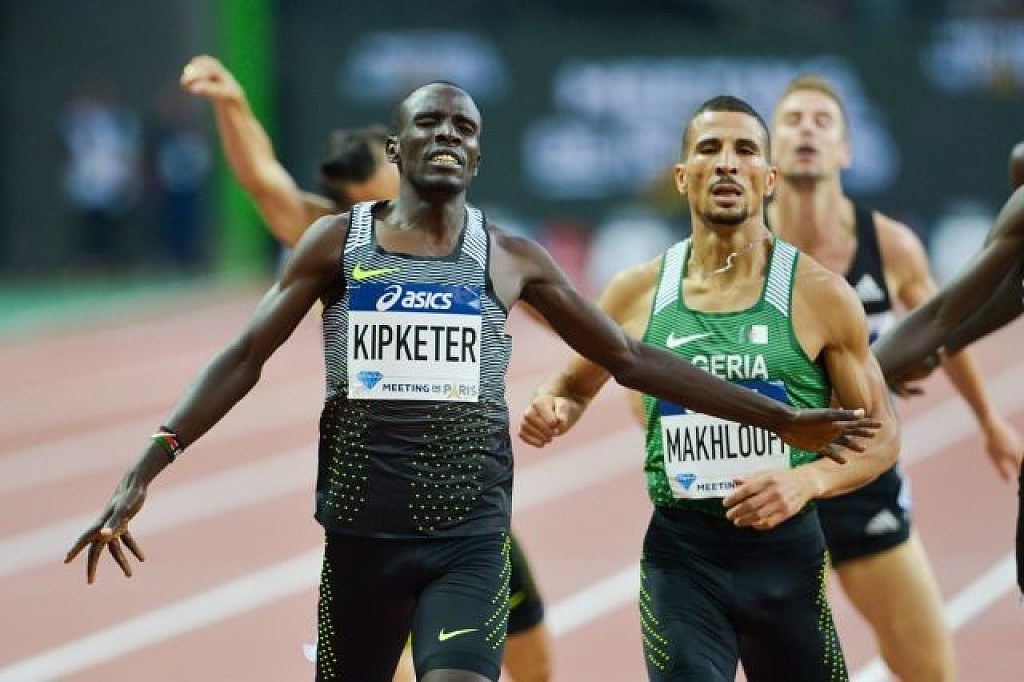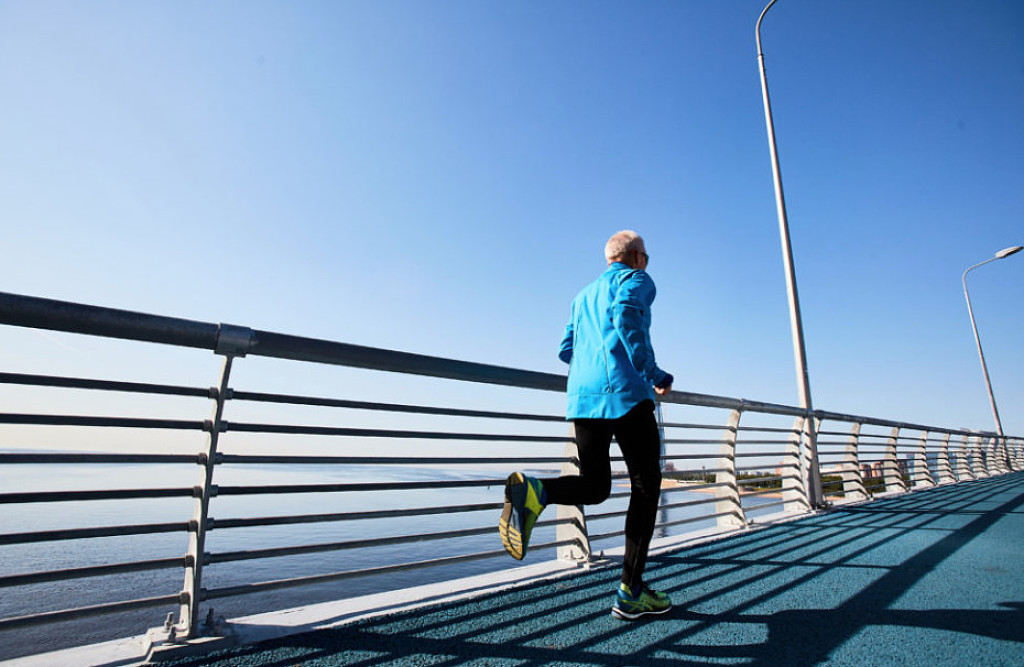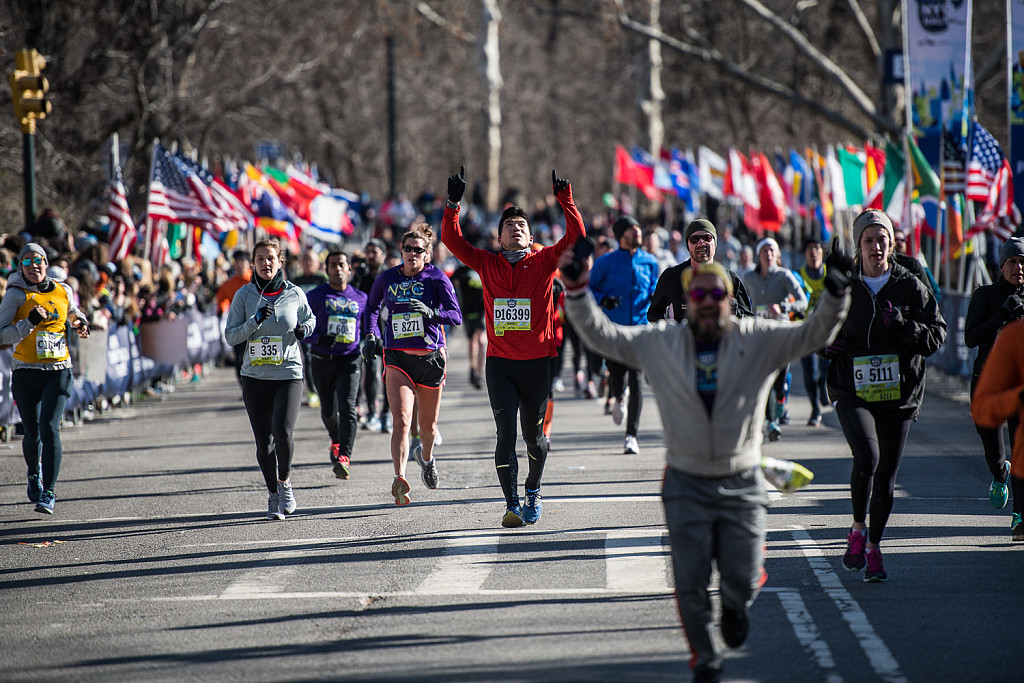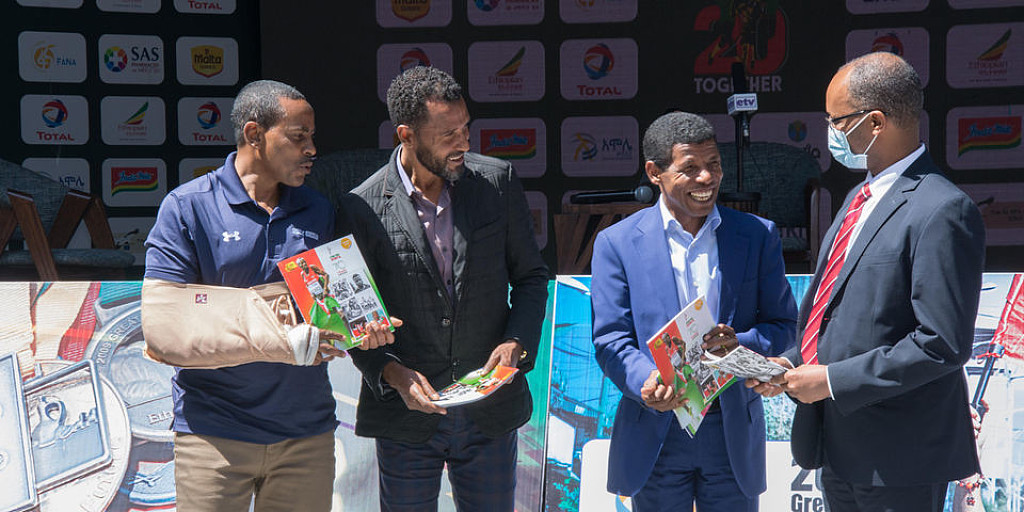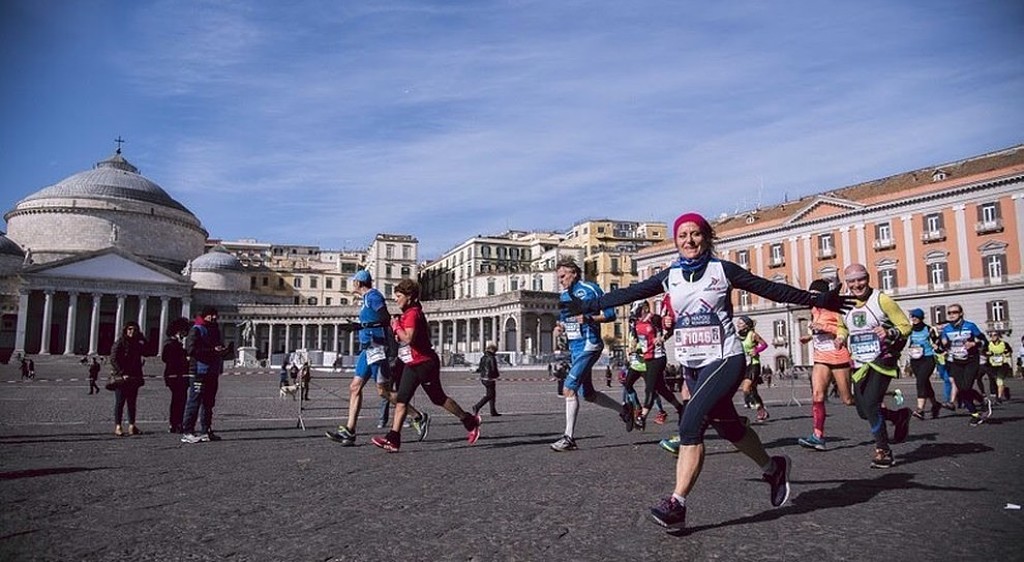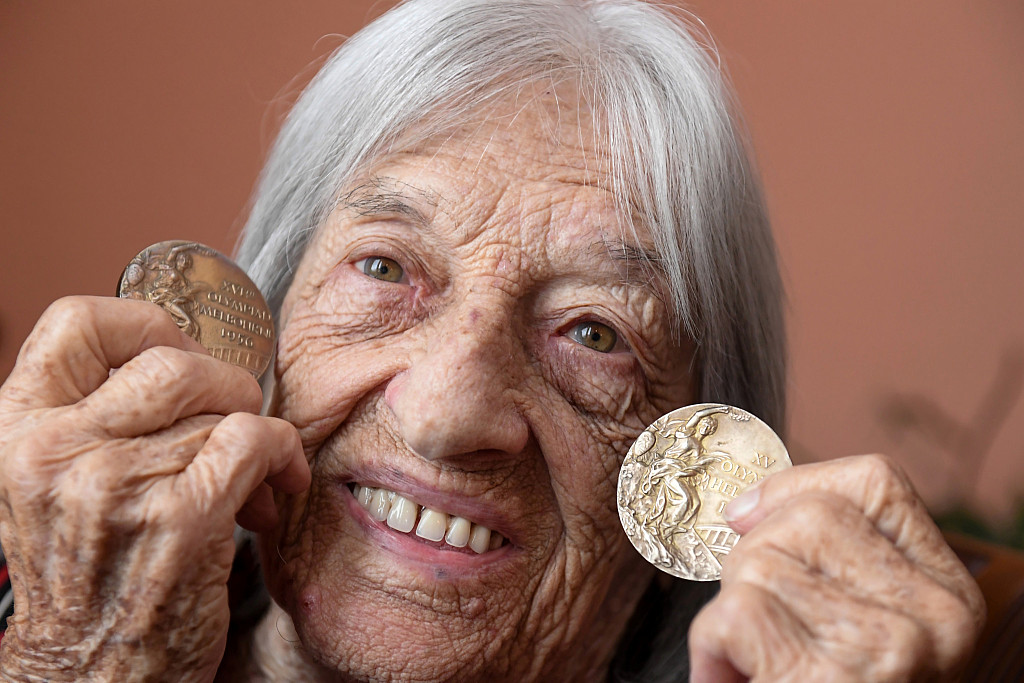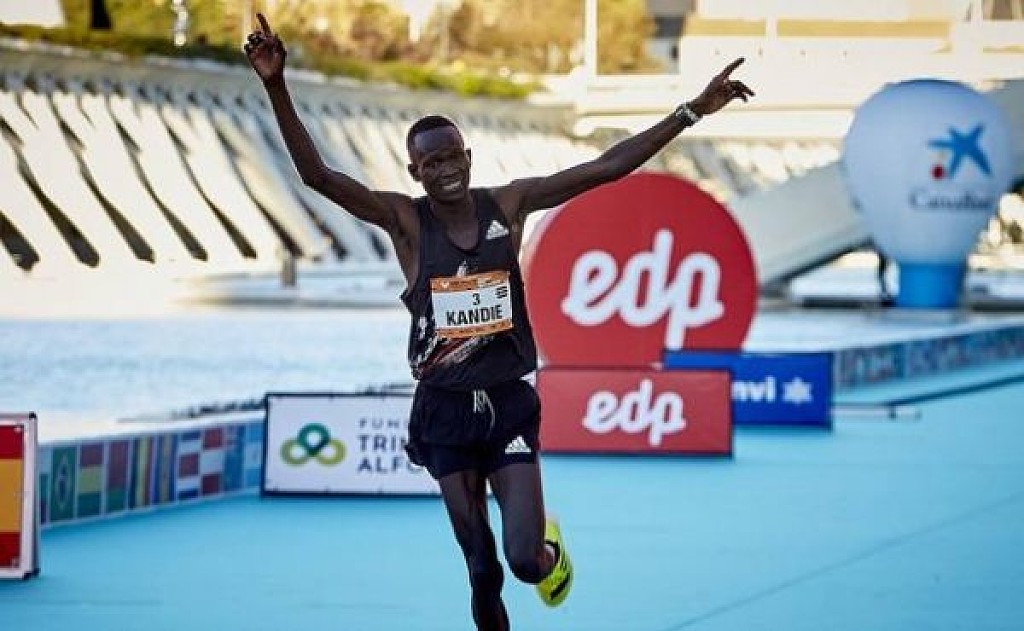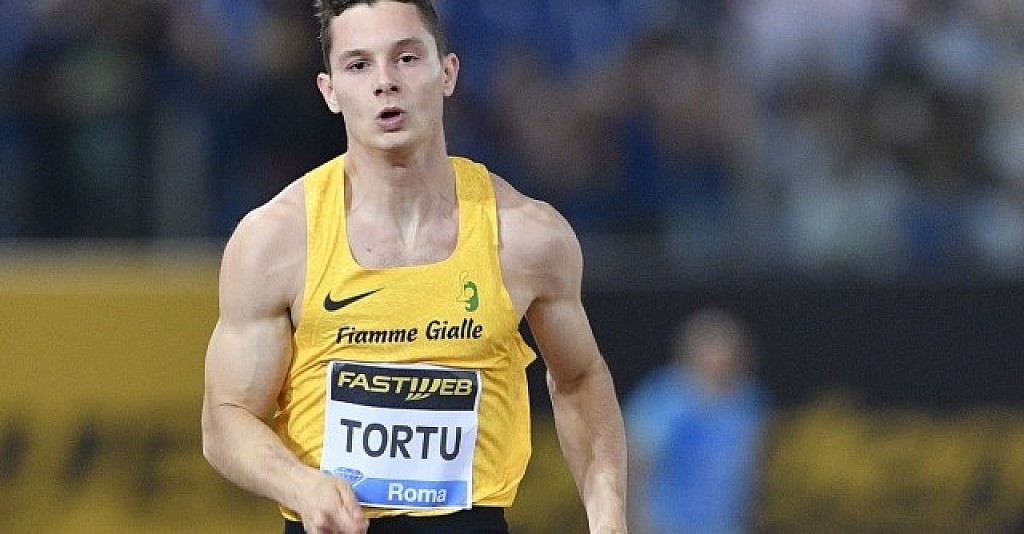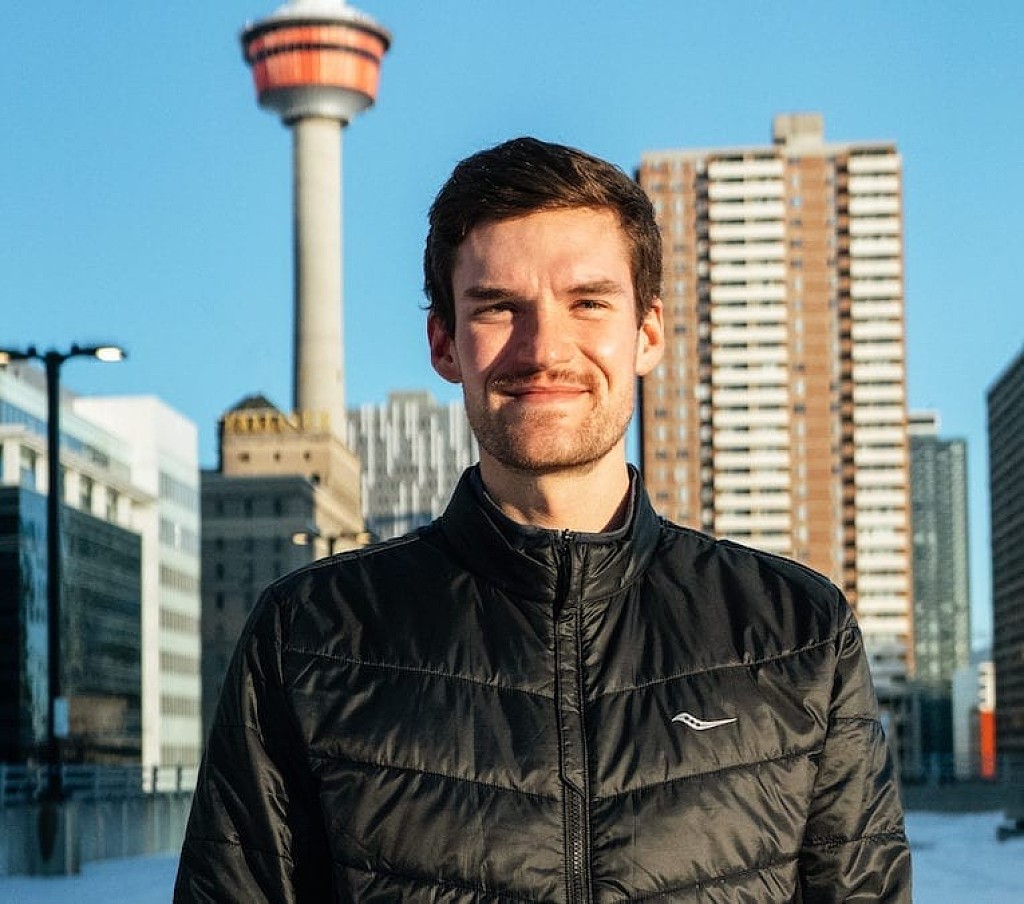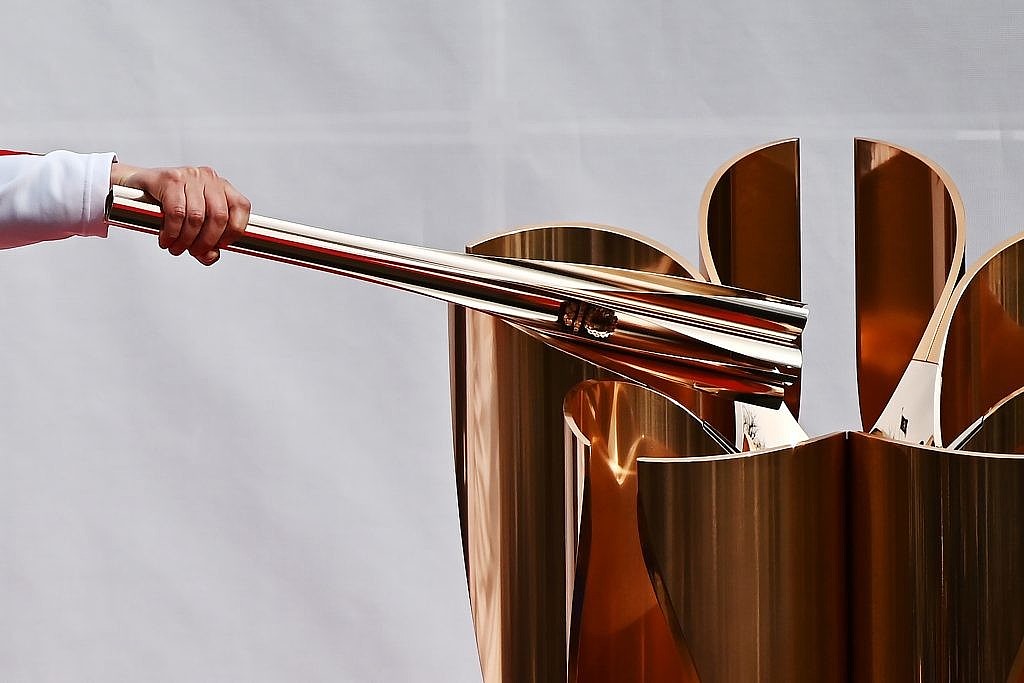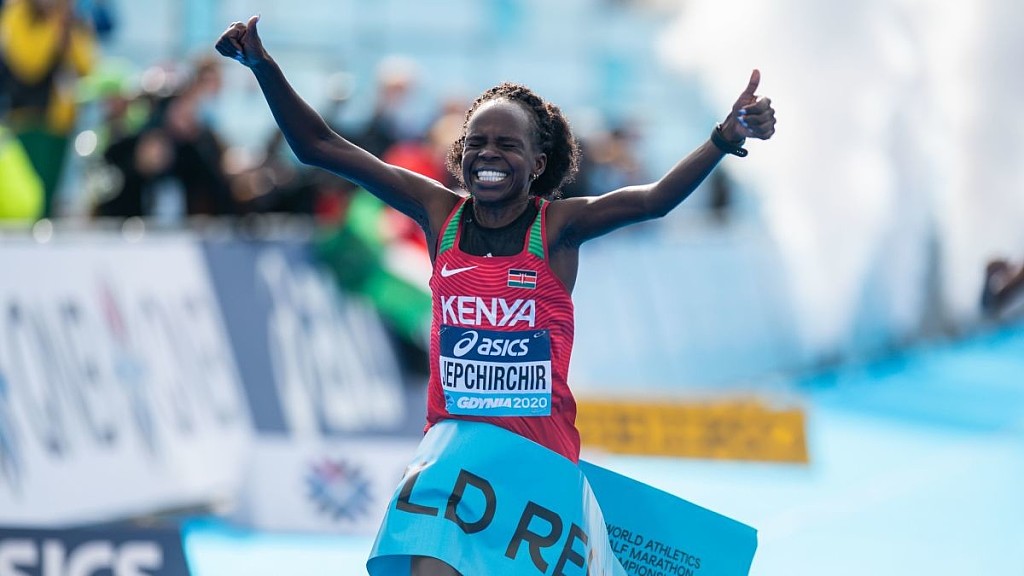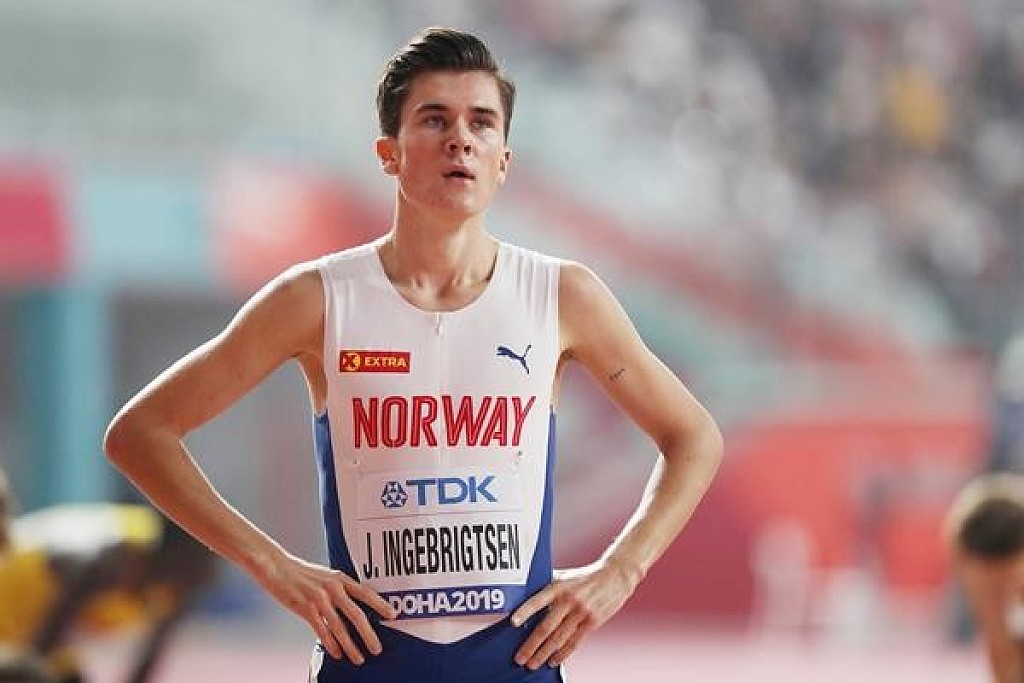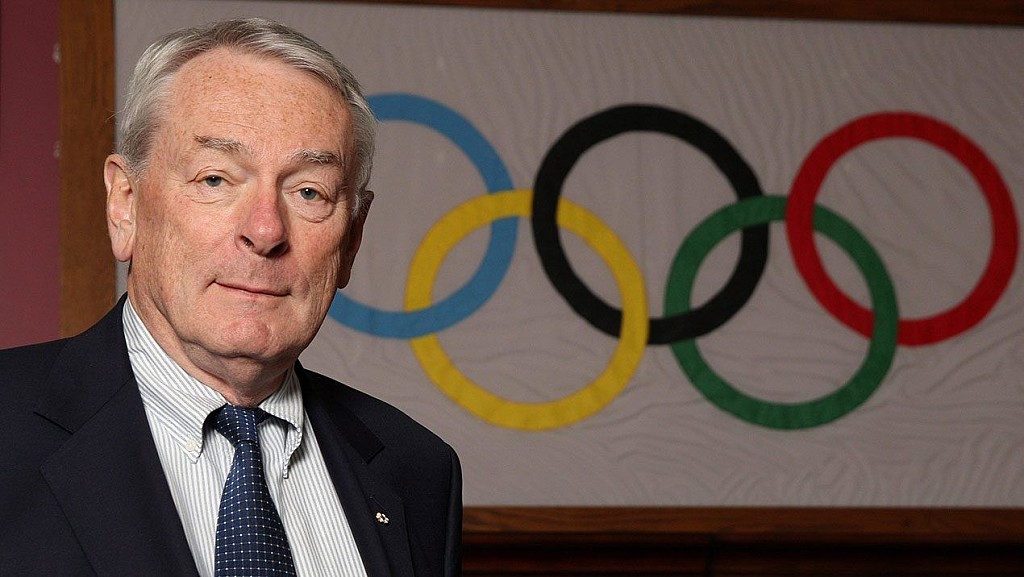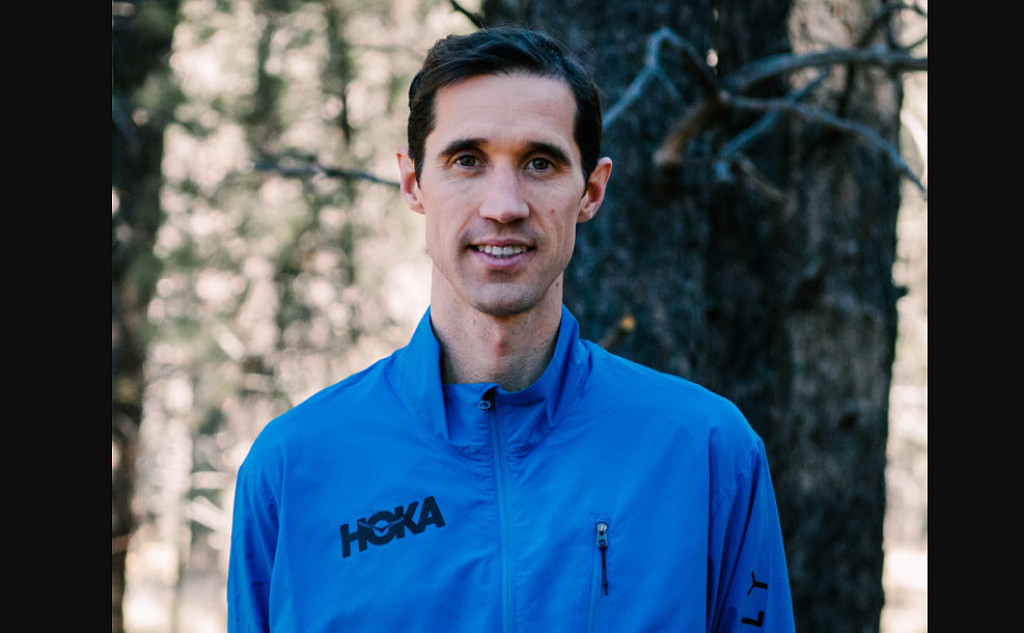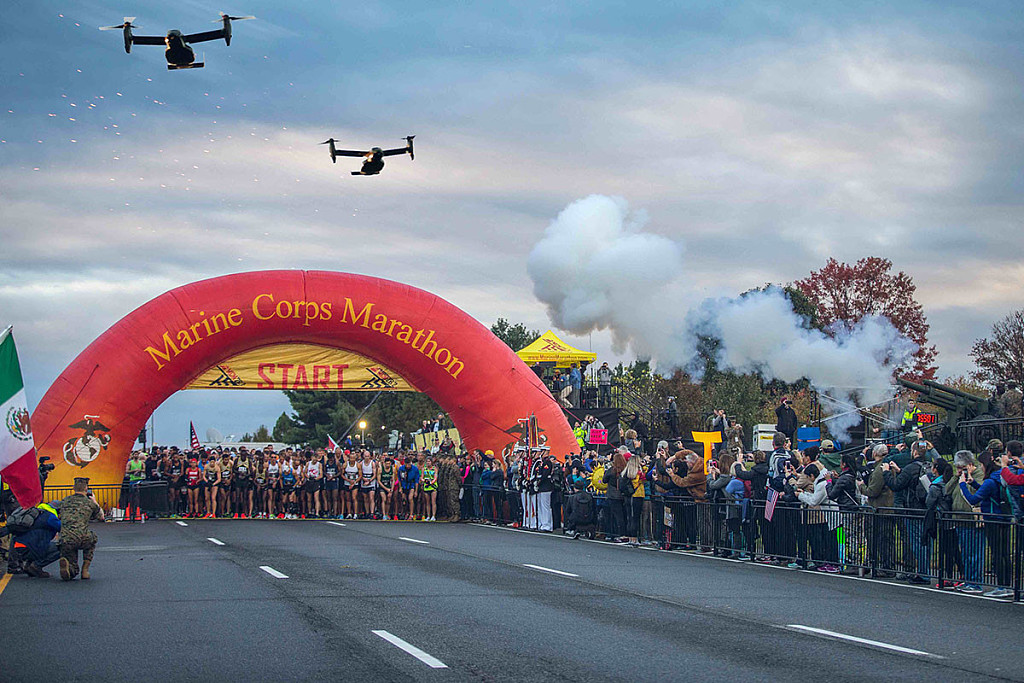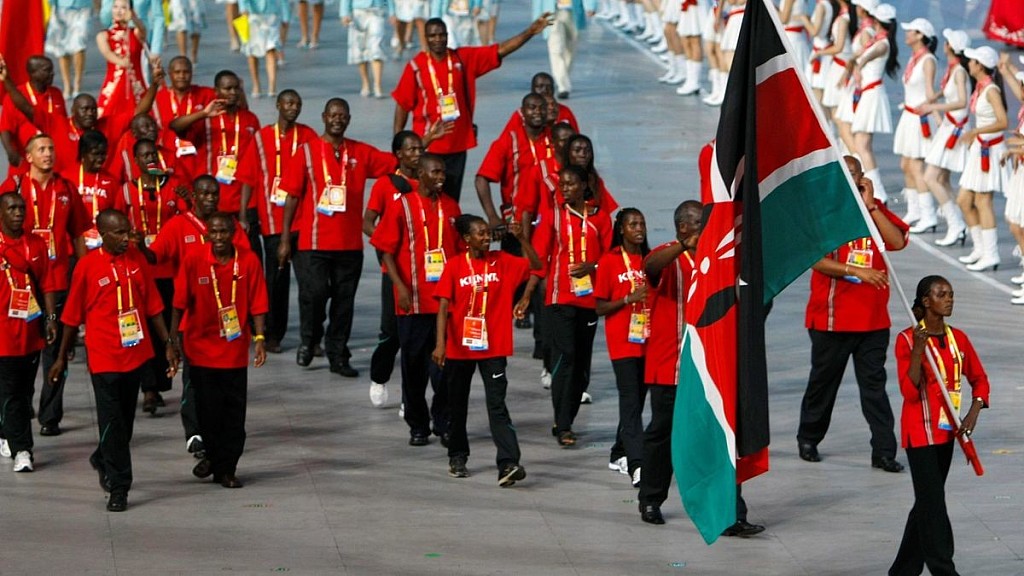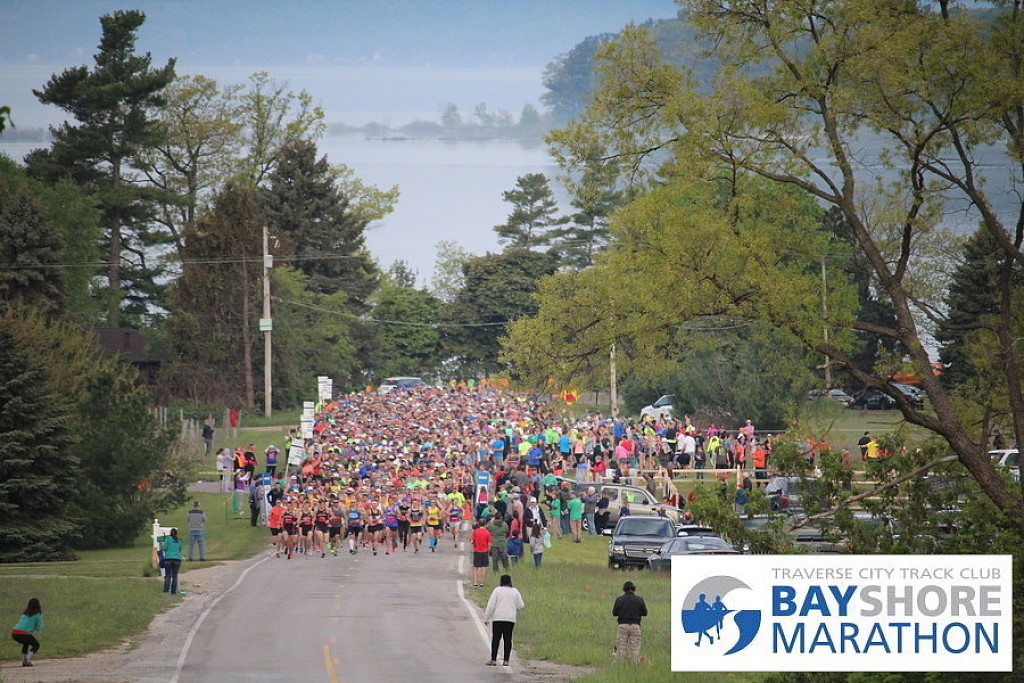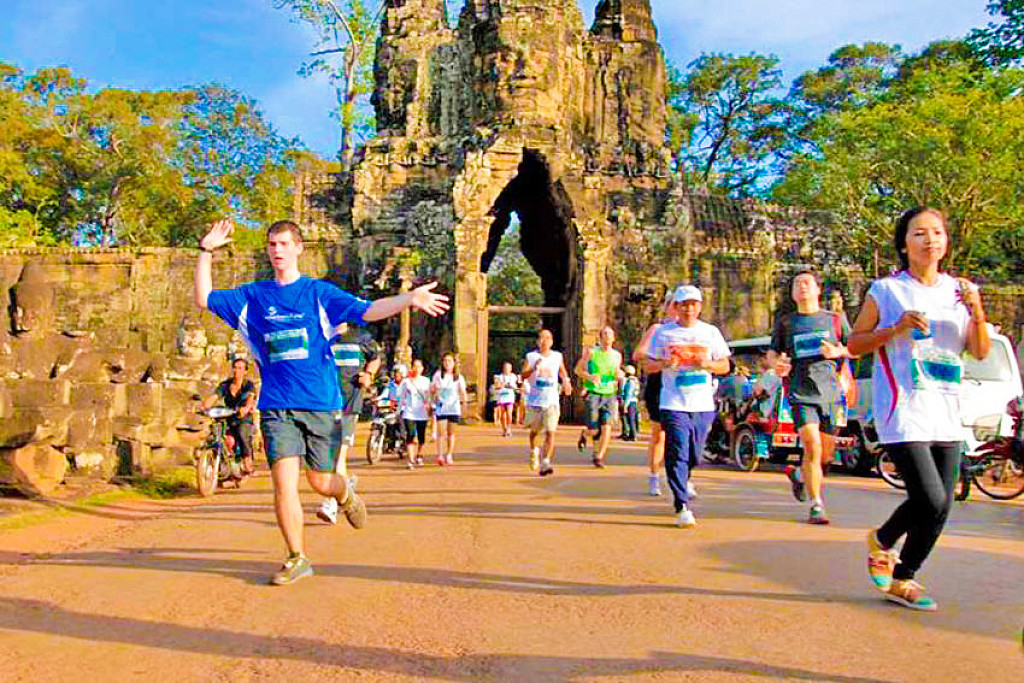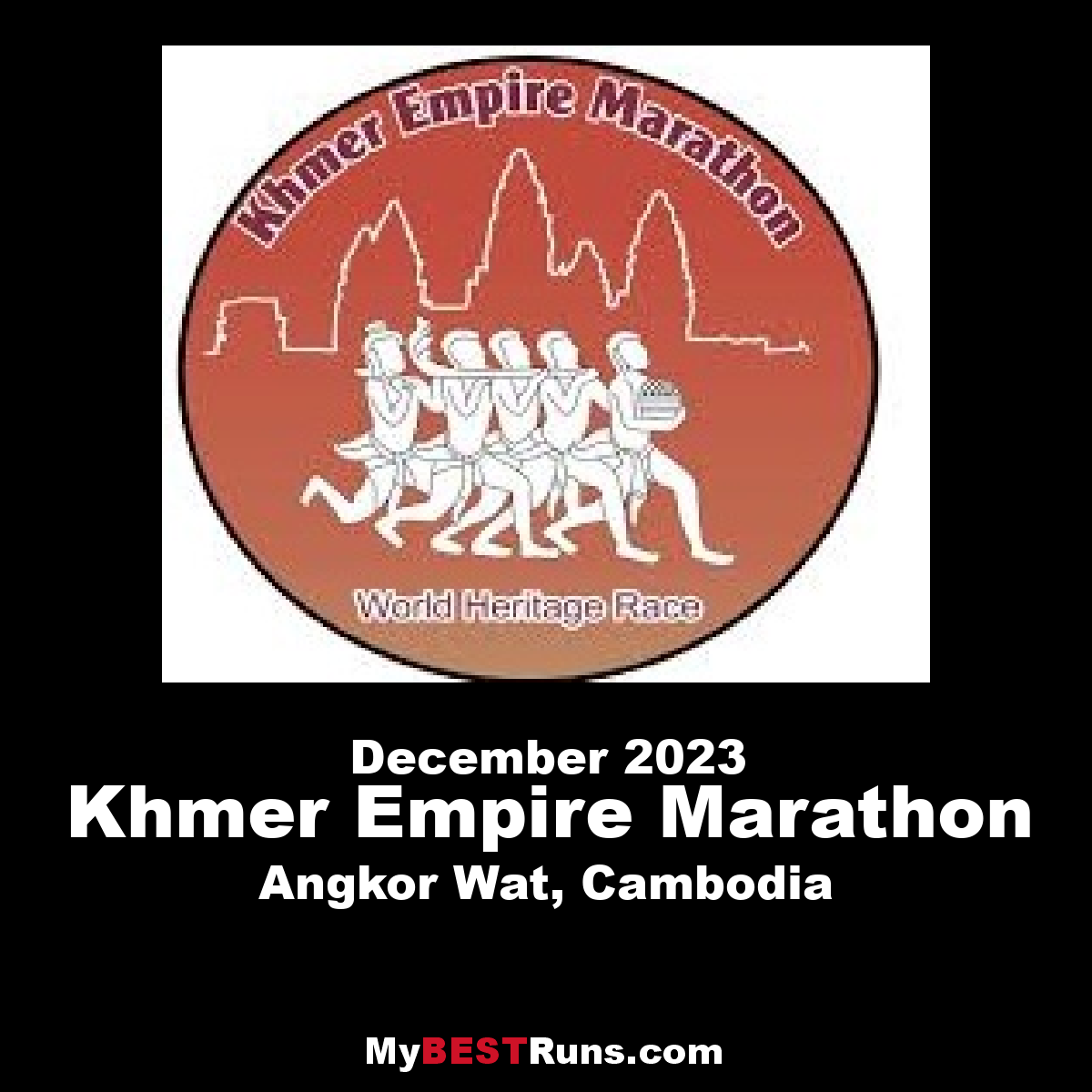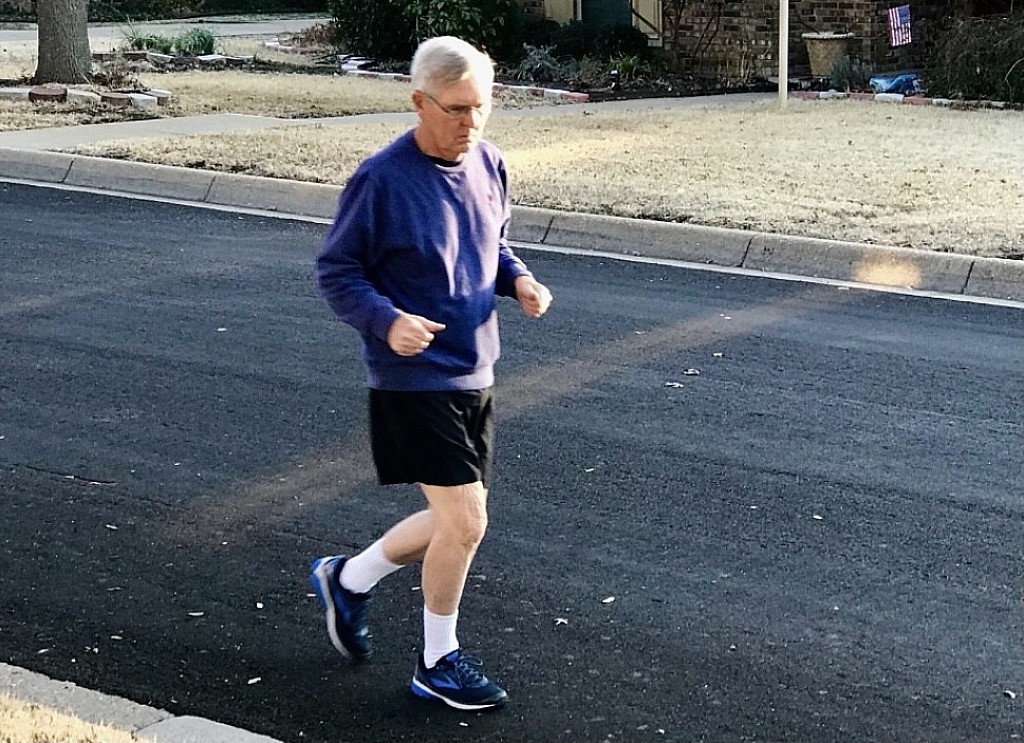Running News Daily
Running News Daily is edited by Bob Anderson in Mountain View, California USA and team in Thika Kenya, La Piedad Mexico, Bend Oregon, Chandler Arizona and Monforte da Beira Portugal. Send your news items to bob@mybestruns.com Advertising opportunities available. Over one million readers and growing. Train the Kenyan Way at KATA Running Retreat Kenya. (Kenyan Athletics Training Academy) in Thika Kenya. Opening in june 2024 KATA Running retreat Portugal. Learn more about Bob Anderson, MBR publisher and KATA director/owner, take a look at A Long Run the movie covering Bob's 50 race challenge.
Index to Daily Posts · Sign Up For Updates · Run The World Feed
Naples Daily News Half Marathon is ready for Sunday with COVID-19 protocols in place
A couple thousand runners, shoulder to shoulder, eagerly waiting for the start.
That's been the scene at the start of every Naples Daily News Half Marathon until Sunday.
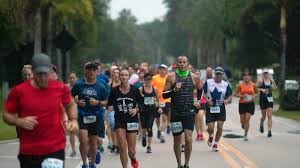
And Mitch Norgart is just fine with that. The president of Gulf Coast Runners, which runs the event, is simply happy there will be a 2021 NDN Half Marathon, no matter what it looks like.

"We're just thankful," Norgart said, pointing as much to the important fundraising for the organization's youth development the Half Marathon creates as to the chance for runners to participate.
Like anyone trying to stage an event during the coronavirus pandemic, the half marathon has taken layers upon layers of planning to keep runners safe. In previous years, it was to keep them safe from things like traffic on the streets of Naples. Now it's entirely something different.
"We have three people that are 10 feet apart start every five seconds," Norgart said. "We can actually start 1,000 people in 15 minutes and keep all of these people at least six feet apart throughout the entire starting process. They have to keep a mask on up until they start the race.
"We hit them with hand sanitizer and a mask and a bottle of water once they cross the finish line. There are no tents, no massage therapy like in previous years or things like that. They get a bag with a banana, orange and a power bar. We ask them to leave the premises."
"We had to give the City of Naples a 10-bullet point outline of how we're going to conduct the races," Norgart said. "We got approval from city council based upon us meeting with Pete DiMaria, who's the fire chief. He's also in charge of emergency command.
"We met with them and the police department, the fire department, and city manager, deputy city manager, and community events."
That race with 150 runners went off well. Gulf Coast Runners hired a videographer who had a drone and a photographer to document the start of the race so they could research how it all went, and also share that with the city.
"We really wanted to prove, not just to ourselves, but to our members and most importantly our powers-that-be at the city, that we could safely stage a race," Norgart said.
For elite runners, there's a different mandate. They must have two negative tests within seven days of the race. And they will line up at 6:55 a.m., ahead of the usual 7 a.m. en masse start. The other reason for that is USATF goes by a gun time, not a chip time. Norgart is well aware of some of the financial situations of runners, so Gulf Coast Runners is offering to cover the cost of the second of the two COVID-19 tests.
"They have to provide us with the proof (of the negative tests)," Norgart said. "Each one of the tests have to be 48 hours apart."
Because runners are generally health-conscious, and Gulf Coast Runners has been very communicative regarding the procedures, Norgart isn't that concerned that protocols will not be followed. Nevertheless, race marshals, volunteers, and even some city police will be on hand to make sure they are. The city also has a mask mandate.
"They are dedicated athletes who, if they want to race a Gulf Coast Runners race ... they know what's expected of them and they risk being disqualified, and they know that," he said.
(01/14/2021) ⚡AMPby Greg Hardwig
Naples Half Marathon
Why run Naples? It's a flat, fast and shady loop. Spirits are always really high, in part from the carbed-up pasta feeds and also because of the really colorful Coolmax shirts! The finish line is where the party begins, with unique quality medals to all finishers who finish within the race time limit, door prizes including weekends at beach front...
more...Mental tricks for runners
Sometimes a run feels hard from the start—maybe you didn’t sleep well the night before or you’ve had a stressful day at work. Other times, the difficulty sneaks up on you. Things started out okay, but now you’re barely halfway through and are already ready to call it quits. Sound familiar? We’ve all been there. The next time you’re having a less than awesome run, call on one of these tried and true strategies, and there’s a good chance you’ll make it to the finish.
Repeat a Mantra
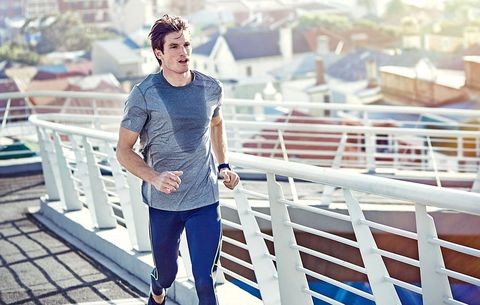
It’s a good idea to have a few of these in your back pocket for difficult days. Think about what motivates you and what fires you up; if you’re gutting out a tough workout, you might want to silently repeat your race PR or a hoped-for Boston qualifying time. Visualizing a goal and connecting it to what you’re currently doing is a good way to spark motivation. Alternatively, a mantra can be a short phrase such as, “I love hills!” or “strong, powerful and smooth.” You can even channel the name of a rival runner—whatever works!

Zone Out
Do you love listening to music on a run? Save a special playlist for only the toughest workouts—listening to those sacred pump-up songs will feel like a treat. Another mental tricks worth trying is to identify a fellow runner or landmark in the distance and imagine he, she or it is a magnet pulling you along. It sounds odd, but we promise it actually works!
Find a Friend
If you know a run (or race) is going to be a challenge before you even begin, recruit a buddy to keep you company. Even if they only join you for a few miles, having that extra motivation is crucial. If a real-life running bud isn’t a possibility, consider a phone call with a friend over Bluetooth headphones or checking in via text before and after the run.
(01/13/2021) ⚡AMPby Colorado Runner
Justin Gillette has won more marathons than most people have entered, and he's hoping to win many more
In 1999, when Justin Gillette was 16 years old and living in Ironton, Mo., he and a friend decided to run a marathon. Despite his lack of experience at the distance, the race went well and he was immediately hooked. Two years later, he won his first marathon, and he has gotten used to winning ever since. Today, Gillette — who now lives in Goshen, Ind., and boasts a marathon PB of 2:25:44 — has an incredible 114 marathon wins to his name, and he hopes to add even more to his resume. In fact, if he can hit 200, he’ll get free pizza for life at a pizza shop in his hometown called the Iron Mule. It’s a lofty goal, but with free pizza on the line, it’s well worth the time and effort to get there.
Gillette’s winning ways
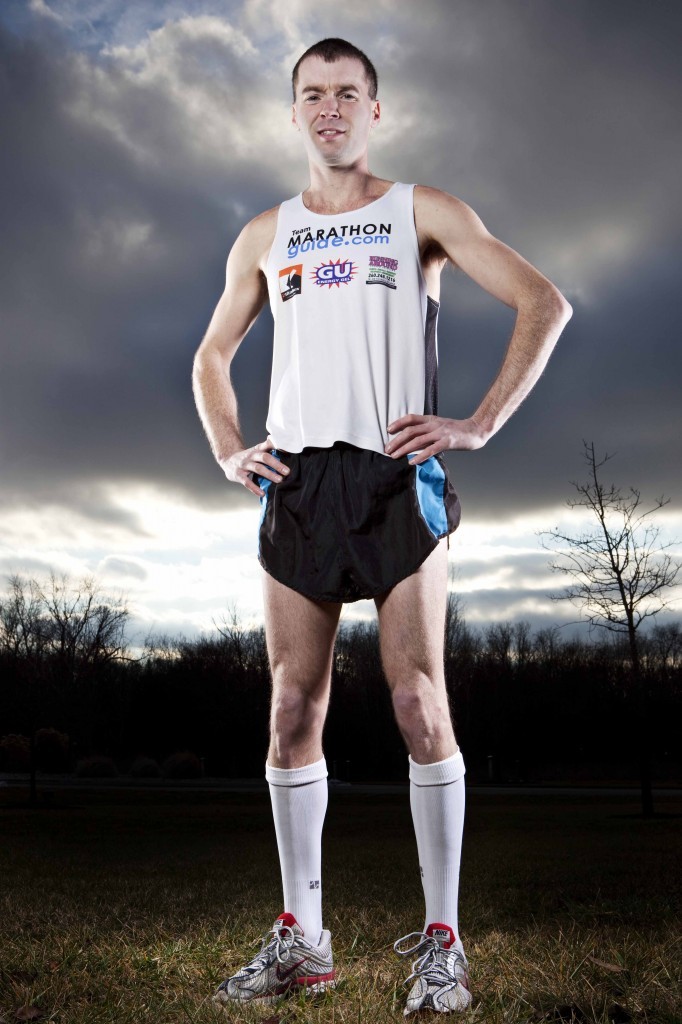
A long time has passed since Gillette won his first marathon, but he’s still winning races regularly. In November, he ran back-to-back marathons at an event in Fort Worth, Texas, called the Texas Quad, crossing the line first in both and securing the 113th and 114th wins of his career. This was only Gillette’s third time running marathons on consecutive days, and while he says “there is a steep learning curve” when it comes to back-to-back racing, he fared pretty well.
“If you run too hard on the first day then you’ll have nothing left for the second day,” he says. “I wanted to get in two quality races regardless of finish place.” Gillette says he left Texas feeling satisfied with both efforts, and getting the two wins was just a bonus. He also notes that this was his first race win in Texas, which leaves only 15 states in which he hasn’t won a marathon. He hopes to check off all 50 states at some point in his career.
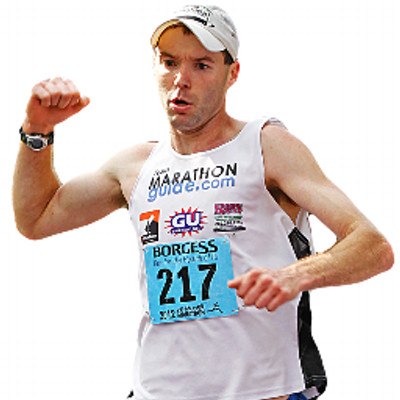
Gillette has four children, ages two up to 11, he operates a firewood business and he coaches a number of athletes. On top of all this, he still finds time to train and, of course, race. He tries to run as many marathons as he can each year, but the total number depends on two factors: his home life and how his legs feel. “I have to be a present dad and husband,” he says. In 2020, despite the pandemic, lockdowns and a calf injury, Gillette managed to win 13 marathons, noting that it will take him several more years of winning the same numbers of races to reach 200.
The pizza bet
Before Gillette made the deal at the Iron Mule, he had a similar (although much smaller-scale) agreement with the owner of a restaurant in the Bahamas. It was 2015, and Gillette was preparing to run the Bahamas Marathon. The night before the race, he went to dinner with his wife and friends, and when the owner asked why they were on the island, Gillette responded candidly: “I mentioned that I was there to win the marathon.” The owner laughed and told Gillette that if he won the race, he would eat free at the restaurant for life. As usual, Gillette got the win, and he returned the next night for a meal on the house.
"Not long after that I was at the Iron Mule sharing the story with Coach B,” Gillette says. Coach B is Don Barzowski, owner of the Iron Mule and coach of the high school cross-country team in Ironton. “He offered the same deal at his restaurant — free food for life, but only once I have won more marathons than anyone in the U.S.” Gillette is close, and he currently ranks second on that list, only behind Chuck Engle, who has won “around 200” marathons. Gillette isn’t sure of Engle’s exact tally, but he says he believes Engle has retired, so the total number to beat won’t be changing anytime soon. “My plan is to keep focused on myself and if I get in the 180 to 190 marathon win total, then I’ll check on the record.”
Gillette says he eats at the Iron Mule whenever he visits Ironton, and he always makes sure to update Barzowski on his progress. “Each win, I tell him that I’m getting closer, but then he serves me humble pie and says I’m also getting older,” Gillette says. “At 114 wins, I know it’s a stretch to catch Engle, but it doesn’t mean I wont try my best. Free pizza is a motivator.”
(01/13/2021) ⚡AMPby Ben Snider-McGrath
Registration Opens For 2021 Bank of America Chicago Marathon
The Bank of America Chicago Marathon opened its registration Tuesday for the 2021 fall race.
Chicago Marathon said their guaranteed and non-guaranteed entry applications are officially open, offering several opportunities for individuals to submit entries for the race.
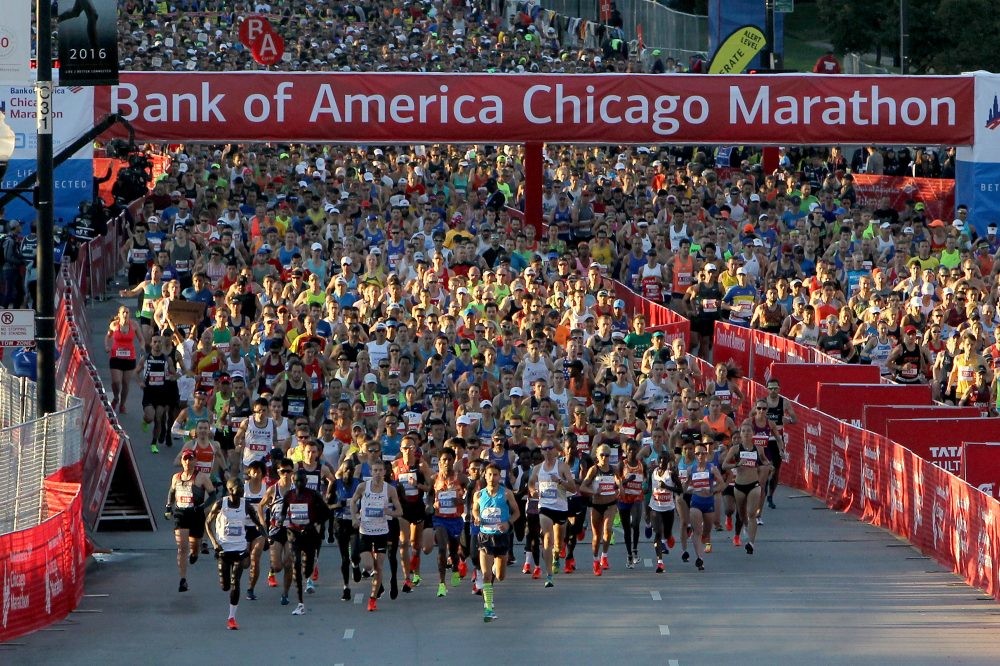
In order to receive a guaranteed entry, the applicant must agree to the terms of the entry or qualify for the entry, according to the organization's social media post.

"If you meet the marathon qualifying standards, you can guarantee your spot in the 2021 Bank of America Chicago Marathon as a time qualifier," the marathon's Instagram post read.
The organization said individuals who finished the Chicago Marathon five or more times within the last 10 years can guarantee a spot in the 2021 race as a "legacy finisher." Applicants interested in running with an international tour group can also guarantee a spot in the Chicago Marathon by applying online.
"Individuals not eligible for a guaranteed entry can apply for a 2021 Bank of America Chicago Marathon entry through the non-guaranteed entry drawing application," the organization said.
Chicago Marathon said after the five-week application window closes, names will be selected from a pool of all non-guaranteed entry applicants for a spot. Individuals accepted will be notified through email in March, the organization wrote in a post.
Marathon race organizers confirmed in November that planning has begun for the 2021 race, with hopes of returning to the streets after the coronavirus pandemic forced the iconic event to turn virtual last fall.
The event is currently slated to take place on Oct. 10, according to race organizers, who said they "are working closely with the City of Chicago on race weekend plans that align with Chicago’s public health and safety guidance."
Organizers of the Bank of America Chicago Marathon announced in December a multi-year media partnership agreement with NBC 5 and Telemundo Chicago for coverage of the Chicago Marathon and Bank of America Shamrock Shuffle through 2023.
NBC 5 has been a Bank of America Chicago Marathon media partner for the past 12 years, and Telemundo Chicago since 2017.
(01/13/2021) ⚡AMPby NBC
Bank of America Chicago
Running the Bank of America Chicago Marathon is the pinnacle of achievement for elite athletes and everyday runners alike. On race day, runners from all 50 states and more than 100 countries will set out to accomplish a personal dream by reaching the finish line in Grant Park. The Bank of America Chicago Marathon is known for its flat and...
more...2021 Eau Claire Marathon to be held in-person
As you know, the Eau Claire Marathon went virtual in 2020 due to the pandemic. This year, however, that will change.
"We will be racing together, in-person, in 2021," said Emi Uelmen, race director.

However, there's a catch. The event will not be held on the traditional first weekend of May. Instead, the event will be held on the last weekend of September (25 and 26).
That doesn't mean nothing is happening on that first weekend of May. The Eau Claire Marathon will host a new COVID-friendly racing series called Bridge2Bridge. This will include three races.
Saturday, May 1st, 4:00 PM – 1-mile race
Saturday, May 1st evening – 5-mile race
Sunday, May 2nd morning – 10-mile race
(01/13/2021) ⚡AMPby Shannon Hoyt
Eau Claire Marathon
The Eau Claire Marathon is a USATF certified, Boston Marathon qualifying race. Since 2014, over 250 Eau Claire Marathon runners have qualified for the Boston Marathon. All races start and finish in Carson Park, a 134 acre peninsula surrounded by Half Moon Lake. As you exit the park, you will cross the first of 11 bridges. Making your way through...
more...2021 Hannover Marathon won´t take place, the event has been cancelled for second year due to the pandemic
Lower Saxony’s largest running spectacle, planned for 17–18 April, will fall victim to the current pandemic situation, as it did last year. The next HAJ Hannover Marathon will be held on 3 April 2022.
“We planned a number of scenarios and possibilities to implement a responsible marathon in an adapted form,” explained organiser Stefanie Eichel. “But the current infection situation makes this absolutely impossible.”
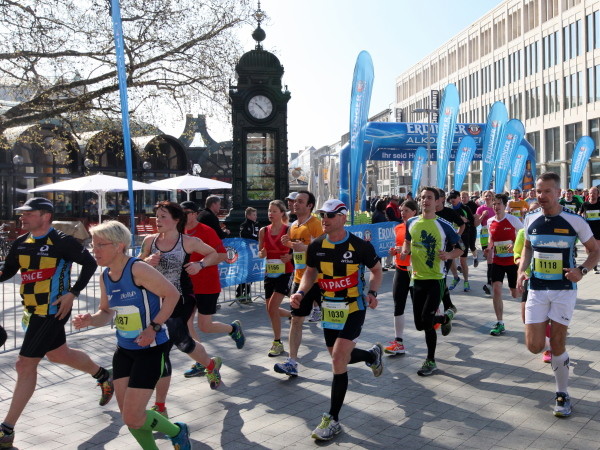
A final decision has not yet been made on a possible elite-only race over the marathon distance for the German Marathon Championships, which were planned for April in Hannover. “We are currently in talks with the German Athletics Association and our athlete manager Christoph Kopp to give the athletes a chance to qualify for the Olympic Games in Tokyo,” said Eichel.

In the previous year, almost 30,000 active participants had already registered for the various competitions as part of the 30th HAJ Hanover Marathon, which will now have to celebrate its milestone event next year.
But there is still a small glimmer of hope for autumn: “If a running event with a good number of participants can be implemented responsibly, we will hopefully be able to give the starting signal for a really nice new running experience,” promises Eichel. “The plans for this are already on the table.”
(01/13/2021) ⚡AMPADAC Hannover Marathon
It is not only the gripping competition that makes the marathon in Hannover so captivating, but also the exceptionally attractive side programme.With numerous samba bands and musicians accompanying the athletes along their sightseeing tour through the city, a feel-good mood is guaranteed on the course. The city will be transformed with a mix of musical entertainment, shows and activities that...
more...Summa Health the new sponsor of Akron Marathon
Summa Health has been named presenting sponsor for the Akron Marathon Race Series through 2023, it was announced Tuesday.
“Summa has been a long-time partner of the Akron Marathon,” said Anne Bitong, president and CEO at Akron Marathon Charitable Corp. in a news release. “Since our inception, Summa has been our Official Sports Medicine sponsor supporting our medical aid stations across all events, and they’ve had more than 100 employees and volunteers support each race we’ve hosted with an incredible passion for this community.”
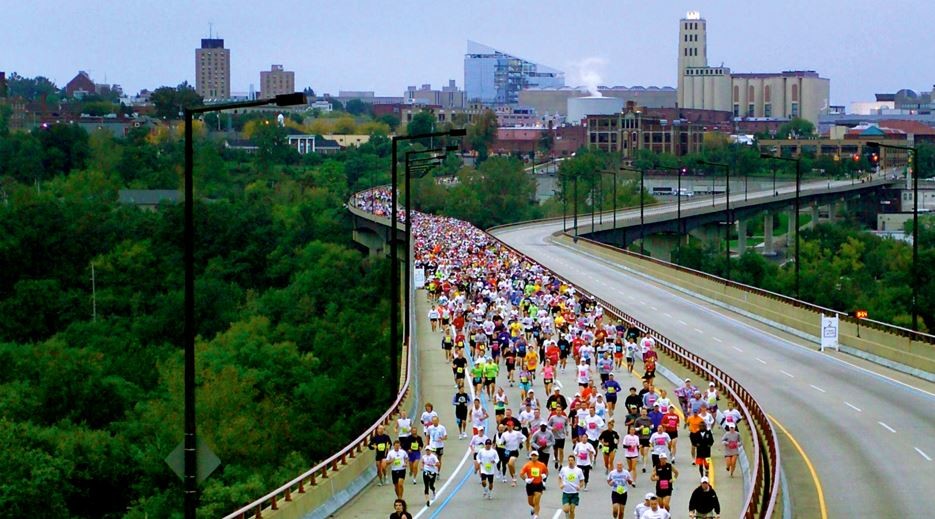
The race series encompasses three events with distances ranging from one mile to the marathon.

Previous presenting sponsor was Akron Children’s Hospital, which will continue supporting the marathon. It will sponsor the kids fun run Friday, Sept. 24.
Event organizers said they are working closely with Akron and Summit County Public Health officials regarding race-weekend plans that align with public health and safety efforts. Registration for 2021 events will be conducted through a tiered registration process, which allows a limited group of eligible individuals based on previous participation and event deferment from the 2020 races, on Wednesday, Jan. 13. The public registration window is scheduled to open Monday, Jan. 18.
2021 race dates (all are Saturdays)
• National Interstate 8k and 1 Mile - June 26
• Goodyear Half Marathon & 10k - Aug. 14
• FirstEnergy Akron Marathon, Half Marathon and Team Relay - Sept. 25
(01/12/2021) ⚡AMPby Marc Bona
Akron Marathon Race Series
The marquee event of the Akron Children’s Hospital Akron Marathon Race Series, the Akron Marathon, Half Marathon, & Team Relay presented by First Energy receives a fresh new look ! Runners will experience an unforgettable start inside the historic grounds of Stan Hywet Hall & Gardens before taking an exclusive foot tour of the City of Akron. The Goodyear Half...
more...Stay fit despite an ankle or foot injury
It’s an all-too-common scenario – you get inspired about a new exercise program, you excitedly launch into the first series of workouts, and within a week you’re laid up with a sore back, injured knee, aggravated shoulder or inflamed foot.
But there’s no reason that you have to lose fitness and gain weight when you’re injured. Many of the athletes and clients who I train find that they are more fit after rehabilitating an injury because they get a chance to try new forms of training during the healing period.
Ankle or Foot Injury Workout Basics
Perform the following workout 3x/week, with 48 hours rest between each workout

Complete 15 repetitions for each exercise.
Complete the two exercises back to back with minimal rest, then move on to the cardio booster.
Complete 60 seconds for each cardio booster.
Move 3-4x through these 3 stations (exercise 1 + exercise 2 + cardio booster)
Then move on to the next triple set!
Perform 30-60 minutes non-weight bearing cardio, like swimming or cycling, on the non-weight lifting days.
Ankle or Foot Injury Exercises
Machine Leg Extensions + Machine Leg Curls + Bicycle Cardio Booster
Incline Dumbbell Chest Press + Lat Pulldown + Rowing Machine or Elliptical Cardio Booster
Stability Ball Push-Up + Single Arm Dumbbell Row + Bicycle Cardio Booster
Weighted Crunches + Hanging Leg Raise + Bicycle Cardio Booster
For a little review on using exercise machines, please see my episode on weight-lifting machines. And to find out how to adapt your workout routine for other injuries, please check out my Quick Tips for knee injuries, shoulder injuries, and lower back injuries.
If you're dealing with a chronic or acute injury, I'm always happy to network with your physician and, with their input, design a customized exercise program for you to help you stay in the best shape possible.
Quick & Dirty Tip: You should not consider this to be medical advice, and you should follow a physician’s recommendation for movement about an injured joint. However, if your doctor tells you to simply rest for 2-4 weeks, you need to specifically ask them about alternatives to that all-too-common prescription. There's no reason that you can't stay in lean and fit while rehabilitating!
(01/12/2021) ⚡AMPby Ben Greenfield
2021 Little Rock Marathon changes date from March to November due to pandemic concerns
The annual Little Rock Marathon that was originally scheduled for March 6-7 has been changed to Nov. 20-21 due to coronavirus concerns.
If you have already registered for the marathon, you can move it to the race in November or defer your registration until 2022.

The 19th annual race brings thousands from across the nation and world to compete in Arkansas's capital city.
(01/12/2021) ⚡AMPOsaka Women´s Marathon is set to go ahead despite state of emergency
Despite the pending declaration of a state of emergency in the greater Osaka area as the coronavirus continues its rapid spread, the organizers of the Jan. 31 Osaka International Women's Marathon intend to go ahead with this year's race, in which Tokyo Olympic marathon team members Mao Ichiyama (23, Wacoal) and Honami Maeda (24, Tenmaya) are entered to run.
Last year the JAAF published strict guidelines for the staging of road races amid the coronavirus pandemic. One of the requirements for holding a race is that no declaration of a state of emergency be in place.

On Jan. 7 the government issued such a declaration for Tokyo and is surrounding three prefectures of Saitama, Chiba and Kanagawa. Osaka and neighboring Kyoto and Hyogo have asked to be added to that list.

If the terms of the state of emergency are the same as the earlier one for the Tokyo area, it would last until at least Feb. 7. This would put the Osaka International Women's Marathon inside the emergency period, but race organizers insist it would still be held.
The declaration would limit the number of people able to attend events, but in principle it would still be possible to stage sporting events. Osaka organizers have already announced that Nagai Stadium, the marathon's start and finish point, will not be open to the public, and have asked that people watch on TV rather than cheering courseside.
Fewer than 100 athletes are entered, and all will be required to present a negative PCR test in order to participate.
(01/12/2021) ⚡AMP
by Brett Larner
Osaka International Womens Marathon
The Osaka International Ladies Marathon is an annual marathon road race for women over the classic distance of 42.195 kilometres which is held on the 4th or 5th Sunday of January in the city of Osaka, Japan, and hosted by Japan Association of Athletics Federations, Kansai Telecasting Corporation, the Sankei Shimbun, Sankei Sports, Radio Osaka and Osaka City. The first...
more...British sprints coach Lloyd Cowan died at the age of 58
During his 20-year coaching career, Cowan guided many leading British sprinters, including 2008 Olympic 400m champion Christine Ohuruogu, 2010 European 110m hurdles champion Andy Turner and his son Dwayne Cowan, part of Britain’s bronze medal-winning 4x400m quartet at the 2017 World Championships.
A talented athlete in his own right, Cowan was selected for the 1984 Olympics in the 110m hurdles but was unable to take his place on the team due to illness. Ten years later, he represented England at the Commonwealth Games in Victoria and narrowly missed out on making the final.
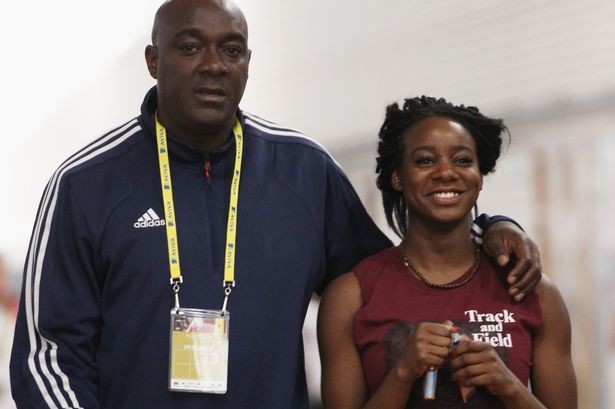
After retiring from competitive athletics in his late 30s, he moved into coaching and soon made a name for himself as one of the leading sprints coaches in the UK.
Ohuruogu was one of Cowan’s first major successes. She won the Commonwealth title in 2006, world titles in 2007 and 2013, and the Olympic title in 2008.
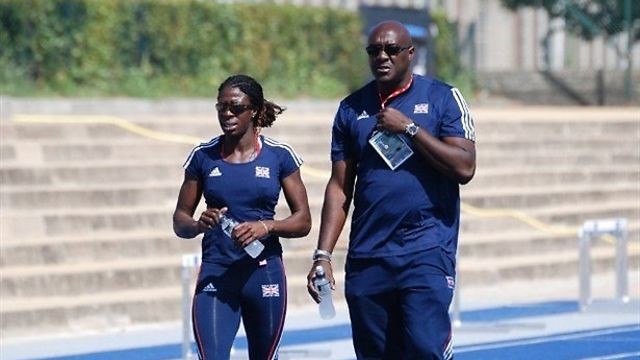
Turner, under Cowan’s guidance, also became a frequent medallist at major championships. He won European bronze in 2006, European gold in 2010 and world bronze in 2011.
Cowan also coached several national champions and international relay medallists, including European 4x100m champion Bianca Williams, 2008 Olympic 100m hurdles finalist Sarah Claxton, 2012 world indoor 4x400m champion Shana Cox, 2009 world 4x100m bronze medallist Simeon Williamson, European indoor 4x400m silver medallist Amber Anning, and sub-10-second 100m sprinter James Dasaolu.
In 2013 Cowan was appointed lead sprints coach at UK Athletics. Later that year, he was awarded the prestigious Ron Pickering Memorial Award for Services to Athletics, and in 2015 he was appointed MBE (Member of the Order of the British Empire).
But it was the success of his son, Dwayne, which made Cowan most proud. A relative latecomer to the sport, Dwayne established himself as one of the top 400m runners in the UK in 2017. He won the 400m at the European Team Championships, clocked a PB of 45.34, and reached the semifinals at the World Championships in London before helping Britain to bronze in the 4x400m, recording the team’s fastest split (44.2).
“There will never be another Lloyd Cowan,” said Turner. “He knew me better than anyone. We had some amazing times and even better stories along the way. He made such a huge impact on my life. I owe him everything. I hope he realised how many lives he changed and how loved he was.”
World 200m champion Dina Asher-Smith paid tribute to the larger-than-life character. “Rest in power, Lloyd,” she said. “He was one of the pillars of our community and always had words of calm, wisdom and care for everyone. He knew when to make you laugh, when to be serious and most of all knew how to make you believe in yourself.”
“A really sad start to the athletics year,” added World Athletics President Sebastian Coe. “He was a great coach, mentor and teammate. A massive loss to the sport.”
(01/12/2021) ⚡AMPby World Athletics
Returning to fitness after an injury may be just what the doctor ordered
Being active is good for you, especially if you’ve been sidelined. “It’s important to stay mobile so you don’t make an injury worse or set yourself up for other ailments caused by inactivity,” says Lara Heimann, a physical therapist and yoga teacher in Princeton, NJ.
These steps can help you get back in the groove safely and effectively.
Get the OK From Your Doctor

If you have a serious health problem, check with your doctor or physical therapist before you start a new program. They’ll let you know if it’s safe to start up again and give you specific guidelines for your injury.

Start With Good Posture
Pay attention to your form. “When your posture is suboptimal, your chance of a reoccurring injury is greater,” Heimann says. “Look at this time as an opportunity to stand and sit taller and better.” Keep your spine long. Relax your shoulders. Move from the hips when you do full-body or lower-body exercises.
Change Things Up
Aim for variety instead of repeating the same exercises over and over. By varying your movement, you’ll avoid overloading or overstraining the area that was injured. This is the time for cross-training. “Walk, swim, or practice yoga -- and pay attention to your form,” Heimann says.
Dial It Down
Start exercising at a lower intensity than you normally do, or choose an exercise that’s less challenging. For example, if you usually lift weights, start with lighter weights. If you do squats, don’t go as far down as you used to. If you run, try walking first. Over time, you can inch back up.
Try Gentle Exercises
Low-impact activities or exercises that you can modify are good choices when you’re starting back up. Try yoga, Pilates, tai chi, swimming, water aerobics, rowing, or suspension training. Walking is another great option and may give you an added emotional boost. Studies suggest it helps lower stress and anxiety and boost your confidence.
Watch for Pain
If your workout hurts, scale things back. Try limiting your range of motion, doing a different type of exercise, or lowering the weight you’re using. Listen to your body and get help if you need it.
Enhance Your Recovery
Add small things to your routine that help you recover better. Take time to stretch. After your workout, do deep, 60-second stretches. Try a foam roller to gently stretch and massage your muscles around your injury. Get a weekly massage. Try a yoga class. Drink enough water to stay hydrated every day. Eat well.
Be Patient and Flexible
The road to fitness takes time. Expect ups and downs. Aim for consistent workouts on a regular basis. If you hit a snag, feel pain, or need help, talk to your doctor, physical therapist, or trainer.
(01/11/2021) ⚡AMPby Kara Mayer Robinson
Britain’s two-time Olympian and four-time AAA champion in the late 1940s and early 1950s Bill Nankeville, passes away aged 95
One of the most popular British athletes of the post-war period, Bill Nankeville, has died aged 95. A two-time Olympian, he finished sixth in the 1500m final in London in 1948 before going on to capture four AAA one-mile titles and a bronze medal at the European Championships in 1950.
During an era when tens of thousands of fans packed into the White City Stadium to watch athletics, Nankeville was one of the biggest names in the sport as he entertained spectators with his elegant style and tactical acumen.
In recent years he has become known to many as “Bobby Davro’s dad”, but for those familiar with his middle-distance running exploits he was one of the legendary figures of British athletics and the comedian Davro was simply “Bill Nankeville’s son”.
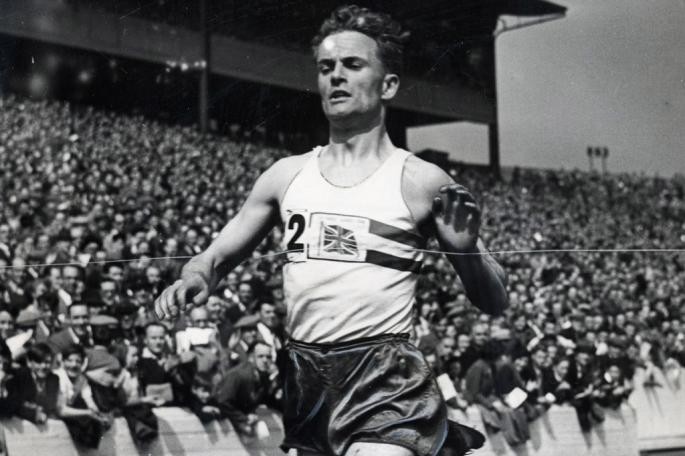
Davro, who achieved fame as a television comedian in the 1980s before later appearing in EastEnders, broke the news of his father’s death on social media on Friday (January 10) with an emotional message that read: “Today I lost my best friend and my hero. The most wonderful human being I have ever known. I’m so proud of him. He was GB mile champion and represented his country in two Olympic games but to me he was just “Dad”. I will miss him so very much and I will love him forever.”

Born on March 24, 1925, Nankeville’s early career was interrupted by World War II. He joined the army himself when he was 19 in April 1944 and made parachute containers and petrol tanks before being posted overseas to Brussels, Hamburg and to the concentration camp at Belsen shortly after it was liberated in 1945.
Running for the army in Belgium rekindled the athletics ability he had shown as a child and he soon began to make an impact. His rise was swift and in 1948 he won the first of a quartet of AAA one-mile titles and reached the Olympic 1500m final in London.
The Olympic final was run on a rain-soaked track with Swedish duo Henry Eriksson and Lennart Strand finishing one-two with Nankeville just over a couple of seconds behind the winner in sixth place.
Two years later at the European Championships in Brussels he won a bronze medal in a race won by Wim Slijkhuis of the Netherlands.
When the next Olympics took place, however, in Helsinki in 1952, Nankeville finished ninth in his semi-final as the leading British runner was Roger Bannister, who finished fourth in a final won by Josy Barthel of Luxembourg.
Nankeville and Bannister teamed up with Chris Chataway and Don Seaman to break the world 4 x one-mile record with 16:41.0 in 1953. In addition, Nankeville was part of teams that broke relay world records for the 4 x 880 yards (7:30.6) in 1951 and 4 x 1500m (15:27.2) in 1953.
After his athletics career ended, Nankeville worked for a sports manufacturing company and earned a reputation as a ‘Del boy’ figure due to his sharp business sense and likability.
(01/11/2021) ⚡AMPby Jason Henderson
Support for holding Olympics hits new low in Japan
Support for holding the coronavirus-postponed Tokyo Olympics this summer has hit a new low in Japan, a poll found Sunday as the country battles a third wave of infections.
Just over 80 percent of those asked by Kyodo news agency said the huge global event should be cancelled or postponed again -- a jump from around 60 percent in a December 6 survey by the same outlet.

Kyodo said the survey asked 1,041 participants nationwide, who were selected by random dialing.
Tokyo 2020 organizers have said another delay is out of the question and are insisting the Games will go ahead despite a state of emergency declared in the greater Tokyo area this week over a surge in Covid-19 cases.

In Sunday's national telephone poll, around 35 percent of people told Kyodo they favored outright cancellation, while some 45 percent said the event should be postponed a second time.
The month-long emergency in the capital and surrounding regions is less strict than harsh lockdowns seen elsewhere in the world and primarily targets restaurants and bars, which have been asked to close early.
Prime Minister Yoshihide Suga said this week that Japan is committed to holding a "safe and secure" Olympics.
He said he believed the public mood will change when the country begins vaccinations, currently scheduled for late February.
But senior International Olympic Committee official Dick Pound told the BBC he could not "be certain" the Games will go ahead, because "the ongoing elephant in the room would be the surges in the virus".
Public sentiment towards the Olympics in Japan has been less than optimistic for months.
Two polls in July showed the majority thought the event should be postponed again or cancelled, while a survey released in December by national broadcaster NHK found that only 27 percent of respondents supported holding the Games in 2021.
(01/11/2021) ⚡AMPby AFP
Tokyo 2020 Olympic Games
Fifty-six years after having organized the Olympic Games, the Japanese capital will be hosting a Summer edition for the second time, originally scheduled from July 24 to August 9, 2020, the games were postponed due to coronavirus outbreak, the postponed Tokyo Olympics will be held from July 23 to August 8 in 2021, according to the International Olympic Committee decision. ...
more...Abe Gashahun and Tsigie Gebreselama, winners of Great Ethiopian Run
On Sunday, the Great Ethiopian Run was held in Addis Ababa, the capital of Ethiopia, and thousands of runners showed up to compete in the 10K race. This marked the 20th running of the event, which was created by Ethiopian running legend Haile Gebrselassie.
The elite races, which featured 300 athletes, saw two close finishes, with Ethiopians Abe Gashahun and Tsigie Gebreselama taking the wins in the men’s and women’s races by one and two seconds, respectively.
In total, more than 12,000 runners participated in the race, which is reportedly the biggest African sporting event to take place since the start of the pandemic.

In 2018 Gebreselama finished in third at the Great Ethiopian Run. The year after, she upgraded to a second-place finish. On Sunday, at what was still billed as the 2020 race, she ran to the win, completing a three-year climb to the top of the podium. She crossed the line in 32:33, finishing two seconds ahead of Medihen Gebreselasie and 10 seconds in front of Gebeyanesh Ayele, both of whom are also Ethiopian. Gebreselama’s result is the fourth-fastest time in race history.
In the men’s race, Gashahun took the win in 28:20, finishing just one second off the 15-year-old course record of 28:19. This is Gashahun’s second win at the Great Ethiopian Run, adding to his victory from 2016.
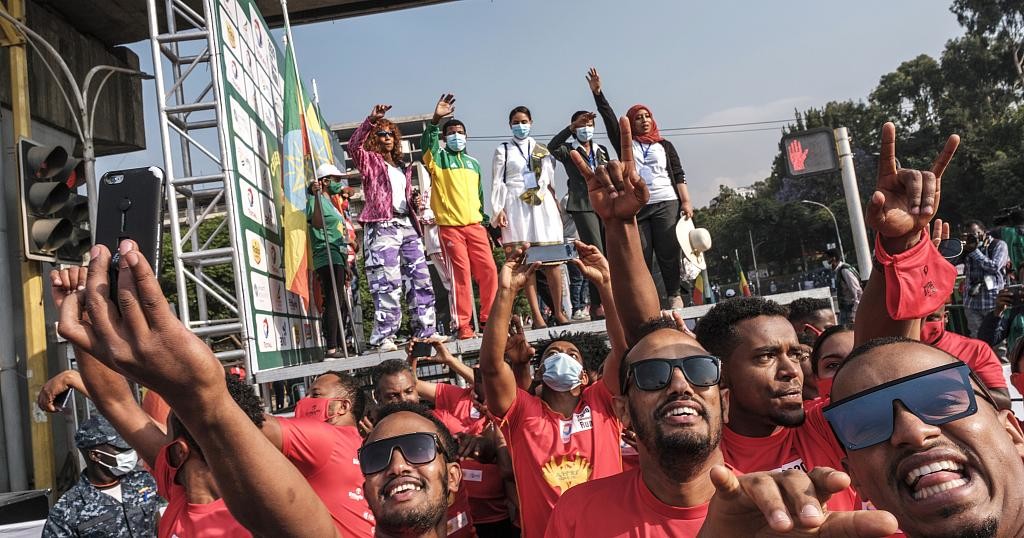
Gashahun’s fellow Ethiopians Milkesa Mengesha and Tadese Worku made him work hard for the win, and the trio battled for the top spot throughout most of the race. While Mengesha eventually faded to a 28:40 third-place finish, Worku stuck it out until the very end, falling just short of the win in 28:21.
The run takes place at more than 2,300m above sea level, which accounts for slower results than elites would normally run. For context, 76 Ethiopian men have run faster than Gashahun’s 28:20 winning time and 118 Ethiopian women have better PBs than Gebreselama’s 32:33 result.
COVID-19 guidelines
While the Great Ethiopian Run hosted a shockingly large field of athletes, there were COVID-19 guidelines in place to ensure the safety of everyone involved. Firstly, the event was moved from its original November 2020 run date until Sunday to give organizers more time to prepare for a COVID-friendly race.
The next-biggest change was the reduction of the field size from the pre-pandemic cap of 50,000 runners down to 12,500. Masks were mandatory on race day (other than when on the course), all athletes had their temperatures checked before the run and the race featured a wave start to make social distancing easier during the 10K.
The call to hold the event with such a large field drew criticism from many people in the international running community, but Gebrselassie and his Great Ethiopian Run team ultimately moved forward with their event, reportedly working closely with local health experts and government officials.
(01/11/2021) ⚡AMPby Ben Snider-McGrath
the Great ethiopian 10k run
The Great Ethiopian Run is an annual 10-kilometerroad runningevent which takes place inAddis Ababa,Ethiopia. The competition was first envisioned by neighbors Ethiopian runnerHaile Gebrselassie, Peter Middlebrook and Abi Masefield in late October 2000, following Haile's return from the2000 Summer Olympics. The 10,000 entries for the first edition quickly sold out and other people unofficially joined in the race without...
more...Kenya to take at least 100 athletes to Tokyo 2020 Olympics
The National Olympic Committee of Kenya (NOCK) has said it is expecting to send a record 100 athletes to this year's Tokyo 2020 Olympic Games.
The NOCK has said there are programmes in place already and enough training camps to help with preparations for the Games.

Residential training camps in Kenya are set to start in April.
Kurume on Kyushu island in Japan is due to be the base of the Kenyan team for at least 14 days before the Tokyo 2020 Olympics open on July 23.
NOCK officials are hoping the Tokyo 2020 Games - should the event take place - is free of the scandal which marred the country's team at Rio 2016.
"We expect to take at least 100 participants to the games with an expectation a higher medal haul than ever before," the NOCK said in a statement, Kenyan publication The Standard.
"We also seek to deliver the best-resourced Kenyan team in history.
"We are well set and all processes activated to ensure that we deliver an athlete-focused, well-managed, well-financed Olympic team as well as provide a memorable Olympic experience for all Kenya.
"Our resolve to deliver an exemplary Olympic experience is so strong, that our teams together with the Ministry of Sports, Art and Culture have been burning the midnight oil during the holidays to ensure that everything is set to go."
The NOCK, under the Presidency of former athlete Paul Tergat, has vowed to continue supporting qualified teams and those seeking qualification for the Games, despite the COVID-19 pandemic.
"NOCK is conjunction with the International Olympic Committee and the Association of National Olympic Committees of Africa is providing scholarships to at least 15 athletes to help them prepare for the Olympic Games," the statement added.
"Further, we are providing team preparation grants to the ladies' volleyball team and the ladies' rugby team.
"All the teams currently in the qualification pathways will be supported by the Government and NOCK to ensure that they qualify for the Games."
NOCK claim future programmes to help youth development are in place, looking to make use of sports science and high-performance centres for success at the Paris 2024 and Los Angeles 2028 Olympics.
So far, Kenya has 56 confirmed athletes for the Tokyo 2020 Olympics, including men's marathon world record holder Eliud Kipchoge and double world champion Hellen Obiri.
Kenya took a record 89 athletes in seven sports to the Rio 2016 Games, winning their best medal haul to date with six gold, six silver and one bronze medal.
Six Kenyan officials were implicated in a financial scandal at the event in the Brazilian city.
It is alleged the six officials had caused a loss of public funds with their mismanagement of the Kenyan team, with athletes' preparations hampered by their conduct.
Prosecutors also claim those in charge of the Kenyan team allowed unauthorised people to travel to Rio 2016, purchased air tickets which were not utilised and overpaid allowances.
A nation known for its pedigree of distance runners, Kenya has won 96 of its 103 Olympic medals in athletics.
The other seven, including one gold medal, have came in boxing.
(01/10/2021) ⚡AMPA New Outdoor Track Meet Will Be Held In Austin, Texas on February 26-27 That Will Target Olympic and Olympic Trials Qualifying Marks
A new, outdoor track meet scheduled for Austin, Texas, on February 26 and 27, will focus on helping athletes to achieve Tokyo Olympic Games and USA Olympic Trials qualifying marks for middle and long distance events. Called the Texas Qualifier, the meet will be held at an undisclosed location because live spectators will not be permitted. The event will be USATF-sanctioned and observe the USATF anti-COVID protocols, according to meet director Dave Alfano.
“We are continuing to closely monitor the COVID situation in Austin, and are in communication with USATF, as well as local health authorities,” Alfano explained to Race Results Weekly in an e-mail. “We will be providing more detailed information on the race protocol in the coming weeks, but athletes should expect to have to provide negative tests (or proof of vaccine) and we will be providing detailed instructions about when and how they can enter the facility for their race.”
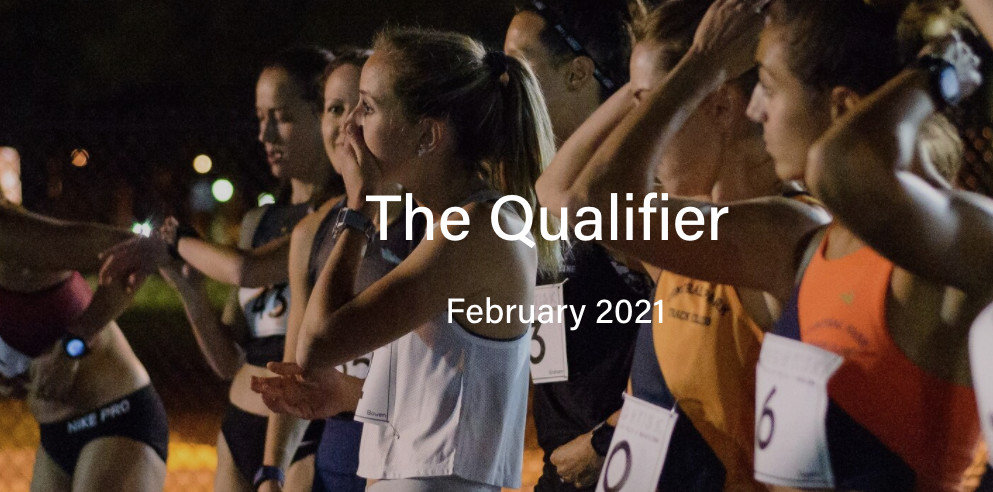
The Friday night program will feature races targeting USA Olympic Trials qualification for both men and women at 800m, 1500m, 5000m and 10,000m. Those marks are as follows:
800m (M/W): 1:46.00 / 2:02.50
1500m (M/W): 3:37.50 / 4:06.00
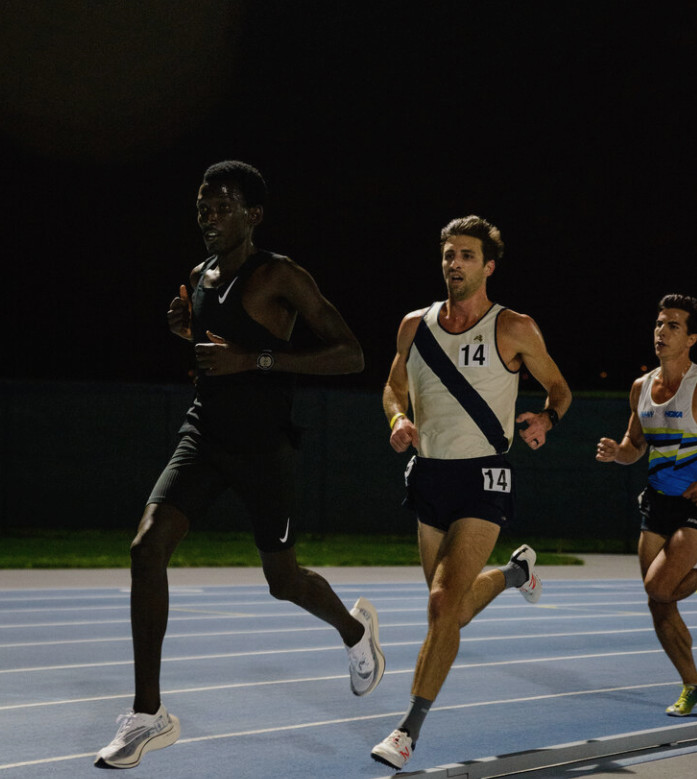
5000m (M/W): 13:25.00 / 15:20.00
10,000m (M/W): 28:00.00 / 32:25.00
The Saturday night program will begin with developmental races over 800m, 1500m and 5000m, then shift to Olympic Games qualifying events at 800m, 1500m, 5000m and 10,000m. Those marks are as follows:
800m (M/W): 1:45.20 / 1:59.50
1500m (M/W): 3:35.00 / 4:04.20
5000m (M/W): 13:13.50 / 15:10.00
10,000m (M/W): 27:28.00 / 31:25.00
Alfano is also hoping to set Texas state records in some of these disciplines. Some of those marks are quite old, including the women’s 1500m (4:00.2+i by Mary Slaney from 1980) and the men’s 10,000m (28:05.36 by Kenyan Michael Musyoki from 1984).
Alfano said that there are still some remaining starting spots, but warned that some of the fields were already near capacity. The event has a block of hotel rooms available just a short drive from the track.
(01/10/2021) ⚡AMPby Let’s Run
2021 USATF Indoor Championships Cancelled Due To Coronavirus
Indianapolis — The 2021 USATF Indoor Championships, originally scheduled for Feb. 20-21 in Albuquerque, N.M., have been canceled due to the Covid-19 pandemic, USATF announced today (Friday). The 2021 USATF Indoor Combined Events, which were to be held as part of the Championships, are also canceled.
USATF's COVID-19 Working Group of medical and scientific experts worked diligently to develop a rigorous set of COVID-19 protocols for conducting the Championships. However, it has become apparent that statewide restrictions in New Mexico and other logistical challenges for the event are too severe to overcome.
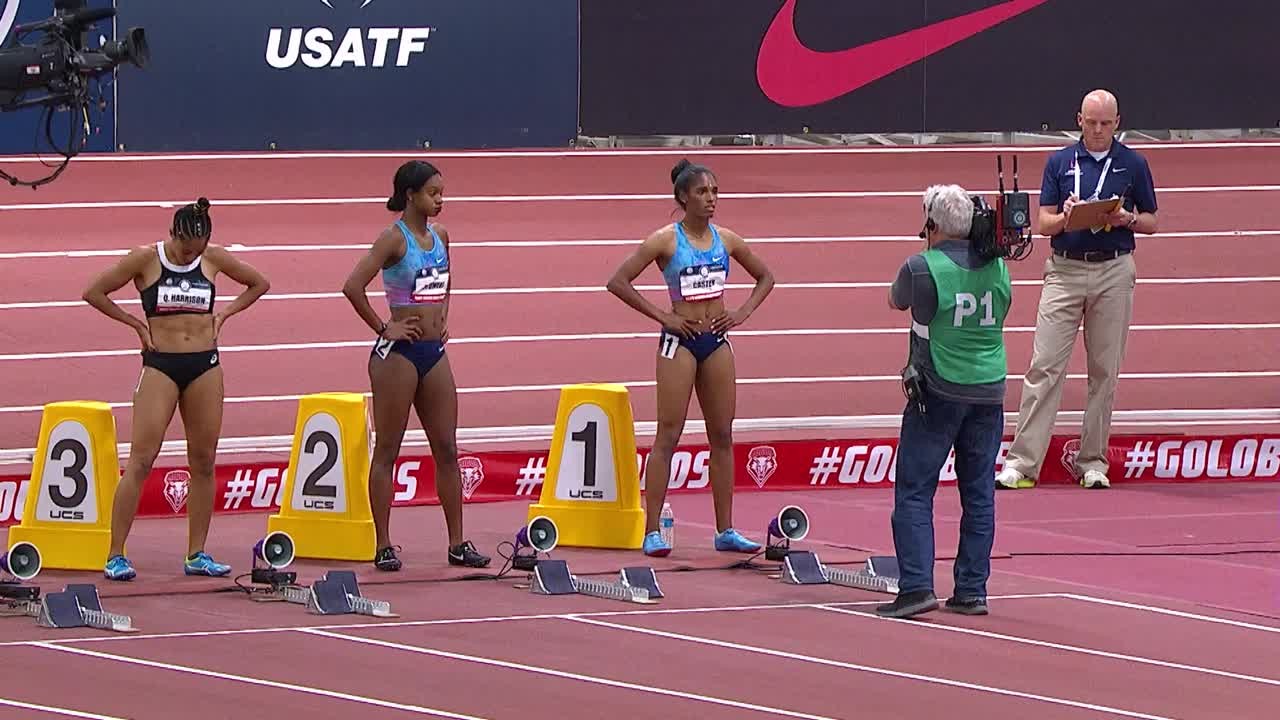
World Athletics announced December 20, 2020 that it moved its 2020 World Athletics Indoor Championships scheduled for March 19-21, 2021 to March 2023.
For up-to-date information, USATF has created the Coronavirus 2019 (COVID-19) Information Page to help communicate updated information to athletes, coaches, athlete representatives, event organizers, and members. This page will be updated regularly as new information emerges. Visit USATF.org/covid19 or click here.
(01/10/2021) ⚡AMPby USATF
For Just the Second Time Ever, a Runner Completes a Quad Quad Dipsea
That’s 16 (!) times across the famous Dipsea trail—roughly 113 miles and nearly 38,000 feet of elevation gain.
The Dipsea trail in Marin County, California, is famous for its roughly 2,300-foot incline, rising straight up and then straight down over 7.1 miles from Mill Valley to Stinson Beach. Three races run across the trail every year—the Dipsea, the Double Dipsea (an out and back), and the Quad Dipsea (two out and backs, totaling 28.4 miles).
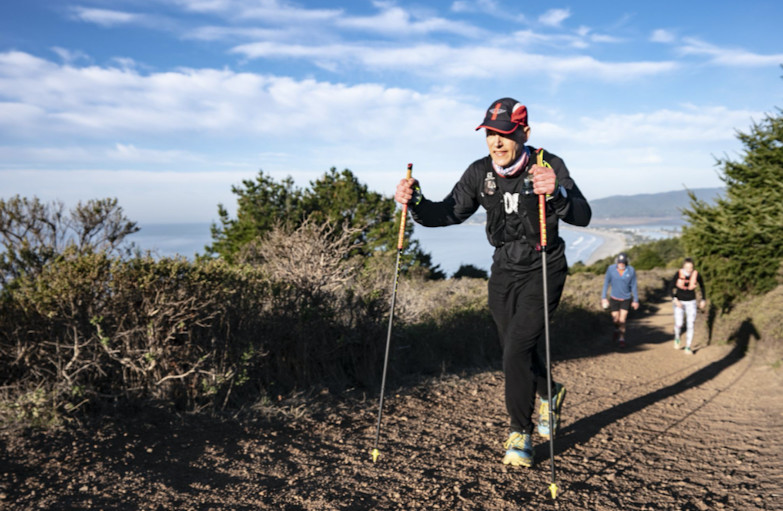
Yet, on record, only one person has ever completed the fabled Quad Quad Dipsea, which is 16 crossings of the trail (eight out and backs) for 113 miles and nearly 38,000 feet of elevation—8,000 feet more than the height of Mount Everest. That person was Don Lundell in 2003. Few have attempted the unofficial race since—until December, when Bradley Fenner became the second runner ever to complete the 16 crossings.
It was an idea sparked by Tony Marshall, a runner from the area. In the absence of races because of the pandemic, Marshall convinced Fenner, his friend and fellow area runner, to take on the challenge on the weekend that Quad Dipsea normally takes place.
Fenner, 56, knew the course well; he’s completed the Quad race 11 times since 2008 and runs on the trail frequently, since he lives nearby. But initially, he wasn’t keen on the idea, feeling nervous about the distance and elevation. Still, he began training and after a solid performance doing a Double Quad (eight out and backs) in mid-October, he decided to get on board.
“Over the years, when I would train with my friends for the Quad Dipsea, we jokingly made reference about doing the Quad Quad, but it never gained a lot of traction,” Fenner told Runner’s World. “I was incredibly and candidly intimidated by the statistics of it. I had never run quite that far. I’d done 100 milers. This was a bit further and involved 36,000 feet of elevation. I was intrigued by it. I was also intimidated by it.”

At 5 a.m. on December 4, Fenner and Marshall ascended the 670 stairs from Mill Valley for the first time, beginning what would be a long adventure lasting more than 30 hours. The duo had a two-person crew, Zak Sterling and Jim Lynch, stationed in Mill Valley and a lone parked car near the trail head in Stinson Beach with supplies if needed.
After about 43 miles, or five out-and-backs, Marshall called it a day because of a stomach issue, leaving Fenner to go the rest of the way on his own. To stay mentally strong, Fenner broke down the race into sections to be completed—eight out and backs was more digestible than 113 miles.
Luckily, he also lined up runners from the community like Charlie Ehm, Gary Wang, Olivia Amber, Jon de St. Paer, Corrine Malcolm, Ezra Becker, Devon Yanko, Louis Secreto, Hal Rosenberg, Greg Nacco, and Geoff Vaughan to crew and pace him over those tough stretches.
One of his biggest challenges was the lack of daylight hours of the winter. He started in the dark and only had, at most, 10 hours of light before night set in on the first day. It would be a long 14 hours at night, using his own lighting gear and his Hoka Evo Mafate 2s to tackle the difficult terrain.
“The downhills in the darkness were hard,” Fenner said. “The moon wasn’t close to full, so there wasn’t light from that. It was treacherous in the pitch black.”
Fenner simply kept to his routine. He did not sit down at any point for fear of the chair absorbing him. He hiked the uphills and jogged the downhills. He stuck to solid foods like egg sandwiches, turkey sandwiches, Coke, Ensure, cheese pizza, and cheese quesadillas, rather than things like gels or sports drinks he thought he’d get tired of over 30 hours.
After 31 hours, he had reached the final out and back of the trail. His quads and calves burned after over 30,000 feet of elevation, but he climbed the stairs one last time. Over the peak he went and back down leaving one more crossing to go.
“I was nervous and not taking anything for granted,” Fenner said. “There are portions of the trail that are so gosh-darn technical. You can role your ankle at any point. I just focused on where I was until the final mile where I finally thought I was going to finish. But I was kind of nervous that disaster could strike pretty much any time.”
As Fenner descended the stairs, he was greeted by the small crowd of his crew and friends who showered him with cheers and champagne. Fenner wasn’t a big fan of the latter after 113 miles, but he said he “was too tired to object and just let them pour it on me because I wasn’t sure if I could do anything.”
He quickly found a chair, finally sitting after 34 hours, 15 minute, and 35 seconds. A friend handed him a Fort Point Villager IPA and someone else brought him In-N-Out Burger. He called Quad Dipsea creator Tropical John Medinger, who congratulated him over FaceTime. 

Afterwards, he felt sore but not horribly so. He did feel a surprising amount of fatigue in for 10 to 14 days after, which he credits to the long, overnight effort throwing off his internal clock. A month out, he is back to full strength and he is proud of his accomplishment.
“I would ask that, whatever you write, please don’t use the word legend,” Fenner said. “I’m better than middle of the pack, but I’m not elite. I set a goal, I worked toward it, and I had a good day with phenomenal support. I’m not a legend. I’m not Rob Krar. I’m just a normal guy who loves the sport. I will say it was the most significant run that I have ever done, so I will at least say that.”
(01/10/2021) ⚡AMPby Runner’s World
How Mike Foote and Rob Krar Set the R2R2R-alt FKT (Hint: Skinny-Dipping Was Involved)
To save time, the two pros went naked while crossing the Colorado River twice during the 42-mile run.
It all started with a text on December 15. Mike Foote had a hankering for an adventure after a year without races that left him mostly situated around his home in Missoula, Montana. Wanting to end the year on a high note, he sent a Hail Mary ask to his buddy Rob Krar.

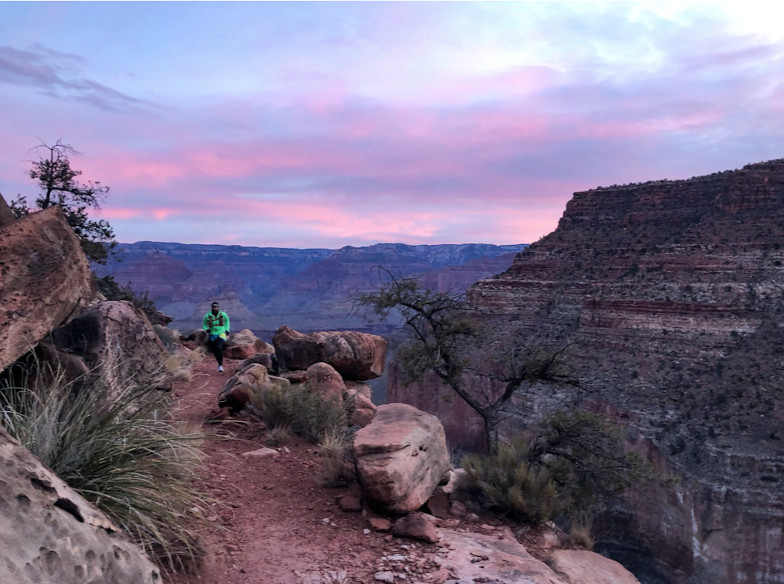
“Are you healthy right now?” the text read. “Any interest in doing the Grand Canyon alternate R2R2R with me sometime in the next couple of weeks?”
Krar, based in Flagstaff, Arizona, responded quickly: “Oh gawd.”
A back and forth commenced. Krar was hesitant and decided to sleep on it. The next day, Krar politely declined the invitation, seemingly ending Foote’s dreams to complete the run. However, a seed was clearly planted.
Krar kept thinking about Foote’s offer, so much that he and his wife, Christina Bauer, decided to scout the south rim of the trail, which is about two hours from their home. No stranger to the Grand Canyon, Krar has run many routes throughout the park, but he had never done this one. They discovered a beautiful trail that led to the Colorado River, and they even set out to check out the north section after, but were forced to turn back 30 miles away from the trailhead due to snow.
Turns out, that was good enough. On December 27, Krar let Foote know he was all in. Four days later, they were camping out at the trailhead.
“I really was somewhat unprepared for what we did, but I was in the realm of possibility,” Krar told Runner’s World. “I like to say, I enjoy big, dumb ideas. Mike’s idea was a big, dumb idea, and it would be an immensely satisfying way to finish what really is a rough year.”
“Sometimes you plan for big objectives with months of preparation,” Foote told Runner’s World. “Sometimes you wing it.”
After a night sleeping in single-digit temperatures, they awoke slowly to prepare for the R2R2R-alt, the 42-mile out-and-back route with two crossings of the Colorado River. It took a bit of time to get rolling because the oatmeal, water, and coffee they brought was a frozen block.
Just before daylight, around 7 a.m. on December 31, they set out in their soon-to-be-released North Face Vectiv trail shoes, running the 18 miles from the south rim to the first river crossing.
Typically when runners cross the Colorado River, they utilize wetsuits and pack rafts. Foote favored that method, but Krar had other ideas.
“I have a tendency to get cold easy, so it was a well-thought-out, calculated decision that, in my mind, offered us to best way to stay warm,” Krar said. “It seemed counterintuitive, but we would spend more time getting in and out of wet suits, especially when it was wet, and the suits would give us minimal warmth for a two-minute swim. Why not just take the shock of the initial plunge and get to the other side with our clothes in dry bags.”
And that’s exactly what the duo did. When they arrived at the river’s edge, they stripped down quickly, and packed up their dry bags. Foote had brought along a pack raft, but instead, they fought that fear we all have of jumping into cold water, and leapt into the river buck naked.
“Once you’re in, you’re in,” Foote said. “You’re 100-percent focused on getting across.”
After about five seconds of shock, they made their way across in roughly two minutes, quickly getting on shore and throwing on the puffy jackets they had in their dry bags. The whole experience swimming from one side to the other took about five minutes.
Starting up the trail to the north rim of the canyon was tougher than the south side. It involved a much more technical trail, particularly on the climb out of the canyon, which required a slower approach.
“We didn’t have deep, philosophical discussions about life,” Krar said. “I’d like to call it comfortable silence and knowing we were doing something incredible.”
Foote agreed, and added that his mind was mostly focused on one thing the entire way.
“The wasn’t a few minutes where I wasn’t thinking about that river crossing,” he said.
After nearly 30 miles and 10 hours, they made it up to the north rim and back to the river. Again they quickly undressed and jumped in—but this time, they got caught by the current and ended up in an eddy. This slowed them down, costing them about a minute before getting to the other side in roughly three minutes.
It took a toll, mentally and physically. Krar said his feet were numb for 20 to 30 minutes, and he struggled to find his running legs again. They also were met with some fresh snow after a flurry while they were running the northern section left two to three inches on the south side trail.
With the river crossings behind him, Foote’s mind shifted to the finish, counting down the minutes as they made their way up the south rim.
“What do we have? 30 minutes? 10 minutes now?” Foote thought as he made the climb up. “The terrain was constantly switching from big steps, then runnable, and we settled into a hiking pace with our headlamps on just trying to get to the end.”
Finally, after 11 hours, 32 minutes, and 9 seconds, they reached the trailhead, officially setting the fastest known time (FKT). Their mark bested the popular 2018 FKT set by the trio of Jim Walmsley, Tim Freriks, and Eric Senseman.
They had thought about camping another night, but after the cold day, Bauer drove them both back to Flagstaff. They warmed up during the two hour drive, arriving home around 11:15 p.m. Bauer threw some pot stickers in the oven and before they knew it, it was 11:55 p.m.
To mark the new year and the successful FKT run, Krar broke out a special Trappist beer, made by monks in the Netherlands and Belgium. It was a birthday present for him from his wife the day before.
He poured three ounces for everyone, said cheers to the end of 2020, and went to bed.
“We went big,” Foote said.
(01/10/2021) ⚡AMPby Runner’s World
The tempo run: training your anaerobic threshold
How will developing this system make you a faster runner?
Tempo runs: you’ve probably heard of them, and you may even have done them, without necessarily understanding their purpose in your training. There is a lot of confusion surrounding tempo runs, and many runners are left scratching their heads wondering how or why they should include them in their training. There is some debate whether they are beneficial for every runner training for every distance. A look at the science of tempo runs may help you decide if they’re right for you.

A tempo run is done at a slightly faster pace than your normal easy run pace – usually a bit slower than race pace, and slower than what you would run if you were doing intervals. The purpose of the tempo run is to train your anaerobic threshold
The Anaerobic Threshold
threshold as the level of intensity at which lactic acid accumulates in the bloodstream faster than your body can clear it. Research suggests that the goal of endurance training shouldn’t be to reduce the amount of lactic acid you produce, but to improve your ability to get rid of it.
You’ll know you’re running fast enough when you feel a burning sensation in your legs, which is caused by the lactic acid building up in your muscles. Improving your ability to get rid of this buildup more efficiently will allow you to run faster before lactic acid takes over.
How fast should you do temp run?
Tempo runs specifically train this system, and can help you increase your anaerobic threshold to run farther and faster. Of course, if you want to get the most benefit from tempo runs, it’s important to run them properly, and this is where many runners fall short.
The biggest mistake people make is, not surprisingly, with pacing. Running too fast will force you to slow down part way through your run and you’ll lose the training effect. Run them too slow and you’re basically doing an easy run. Tempo runs should be done at a pace that you can hold for about an hour, and should last anywhere from 20 to 30 minutes. If you don’t typically run for an hour, use your best time over a shorter distance (say, a 5K) to calculate what your tempo pace should be.
Think about some of the races you’ve done in the past — if, for example, you can run a 10K in one hour, that is your anaerobic threshold pace (6:00/kilometre). If you run 10K in 45 minutes, your anaerobic threshold pace should be about 4:30/kilometre. If you run 5K in 35 minutes, your pace should be about 7 minutes/kilometr
It may feel strange to only run for 20 minutes at a pace you can hold for a longer amount of time, but going faster than this pace during a tempo workout eliminates the training effect. Those faster paces are better left for other workouts, such as a shorter interval session. In fact, running every workout as fast as possible may cause you to burn out and ultimately run slower.
Of course, it is important to remember that as you progress your tempo pace will get faster. The key here is listening to your body: if you’re not feeling that burning sensation in your legs at some point during your workout, you’re likely not running fast enough.
(01/10/2021) ⚡AMPby Running Magazine
Kenyan middle-distance athlete Elijah Manang'oi, banned for doping offence
Kenyan middle-distance athlete Elijah Manang'oi has been banned for two years for a doping offence.
Athletics Integrity Unit (AIU) had on July 23 flagged down the 2017 World 1,500m champion over whereabouts failures.
But AIU has since found Manang'oi guilty and banned him for two years starting December 22, 2019 - which is the date of third whereabouts failure - to December 21, 2021.
"Disqualification of all competitive results obtained by the athlete since 22 December 2019 with all resulting consequences, including the forfeiture of any titles, awards, medals, points prizes and appearance money," read the ruling from AIU.
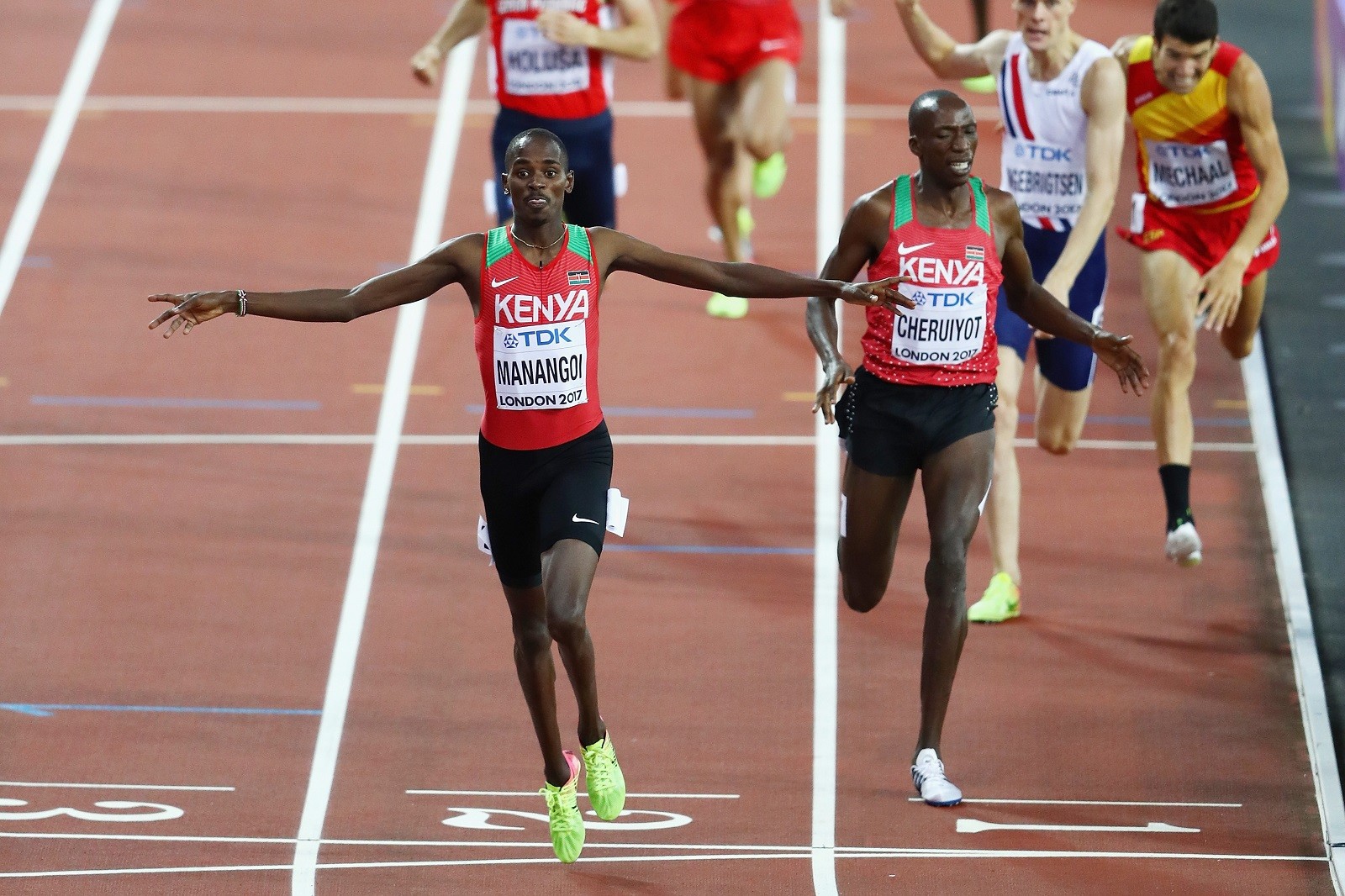
Manang'oi had three missed tests in the 12-month period beginning on July 3, 2019 followed by November 12 and December 22 of the same year.
In the first incident, Manang’oi asserted that, on July 2, 2019, his connecting flight from Frankfurt to Nairobi had been delayed and as a consequence he only arrived in Nairobi at around 11pm on July 2 2019.
Manang'oi claimed that his luggage did not arrive with him from his original departure destination (San Francisco) and that his house key was in his luggage.
Manang’oi stated that he had tried to change his Whereabouts information but “couldn’t do because time couldn’t allow because it was already past midnight”. As he did not have his house keys, he had stayed in the nearest airport hotel which led in turn to his missed test in Rongai the following morning.
However, AIU indicated that the athlete’s explanation failed to demonstrate that no negligence on his behalf caused or contributed to his failure to be present and available for testing during his designated time slot on July 3, 2019 or to update his Whereabouts information.
Manang'oi becomes the second high-profiled Kenyan athlete to be banned within one month after the 2017 London Marathon champion Daniel Wanjiru, who was handed a four-year ban after being found guilty of doping violation.
(01/09/2021) ⚡AMP
by Ayumba Ayodi
Hakone Ekiden, one of Japans most popular annual sporting events
The Melbourne Cup in horse racing is known as the race that stops the nation but, in truth, there’s an event in athletics that holds a country in a far-more-captivated grasp: the Hakone Ekiden.
This 10-leg, 217km relay in Japan has for years garnered viewing figures that defy belief, and this year’s race on January 2-3 was watched by 64.71 million people, according to Video Research Ltd. That means half the Japanese population tuned in, an audience share above that of the Superbowl in the Unites States.
This year’s broadcast, which ran for more than 12 hours across two days, hit a record high with 32.3% average of total Japanese viewership.
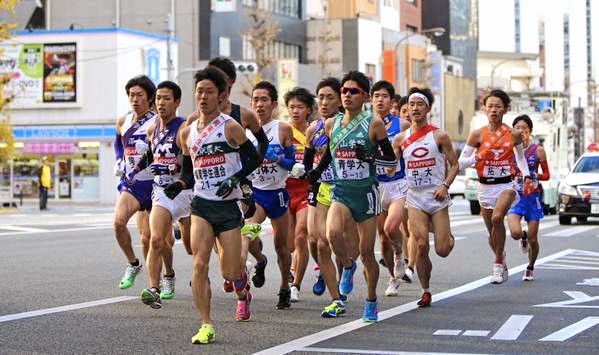
The competitors may be students, some of them not yet old enough to buy a drink, but the best are idolised like rock stars, their faces splashed across pull-out supplements in newspapers, their performances dissected on national radio and TV, their appearances mobbed with hordes of screaming fans.
Why so much hype for a long-distance relay involving university teams from one region (Kanto) of Japan? It’s best to ask those who’ve seen it – it’s the only way to believe it.
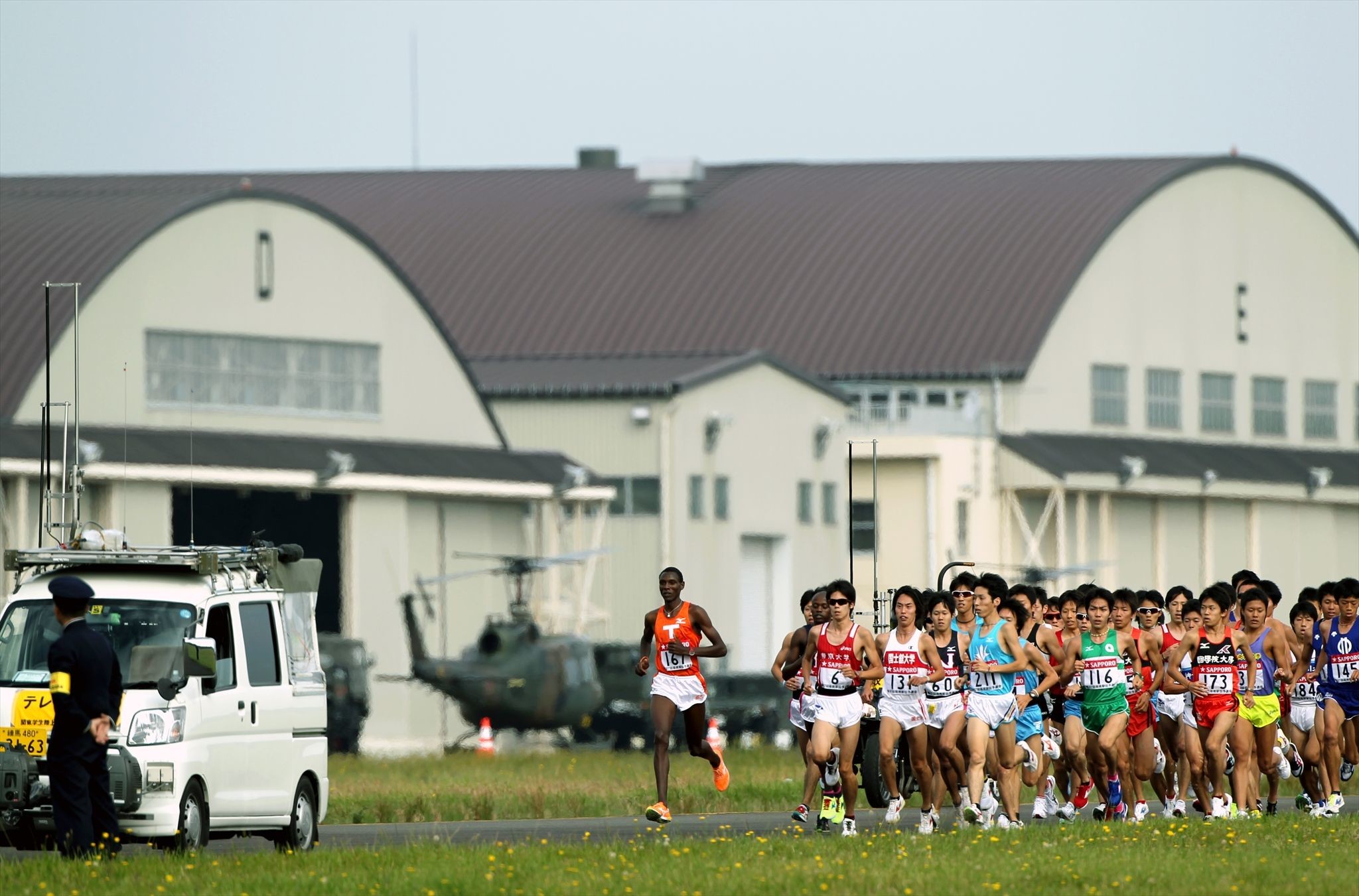
Before British author Adharanand Finn arrived in Japan in 2013, he knew Ekidens were a big deal, but he didn’t realize how big.
“I had this idea the Japanese are really into marathon running but when you get in with the serious end, their whole year is built around Ekidens,” he says. “To compete in the Hakone is bigger than the Olympics for a runner.”
Finn spent six months in Japan before writing his superb book, The Way of the Runner, and towards the end of his time there he experienced the enchanting electricity of the Hakone Ekiden.
Finn believes the media coverage is key to its popularity and to the audience’s understanding.
“Everyone is reading the background stories, the histories, the timelines and that’s what gives sport its hook. There’s this soap opera connected to it. The TV coverage is brilliant; I’ve often ranted about how terrible coverage of marathons in the UK and US is, cutting away at the wrong time, but in Japan all the stats are all over the screen. It’s so well produced that you can really follow it. A lot of people who watch are not running fans, but they cater for a wide audience.”
It’s a point echoed by Takeshi Nishimoto of Ekiden News.
“I've seen TV broadcasts of many races but Hakone is probably the best road race in the world,” he says. “The director of the broadcast came up with the idea that ‘Hakone Ekiden is a drama of each athlete’. Nippon Television (NTV) closely follows each athlete throughout the year and commentators are fed personal stories to talk about in detail. That's how it truly captivated the hearts of Japanese people.”
Brett Larner, who runs the Japan Running News website, says the Hakone Ekiden has the biggest TV audience of any sporting event in Japan and the second-highest viewership of anything, “surpassed only by Kohaku, a long music special that's broadcast on New Year’s Eve.”
Larner knows countless athletes who participated and the stories they bring back from the course strike a similar tone. “That it's like a blur,” he says. “They can't remember much due to the roar the entire way except for their ears hurting. There are thick crowds almost the entire way, with tens of thousands crowding the start and finish.”
Founded a century ago
The race dates back to 1920, and was founded by Shizo Kanakuri, an Olympic marathoner for Japan in 1912.
“The original purpose was to have college athletes compete in the half marathon to develop and identify talent who can excel in the Olympic marathon,” says Nishimoto. “However, in recent years, the number of entrance applicants of a university is directly affected by the result of the Hakone Ekiden, so universities invest in building state-of-the-art training facilities for Ekiden teams or recruiting systems offering scholarships.”
The legacy it has built over the century since its founding earned the ekiden a World Athletics Heritage Plaque in 2019.
Larner explains that the emphasis on the half marathon in Japanese distance running is most notable in the Kanto Region, given all the legs of the Hakone Ekiden are close to 20 kilometres.
“Hakone is the peak of the year, so the entire year is focused on being ready to run a half marathon at 100% come January. But the rest of the year people are running 1500m, steeple, 5000m and 10,000m, cross country, and not just the half.”
The emphasis on the distance can be a double-edged sword for young talent, according to Finn.
“It’s one reason running is so popular so it’s really good in that way, but with high school and college kids, they train really hard for the half marathon on the roads and it burns a lot of them out, physically and mentally. At 20-21, half marathon training is quite hard on them and it has this all-consuming effect.”
The day before Hakone, the New Year Ekiden takes place over 100 kilometres, a race that features the best athletes running for corporate teams in Japan. Despite the high standard it’s seen as a side-show to the collegiate event.
“Many Japanese traditionally like amateur sports more than professional sports,” says Ken Nakamura, an athletics writer and statistician. “In the early days of professional baseball, it was not held in as high esteem as college baseball, and national high school baseball tournaments held every summer are followed by even those people who do not consider themselves sports fans.”
During his many years based in Japan, Larner has witnessed an astonishing progression in standards at the Hakone Ekiden, which can only partially be explained by shoe technology.
“The sharpest growth in performance has happened since 2012, when Toyo University became the first school to break the 3:00/km barrier for average pace over the entire 217km Hakone course, (which is) no joke given the mountain stages,” he says. “Hakone has continued to grow in popularity, which has created more financial investment, which has resulted in higher performance levels, which has resulted in greater popularity.”
(01/09/2021) ⚡AMPby World Athletics
hakone ekiden
Hakone Ekiden, which is officially called Tokyo-Hakone Round-Trip College Ekiden Race, is one of the most prominent university ekiden (relay marathon) races of the year held between Tokyo and Hakone in Japan on 2 and 3 January. The race is telecast on Nippon Television. Only men take part in the competition, meaning there is greater investment in the men's ekiden...
more...Former world junior 800m champ Alfred Kipketer of Kenya has been banned for two year
Former world junior 800 metres champion Alfred Kipketer of Kenya has been banned for two years after he missed four drugs tests within a 12-month period.
The Athletics Integrity Unit (AIU) confirmed Kipketer accepted he had committed an anti-doping rule violation for whereabouts failures, which rules him out of this year's postponed Tokyo 2020 Olympic Games.

The 24-year-old, a finalist in the 800m at the 2016 Olympics in Rio de Janeiro, missed four tests between November 2018 and September 2019.
He has been suspended from November 26 2019, the date his fourth missed test was confirmed, to November 25 of this year.
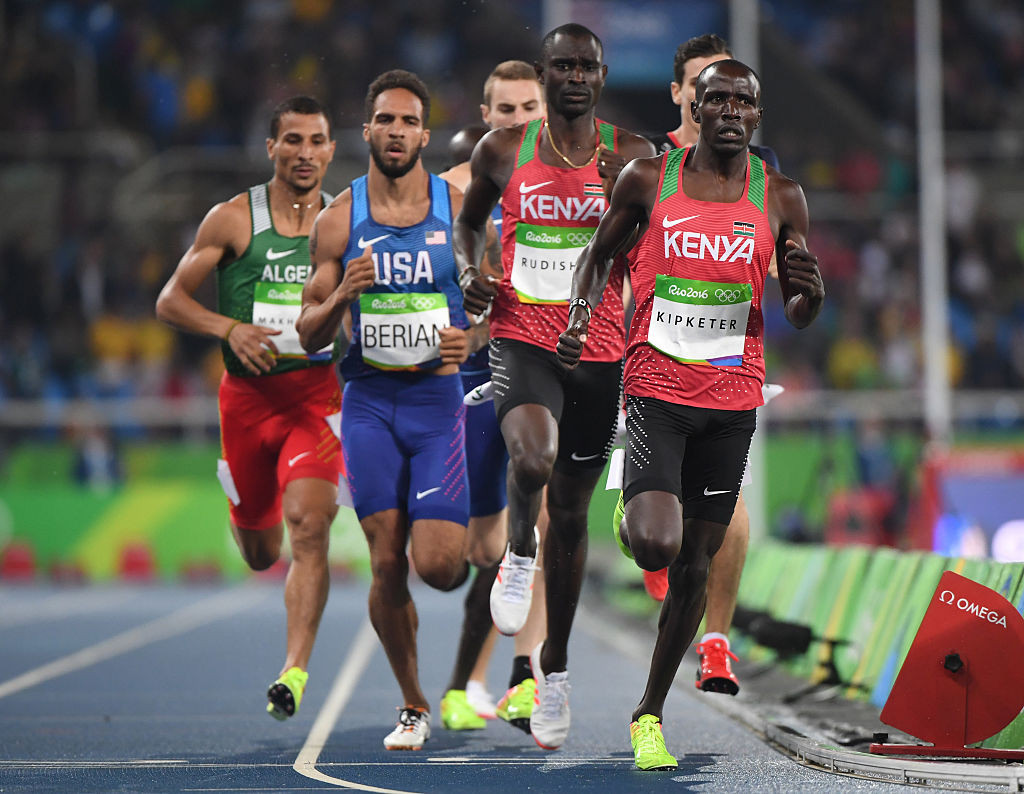
Kipketer, a member of the Kenyan team which won the gold medal in the 4x800m at the 2014 World Relays, failed to provide any explanation for three of the four failures.
He claimed he missed the third test because he had to travel to Nairobi for a family emergency, but the AIU rejected his explanation, stating he had "sufficient opportunity" to update his whereabouts to reflect his change in circumstances.
Kipketer, who also won the world youth title in 2013 and reached the final of the 800m at the 2015 World Championships, is among the more than 60 Kenyan athletes who are serving doping bans.
The AIU had provisionally suspended Kipketer in January, and he has not been able to compete since that date - although many of the events he might have featured at have been cancelled because of the coronavirus pandemic.
Notable names on the list of Kenyan runners currently banned include the 2016 Olympic women's marathon champion Jemima Sumgong and former world marathon record holder Wilson Kipsang.
The 2011, 2013 and 2015 world 1500 metres gold medallist Asbel Kiprop is also banned, as is Elijah Manangoi, who succeeded him in 2017.
Kenya is in the AIU's highest risk category for doping.
(01/09/2021) ⚡AMPby Liam Morgan
Usain Bolt Releases New Song “Living The Dreamâ€
Usain Bolt might be hot on any track he touches worldwide, and he might have a career as a baller, but for now, the world’s fastest man seems to enjoy music as he released his second project – ‘Living the Dream’, on the second day of the new year (Jan 2, 2021)
Usain Bolt is a known fan of partying and music, and with best friends like Christopher Martin, it’s easy to see how he could fall into music production. Having made his debut in the world of music in 2019 with the release of Olympe Rose Riddim, a medley featuring the likes of Christopher Martin, Ding Dong, Dexta Daps, Munga Honorable, and others, his latest project also promises to be a banger.

The new song features his best friend and manager, Nugent Walker, who goes by the name ‘NJ’, and it is a motivational song that speaks to working hard and never giving up. “House on the hill with a nice city view, just a kid from the country living the dream.” It almost mirrors the story of Usain’s own childhood as he worked hard to get the opportunities he wanted and later reaped the rewards. In the video, he plays the little boy studying hard while also practicing his tennis skills and helping his mother only to return as a successful adult.
The song debuted on Apple Music and iTunes, as well as several local radio stations putting it on rotation, and it’s being distributed by Hapilos Entertainment.
On YouTube, the song received 13k views within the first six (6) hours of being released. While Usain did not sing in the song, he was only featured as the one who produced the song, many joked that he is becoming the “Jamaican DJ Khaled,” who is known for only appearing in songs and shouting his name/ label title at the intro of songs he produced.
Others joked that they waited for Usain to sing. “Usain’s verse flew by so fast that I didn’t even hear t,” one fan commented. Another said, “Usain Khaled we the fastest,” clearly joking. Meanwhile, the song seems to be drawing fans of Bolt from across the world, including India, Africa, and the Caribbean, with many wanting to hear Bolt sing.
https://youtu.be/sRrVeo8t3NM
(01/09/2021) ⚡AMPJust One Step: a dive into why we run
Find out why humans run in this new award-winning documentary
For runners who hate the cold, ice and snow, it’s treadmill season, and when you spend hours upon hours running on the spot, you need to find a distraction. While we can’t help keep you entertained for every run, we do have you covered for about an hour and a half, thanks to the award-winning documentary Just One Step. This film, which features big-name ultrarunners like Anna Frost and Karl Meltzer, looks to answer the question of why humans run, diving into possible explanations in science, psychology and spirituality.
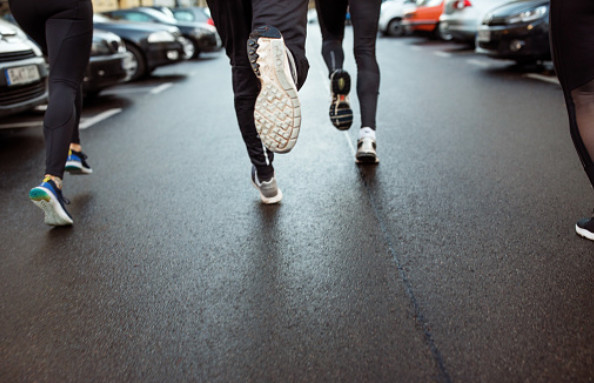
Just One Step is available now on Amazon, iTunes and Google Play, and it’s a great option to keep your mind occupied during your next long run on the treadmill.
“They are everywhere,” the film’s narrator says. “It doesn’t matter where you look.” He’s talking about runners, and it’s true — we are everywhere. No matter what town, city or country you visit, you’ll see people out for runs. But the film wants to know why. “What exactly are we as a species doing out there on the treadmill, track and trail,” the narrator continues. “Why do we do it?”
As the documentary notes, there is not one uniform answer to this question, and after exploring the world of running, it becomes clear that everyone has different reasons for entering the sport and different motivations to stick with it. For many people, though, they have been hooked on running ever since they started.
“It’s an absolute addiction,” says Frost. This can lead us to push past our limits, which viewers will see in the film, turning this leisurely and healthy activity into something dangerous. “For all the benefits we reap, there are consequences as well,” says Just One Step director Benjamin Keller. “It’s this intense, crazy system we’ve developed around running.”
We’ll never truly find the answer to why humans run. But it’s a fun question to consider, and one that can keep your mind busy next time you hop on the treadmill. To stream Just One Step, head to Amazon, iTunes or Google Play.
(01/09/2021) ⚡AMPby Running Magazine
Leadership Changes, Mass Layoffs Continue at NYRR
The moves come in the wake of a law firm investigation into workplace issues and amid lost revenue from canceled events.
New York Road Runners (NYRR) has made another round of large-scale staff cuts following the cancellation of almost a year’s worth of road races amid the pandemic.
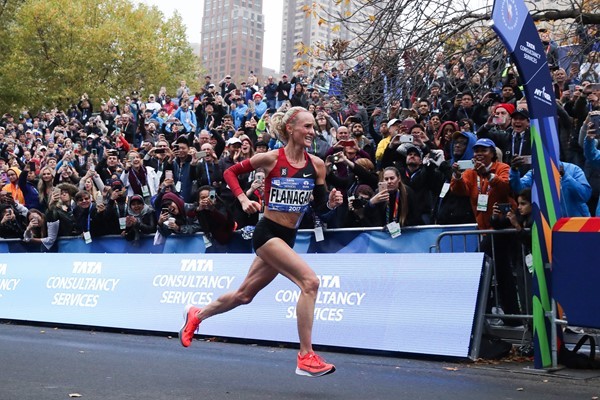
Additionally, NYRR announced to its employees on January 8 that Jim Heim, race director of the New York City Marathon who has been with NYRR the past 13 years, and Chris Weiller, senior vice president of media, public relations, and professional athletics who joined the nonprofit in 2013, will be leaving the organization.
Those departures come on the heels of the news that this week 87 full- and part-time staff who had been furloughed in July 2020 would be permanently laid off, an NYRR spokesperson confirmed to Runner’s World.
The organization’s staff of 229 has been cut nearly in half since July. Some furloughed employees had held out hope that they would be brought back, but the resurgence of COVID-19 cases in New York is slowing the return of events.
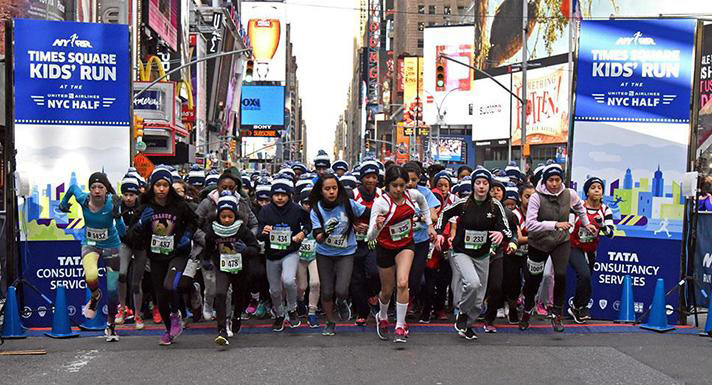
The 2021 NYC Half, a multi-borough half marathon with thousands of competitors every March, was canceled for the second year in a row on December 2.
Meanwhile, the departures of Heim and Weiller are the most recent of several leadership changes in the wake of allegations of mistreatment of employees of color and women that became public last September.
After the allegations surfaced, NYRR’s board of directors hired a law firm, Proskauer Rose, to conduct an investigation into the workplace culture at NYRR. CEO Michael Capiraso’s departure from NYRR was announced on November 30, and Kerin Hempel was named the interim CEO.
Today’s staff shakeup makes it six leadership-level employees who have left the nonprofit since the end of November, according to internal emails and conversations with current staffers.
In addition to Capiraso, Heim, and Weiller, Michael Rodgers, who was the vice president of youth and community runner engagement, left for a job with the Nature Conservancy. Bari Greenfield, the vice president of strategy, planning, and organization operations, is still listed on the company website but is leaving to pursue other opportunities. Michael Schnall, the vice president of government relations & community investment, was furloughed in July and is among those not being brought back.
Staging the New York City Marathon, the world’s largest 26.2 with more than 50,000 runners every year, is a high-wire act that includes several waves of runners starting on both levels of the Verrazano Bridge in Staten Island. That job now falls to Ted Metellus, who has been named race director of the five-borough event.
Trina Singian will oversee PR, broadcast, and pro athletes.
(01/09/2021) ⚡AMPby Runner’s World
In Enemy Territory, Bills Fan Runs Marathon Around Monday Night Football Game
In a Josh Allen jersey, he ran 26.2 miles and saw the quarterback come out of the tunnel along the way.
The Bills Mafia is no stranger to sacrifice and tailgating greatness. The passionate fanbase of the Buffalo Bills football team turns out every home game in often near- or below-freezing temperatures while performing WWE-style slams and finishers through tables like a sacrificial offering to the football gods—or to quarterback Josh Allen.
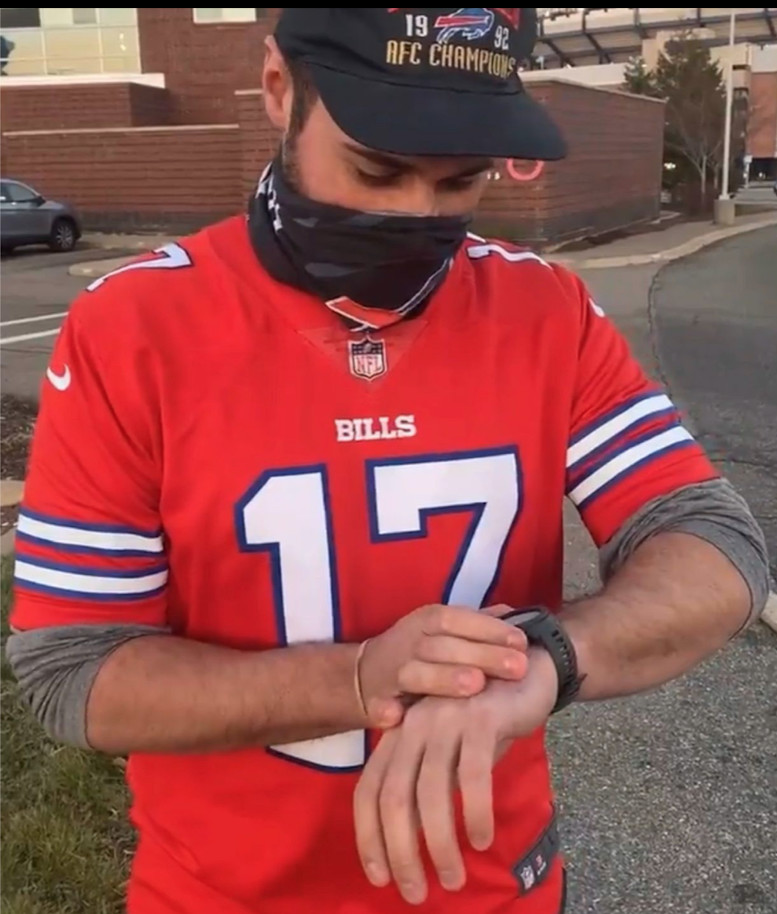
So it’s no surprise that Bills fans are ecstatic about clinching their first AFC East title since 1995 and making the playoffs for the second time this century.
Colin Dee was one of these lifelong fans. His fandom stretched from his days growing up in Rochester, New York, and stayed with him even after he left in third grade to move to North Carolina.
Now, Dee resides in the Foxborough, Massachusetts, which is home to the rival New England Patriots. Once the Bills had the playoffs and the division in the bag, he and his fellow fans celebrated virtually, leading to Dee’s friend throwing him a dare.
“In mid-April when the schedule came out, we didn’t think COVID would last to December, so we planned to go to the Monday Night game,” Dee told Runner’s World. “We gotta go, but when we realized we couldn’t, they told me I had to do something. Originally it was just a run. Then it was a 5K. In the end, I was dared to do a marathon.”
Dee wasn’t a stranger to the distance. He had completed five marathons, inspired by his lifelong running dad. It was that family tradition that was passed down instead of his dad’s New York Giants fandom that Dee’s grandfather, a Bills fan, on his mom’s side was adamantly against.
Dee’s true Bills Mafia passion amped up in college. While moving in freshman year at the University of Dayton, Dee discovered a friend who moved away in the second grade to Chicago—also a Bills fan—lived next door.
The two reconnected and even splurged on season tickets their sophomore year and made the roughly six-hour drive for home games in the fall. They’ve been season-ticket holders ever since. Plus, they even converted Dee’s dad to be a Bills fan.
“My dad got me into running, and I got him into the Bills,” Dee said. “My dad has done a couple ultras and was trying to do a 100 miler. Here I am doing a marathon outside a stadium. People think I’m a nut.”
It was also Dee’s childhood friend who dared him to do the marathon. While Dee was determined to do it, as the week went on, he realized he could also do the run and try to raise money for charity.
Thinking about which to pick, Dee turned to inspiration from Bills quarterback Josh Allen. Bills Mafia has gotten behind their leader since Allen’s grandmother died earlier in the season and fans followed by donating over $1 million to Oishei Children's Hospital.
Dee hoped people would donate at least 17 cents per mile—an homage to Allen’s number—or a nominal $4.45 for the entire run.
“There’s people going through a lot worse things right now in the world, and if we can do something like this for a kid or a family going through cancer, you gotta do it,” Dee said. “If it coincides with things like the Bills and the work they’re doing with Josh Allen, even better.”
A little over a week later, Dee kept his word and lined up, untrained, around 4:30 p.m. on December 28 in his Josh Allen jersey for a marathon run through the empty parking lots and uncrowded sidewalks around Gillette Stadium. The start time was before the game because Dee had to beat the Massachusetts COVID curfew of 10 p.m. ET.
Dee had a route around the facility mapped out, but on the first lap, he had to get creative because he accidentally ended up in a restricted area and was chased out by security. That lap ended up being the longest at 2.2 miles. After that, he settled into a 1.3 out and back that ran by an opening that looked onto the field.
“People think I’m some drunk guy running around,” Dee thought out loud as he ran.
While his family crewed him, he charged through the first miles at an pace as fans of both teams who happened to be in the area (very few because of COVID) cheered and jeered at the person running around the stadium in a jersey.
He’d hear people screaming, “Josh Allen,” all night for his jersey. However, around mile 6 when he heard that, it wasn’t directed at him. In fact, as he ran by the opening to the field, Josh Allen was actually running through the tunnel to the field to warm up.
After that, Dee kept up his pace as he saw the fireworks mark the start of Monday Night Football and listened to the game from the outside.
The marathon would take him 5:08:44, but he did it and was able to recover with some food, his family, and the second half of the game.
Not only that, he’s also ended up raising more than $3,200 for Oishei Children's Hospital.
“This didn’t start as anything more than a dare made over a couple of beers,” Dee said. “Then I thought we need this to go back to Buffalo. I don’t want to give this to Boston. With all the good that has come from Oishei and the Bills connection, he knew we had to do it. I’m so happy with what we’ve done so far.”
To make the night even sweeter, the Bills ran away with a 38-9 victory on the road.
(01/09/2021) ⚡AMPby Runner’s World
The runner’s guide to IBS
Runners love to talk about running. Our personal bests, favourite routes and future race plans all make it into regular discussion, but there is one topic that we tend to avoid: stomach problems. For all its benefits, GI distress is one unfortunate and common issue facing distance runners. In fact, studies suggest that anywhere from 30 to 50 per cent of endurance athletes experience gastrointestinal problems.
While this is a frequent complaint for many runners, a small percentage of them may actually suffer from Irritable Bowel Syndrome (IBS). For these athletes, stomach problems are an even more prominent issue, and can turn an enjoyable long run into a mad dash for the nearest washroom. But how do you distinguish between exercise-induced GI distress and IBS, and how can you manage it?

What is IBS?
According to the Canadian Digestive Health Foundation (CDHF), IBS is characterized by problems with motility (moving digested food through your intestines) and sensitivity (how your brain interprets signals from your intestinal nerves). This can cause abdominal pain and irregular bowel movements, gas and bloating.
There are two types of IBS:
IBS-C: irritable bowel syndrome with constipation.
IBS-D: irritable bowel syndrome with diarrhea.
While many runners have experienced diarrhea symptoms while out for a run (hence the term “runner’s trots”), the symptoms of IBS go far beyond what might be considered “normal.” For IBS sufferers, running can make their already unpleasant symptoms even worse.
How does running make IBS worse?
Running can relax the bowel and encourage a more regular bowel movement, which for most of us is a good thing. For people who already struggle with increased bowel sensitivity, that relaxation makes things worse. There are a few reasons why this might be the case:
There is reduced blood flow to your intestines during exercise.
The stress of running reduces the function of your GI tract.
High-intensity activity can cause inflammation in your stomach and intestines.
Studies have determined that less than three per cent of endurance athletes have been medically diagnosed with IBS, but most distance runners who suffer from the condition go undiagnosed. Unfortunately, there is no definitive test for IBS, and most doctors will use your medical history and physical tests to rule out other conditions before they conclude that IBS is the problem.
Can you treat IBS?
There is currently no treatment for the condition, and the best thing you can do is manage your symptoms. This means identifying foods that trigger your symptoms and eliminating the ones that appear to be causing problems.
Unfortunately, many common and healthy foods (such as high FODMAP foods) and sports drinks and gels that runners take during races also tend to trigger GI distress and IBS. For runners who struggle with IBS, here are a few tips to help you avoid a mid-race dash to the porta-potty:
Select your sports gels or drinks carefully, and always test them out on a run before race day.
Always ensure you drink enough water when you consume a sports gel to improve absorption.
Limit your intake of high-fibre and high-fat foods before a run or race.
Avoid eating less than two hours before a run or race.
Follow a pre-race routine that helps you reduce stress and stay calm to avoid upsetting your stomach.
If you’re still struggling, talk with your doctor about medications that will help ease your symptoms.
GI distress can ruin a good run and thwart your efforts for a PB on race day. If you suffer from IBS, these issues can be even worse. While there may not be a cure for the condition, it can be managed to allow you to enjoy running without the pain, discomfort or embarrassment.
(01/09/2021) ⚡AMPby Running Magazine
How does running improve your mental health?
Kim Dawson, professor of sport psychology at Wilfrid Laurier University, explains how running improves your mental health and why you should get outside this winter
How does running improve your mental health?

As the cold weather continues to set in and the days remain short, this is the time of year when many of us struggle with our mental health. This year in particular is challenging since most of our usual opportunities to get out and socialize are off-limits. In 2021 more people than ever before are turning to running, not only to improve their physical health, but to boost their mood as well. We spoke with Kim Dawson, PhD, professor of sport psychology at Wilfrid Laurier University, to understand how running benefits your mental health and why you should ditch the treadmill and run outside this winter.
Dawson says there is no one reason that explains how running improves your mental health. While there are chemical changes that happen in the brain when we exercise, such as the release of dopamine or serotonin (both feel-good or “happy” hormones), she explains that there are many other reasons why running makes people feel good.
For some of us, running serves as a distraction that takes us away from the problems of our world and thus makes us feel better. It can also provide us with a social opportunity if we’re running with a friend or group. For others, Dawson adds, running can be a type of “mastery” experience that’s related to mental health.
“The thing that people need to realize is that it’s so vast and it can contribute in so many different ways,” says Dawson, “so you have to figure out what the triggers are for your mental health and how can running fulfill some of those things for you?”
The case for running outside
When working with runners, Dawson always tells them that they “picked a really good sport to move [their] bodies and to actually be outside to do it.” Just like running, being outside can improve your mental health for a variety of reasons. Dawson points out that when we go outside we tend to be with people and we tend to be moving in a way that changes our brain and our mood. She highlights three theories that explain why exercise outdoors can improve your mental health even more than doing the same thing indoors.
The Restoration Theory says the brain needs an opportunity to restore itself. Nature tends to be less fast-paced, less kinetic and less technologically-charged than when we’re inside, and that alone could benefit our mental health.
Anthropological theories, Dawson says, argue that man was meant to be outdoors and was meant to move. This is what our early ancestors did, so it feels common to us and we like doing it. Similarly, biological theories suggest that humans are connected with nature, which is why we love being in nature. Many runners, for example, say they love to feel the air in their lungs, to smell the outdoors and to hear the sounds going on outside.
What does this mean? If you want to boost your mental health this winter, you’re better off braving the cold and getting outside rather than logging your miles on the treadmill.
“When you run on the treadmill you get the physical bang but you don’t get the emotional side at all,” says Dawson.
Of course, there are several things to consider before heading outside for a winter run, such as whether the conditions are safe and if you have the proper clothing to keep you warm, but as long as you’re prepared for the elements and you practice good judgement, outdoor running can help you beat the winter blues and help you enjoy the season.
(01/09/2021) ⚡AMPby Running Magazine
Tokyo 2020 organizers to continue preparation carefully for Olympics during the second state of emergency in the Japanese capital
Tokyo 2020 organizers announced here on Friday that they will continue to make preparation for the Olympic and Paralympic Games during the second state of emergency in the Japanese capital and three surrounding prefectures.
"We will continue to proceed carefully with all necessary work while adopting the required safety and security measures, in order to progress preparations for the Tokyo 2020 Games due to be held this summer," the organizers said in a statement.
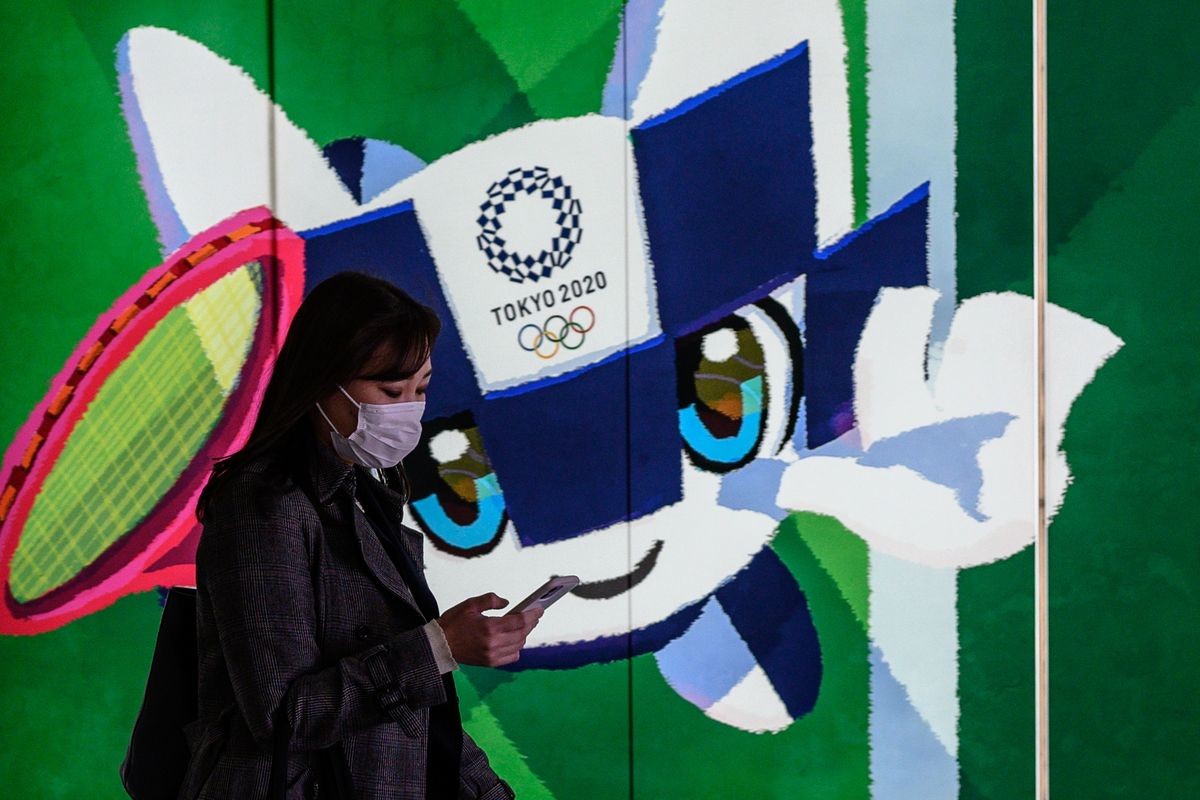
Japanese Prime Minister Yoshihide Suga declared the state of emergency from January 8 to February 7 for the Tokyo metropolitan area including Tokyo, Saitama, Chiba and Kanagawa prefectures on Thursday afternoon, authorizing tougher measures to fight a resurgence in COVID-19 infections.
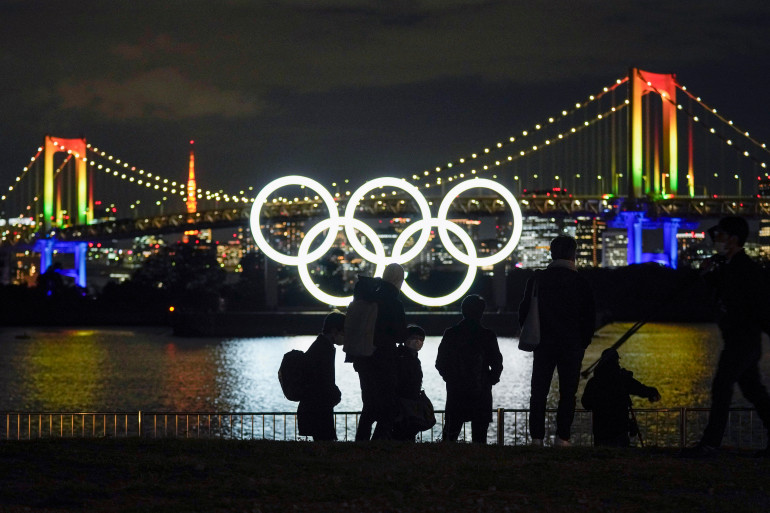
Despite the mounting pressure from the worsening coronavirus situation, Suga promised that the Tokyo Olympic Games would be held from July 23 to August 8.
Suga, who became Prime Minister last September, told a press conference on Thursday, "I am determined to hold a safe and secure games," adding that he is optimistic that enthusiasm among the Japanese public will grow once vaccinations begin.
But Dick Pound, the longest-serving IOC member, told UK's state broadcaster BBC that the Tokyo Olympic Games might not take place.
"I can't be certain because the ongoing elephant in the room would be the surges in the virus," the 78-year-old Canadian said.
Ironically, it was also Pound who raised doubt as early as late February last year that the Tokyo Olympics would not take place in 2020.
Pound, who has been on the IOC since 1978, predicted 10 months ago in an interview with the Associated Press that the Games might be canceled because it could not be postponed considering its size.
"You just don't postpone something on the size and scale of the Olympics. There are so many moving parts, so many countries and different seasons, and competitive seasons, and television seasons.
"You're probably looking at a cancellation," he said in the interview.
The Olympics was pushed back by one year on March 24, nearly four weeks after the Pound interview.
Tokyo 2020 organizers are in a race against time to ensure that test events can restart on March 4 as rescheduled. The first event will be the FINA artistic swimming Olympic qualification tournament from March 4 to 7 at the Tokyo Aquatics Centre. Overseas athletes have been expected to attend some of the test events.
(01/08/2021) ⚡AMPby Xinhua News
Tokyo 2020 Olympic Games
Fifty-six years after having organized the Olympic Games, the Japanese capital will be hosting a Summer edition for the second time, originally scheduled from July 24 to August 9, 2020, the games were postponed due to coronavirus outbreak, the postponed Tokyo Olympics will be held from July 23 to August 8 in 2021, according to the International Olympic Committee decision. ...
more...Three Kenyans, Solomon Boit, Evans Kipkemei and Kennedy Kimutai will battle ethiopians in Addis abba as race marks 20 years
In Addis Ababa, Ethiopia will Sunday host the 20th anniversary of Great Ethiopian Run - Africa’s largest mass participation sports event post-coronavirus lockdown - with founder Haile Gebrselassie confident the 10-kilometre road race will continue serving the greater good.
Speaking at a pre-race press conference at the Hyatt Regency Hotel in downtown Addis Ababa on Friday, Gebrselassie, a multiple world record holder in distance running, said the race will continue to make positive contribution beyond prize money.
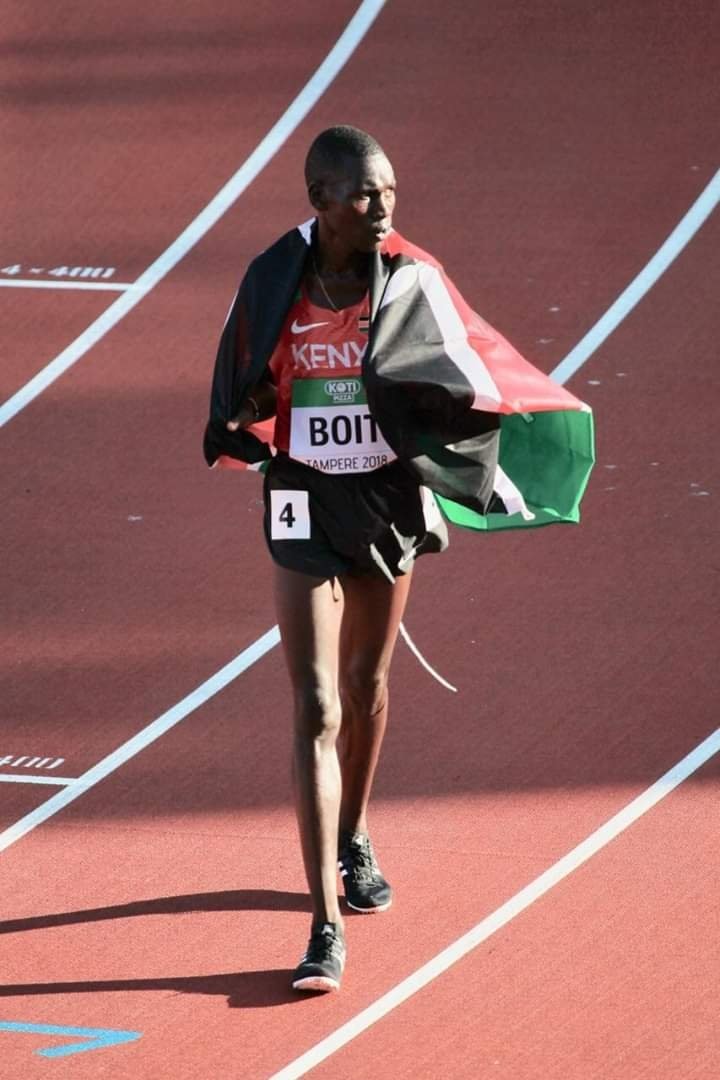
Already, the distance running legend has built a school with proceeds from the annual race’s sponsorship with plans underway for the construction of another in partnership with the government of the Federal Democratic Republic of Ethiopia.
The former world record holder in the marathon and 10,000 metres also paid tribute to the great rivalry between Kenyan and Ethiopian athletes saying it helped raise the bar in African athletics.

He singled out his career-long running nemesis Paul Tergat for his contribution to the sport.
“Without Tergat the sport wouldn’t be as exciting as it is… he’s my friend and I even feel as though he’s right here with us now,” Gebrselassie, also a successful businessman said.
Tergat had been invited for this weekend’s 20th anniversary race but couldn’t travel as he is attending to his brother and other relatives who were involved in a freak road accident in Baringo County recently.
“Haile Gebrselassie, the legend, my brother, my friend and my worthy competitor in our hey days on the track, in cross country and on the roads, stands out tall for bequeathing Africa with such an incredible mass race that celebrates 20 amazing years this weekend,” Tergat wrote in a message to the organizers.
“Haile stands out as a giant, and one great role model to mankind through the way he was a success in his long professional athletics career, and by the way he has been a tremendous success also in his business undertakings after retiring from athletics.”
The Great Ethiopian Run has been forced to adjust to Covid-19 protocols that include a reduced number of runners starting the race in three separate waves to avoid congestion and to allow for greater distancing.
Three Kenyans – Solomon Boit, Evans Kipkemei and Kennedy Kimutai – are among a trimmed field of 300 elite runners who will line up at the iconic Meskel Square for the race’s start on Sunday.
(01/08/2021) ⚡AMPby Elias Makori
the Great ethiopian 10k run
The Great Ethiopian Run is an annual 10-kilometerroad runningevent which takes place inAddis Ababa,Ethiopia. The competition was first envisioned by neighbors Ethiopian runnerHaile Gebrselassie, Peter Middlebrook and Abi Masefield in late October 2000, following Haile's return from the2000 Summer Olympics. The 10,000 entries for the first edition quickly sold out and other people unofficially joined in the race without...
more...Napoli City Half Marathon is not being held live because of COVID-19
2020 has been a very hard year that has changed our lives, with our passion for running and well-being growing even stronger during these difficult times. Two months before the Napoli City Half Marathon we were ready to recreate the images that characterized one of the most beautiful half marathons in Italy, with over seven thousand participants from sixty countries around the world.
We were ready to welcome runners who would have run our event for the first time and others, who, year after year, are running with us and showing their passion for Naples and its half marathon.
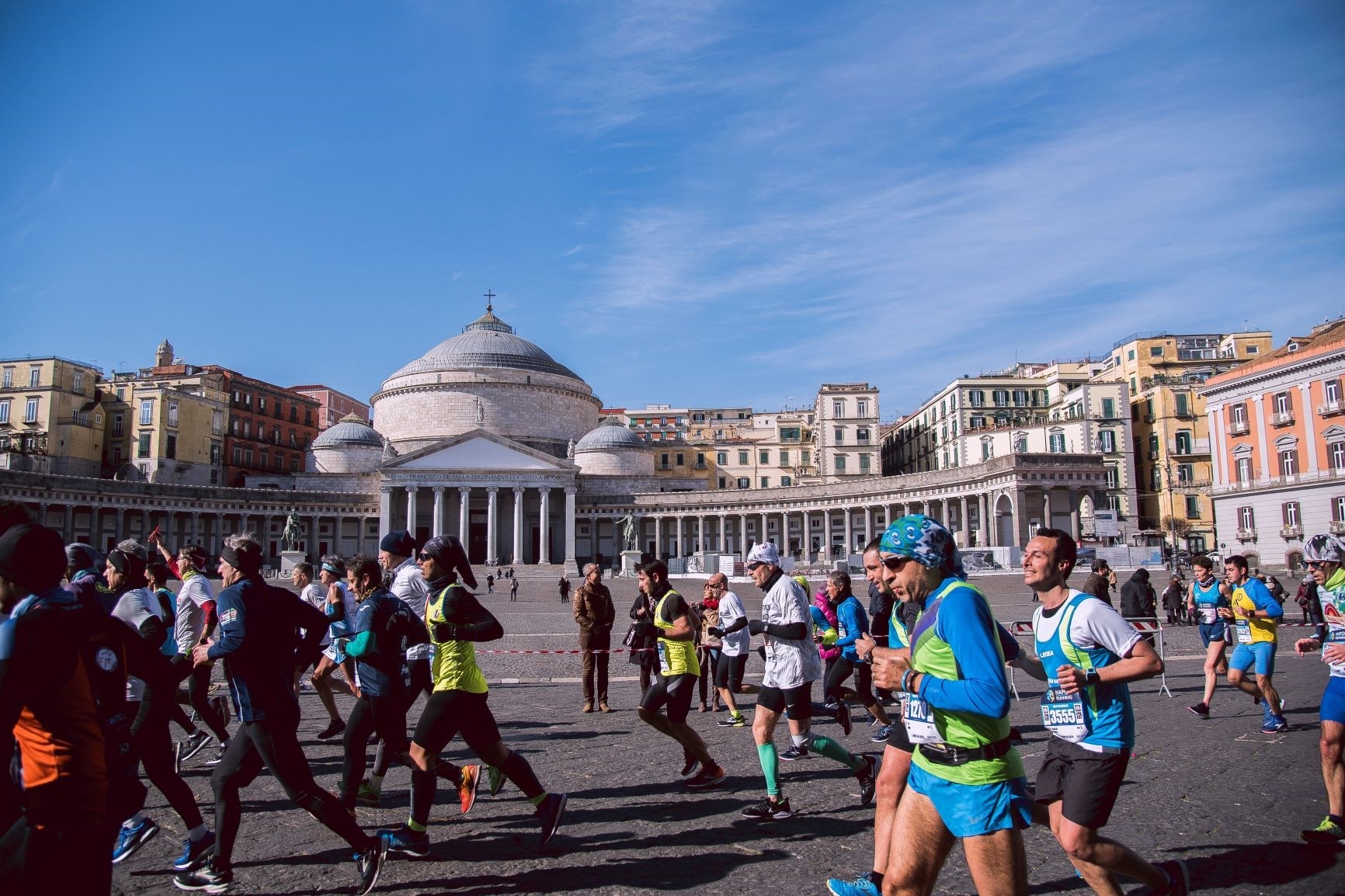
We were ready to welcome them and their families and hear their stories as they get to know or rediscover our beautiful city; running the Twingo Relay and the Family Run & Friends with the children.
At the same time, as much as passionate and motivated we are to build, after careful consultations with local and international (political and sports) institutions, we have to announce that due to the public health situation we are forced to cancel the Napoli City Half Marathon, originally scheduled on 28 February, 2021.
The safety of the runners is of utmost importance and we were guided by this absolute priority for our organization. Irrespective of this unfortunate development, we will remain close to the runners, we wish to motivate them to keep on running and training, and we want to share our passion and commitment.
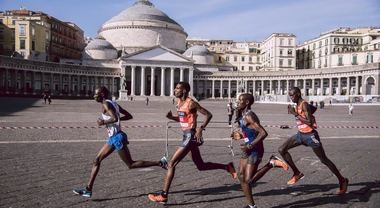
We are working on a digital event (virtual race + virtual expo) that will be announced in the coming weeks. All runners who have already registered for the Napoli City Half Marathon 2021 will have the options to:
1) Transfer their registration to the Napoli City Half Marathon 2022 sending an email to info@napolirunning.com with subject “Transfer registration to Napoli City Half Marathon 2022”
2) Request a full refund of the registration by sending an email to info@napolirunning.com - with subject line "Napoli City Half Marathon refund". This needs to be done within February 28, 2021 at the latest.
3) Register for the Napoli City Half Marathon Virtual Race and ask, if due, for a refund of the difference in price between the cost of registration for the Napoli City Half Marathon and the cost of registration for the virtual event.
In this case, please send us an email to info@napolirunning.com - with subject "Napoli City Half Marathon 2021 digital".
We are looking forward to seeing you again soon.
(01/08/2021) ⚡AMPby Carlo Capalbo
Napoli City Half Marathon
The Napoli City Half Marathon is the most growing running event in Italy. The race, certified by IAAF / AIMS/ European Athletics, is held inoptimal conditions with an average temperature of 10 ° C. From thewaterfront to the Castel dell'Ovo, the Teatro San Carlo to the Piazzadel Plebiscito, the course will lead you through the most fascinatingareas of the city,...
more...Agnes Keleti is the oldest surviving Olympic Champion and she will celebrate her 100th brithday
This coming Saturday (January 9), a remarkable woman - and significant sporting figure - is due to reach the landmark of her 100th birthday.
Ágnes Keleti is the oldest surviving Olympic champion, having won 10 medals for Hungary in gymnastics at the Helsinki 1952 and Melbourne 1956 Games, including five golds. It is understood that she plans a modest celebration at her house in Budapest.
What makes Keleti’s sporting distinction even more impressive is that she did not get an opportunity to compete in the Olympics until she was 31, with the Second World War having put paid to the proposed 1940 and 1944 Games and injury having cruelly robbed her of the chance to take part in the London Games of 1948.
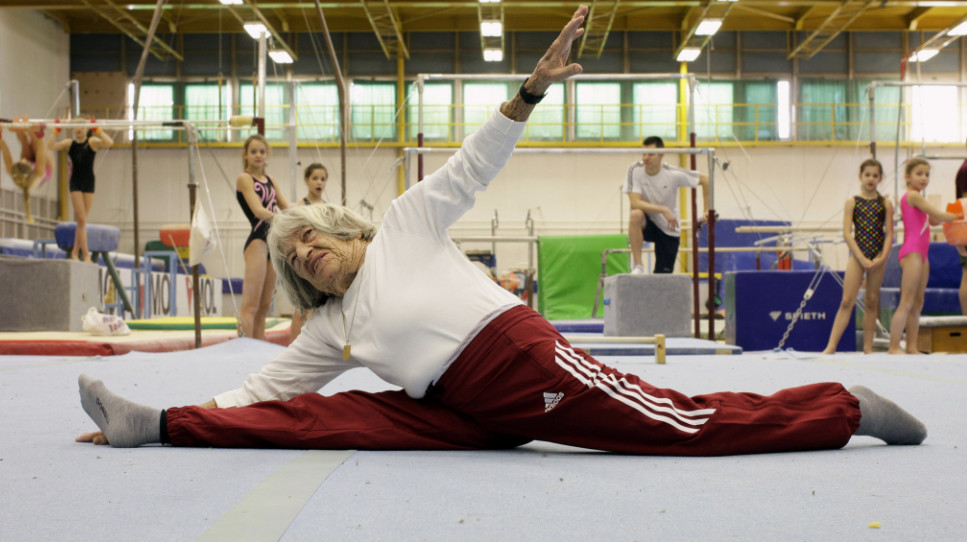
But Keleti faced challenges of a more profound nature during the War. Had it not been for her bravery, resourcefulness and luck she might have suffered the same fate as her father and other relatives in being killed by the Nazis.

Keleti had taken up gymnastics at the age of four, and she joined the VAC Sports Club, the only Jewish club in Hungary. At 16 she had won her first national title - she would go on to add nine more. As such Keleti looked a sure bet to be in the Hungarian team for the 1940 Olympics that were due to be held in Tokyo.
The war intervened, however, and in 1941, with Hungary fighting alongside Germany and Italy as part of the Axis powers, Keleti - born Agnes Klein - was expelled from her gymnastics club for being Jewish and was forced to go into hiding with her family in the countryside.
As conditions grew even more dangerous for her, she survived thanks in part to assuming a false identity and working as a maid. In 1944, when the Nazis occupied Hungary, she hastily married fellow gymnast István Sárkány, believing that it would make her less likely to be sent to a labour camp. They divorced in 1950.
Keleti’s father and uncles were among the 550,000 Hungarian Jews killed in Nazi concentration camps, perishing after being sent to Auschwitz.
Her mother and sister went into hiding and were saved by Swedish diplomat Raoul Wallenberg, who found a place for them in Budapest in a "Swedish house". Keleti, left on her own, bought the identity papers of a Christian girl and spent the rest of the war working as a furrier and as a maid for a Nazi-sympathising family in a small Hungarian village.
Later Keleti worked in an ammunition factory and in the household of a German general stationed in the Hungarian capital. She reportedly smuggled the general’s leftover food to her sister and mother once a week.
In the winter of 1944-1945, during the Siege of Budapest by Soviet forces, Keleti would go out in the mornings to collect the bodies of those who had died and place them in a mass grave.
After the war Keleti, a talented musician, played the cello professionally and resumed her gymnastics career. She qualified for the 1948 Olympics in London, but missed the competition after tearing a ligament in her ankle. Thus she had to wait until 1952, in Helsinki, to start her Olympic career.
Keleti earned four medals, including gold in the floor exercise, and the following year she won a world title on uneven bars.
Four years later in Melbourne, Keleti became, aged 35, the oldest female gymnast to win gold as she earned victory in three of the four individual event finals - floor, bar and balance beam - and brought her Olympic medal collection to 10.
On October 8 this year, Keleti also became the oldest living Olympic medallist following the death at the age of 100 of John Russell, who won an equestrian team bronze with the United States at the 1952 Helsinki Olympics. Russell had become the oldest living Olympic medallist on August 17 this year following the death of Sweden’s 1948 4x400m bronze medallist Folke Alnevik, who had been born 33 days before him.
(01/08/2021) ⚡AMPby Mike Rowbottom
Super foods for runners to maintain a healthy immune system
Every winter, immunity becomes an important topic of conversation as the temperatures drop and we enter cold and flu season. In the midst of the COVID-19 pandemic, having a strong immune system has become even more crucial to maintaining health. While this will not guarantee that you won’t get sick (or get the coronavirus), it is still worth doing whatever you can to keep your body healthy.
We spoke with elite Canadian runner and registered dietitian Rachel Hannah to get her top food recommendations for runners who are looking to boost their immune systems and stay healthy this winter.
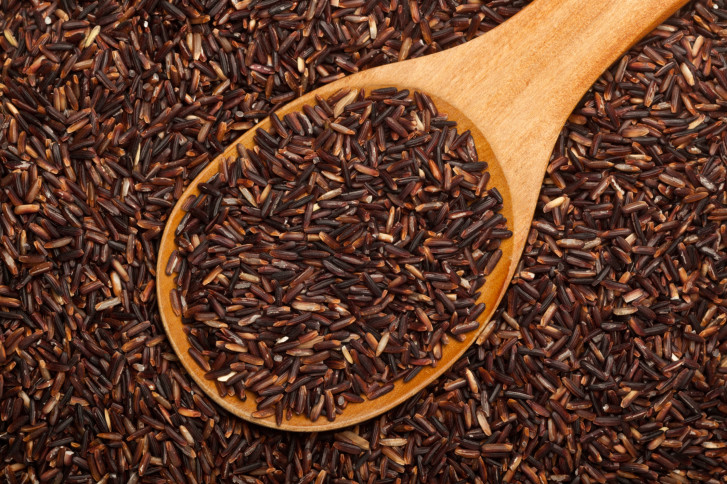
Plenty of brightly-colored fruits and vegetables
you´ve heard it before but it´s worth mentioning again: eating a wide variety of fruits and vegetables is a key component to maintaining a strong immune system, thanks to their antioxidant content. These nutrients improve the health of your gut microbiome, which plays a role in training your immune system and avoiding an excess inflammatory response to pathogens.

Hannah recommends eating as many colours as possible, especially leafy greens, because that will ensure you get all the antioxidants and phytochemicals necessary for proper immune function. When it comes to fruit, berries are at the top of her list thanks to their high density of antioxidants. During the winter, fresh berries may not always be available, but frozen berries are just as beneficial, and can often provide more nutrients than the fresh variety in the off-season.
Probiotics
Runners will have to eat plenty of probiotic-rich foods because they help maintain a balanced composition of gut bacteria. Prolonged or intense training can disturb the gut and increase your risk for gastrointestinal (GI) problems, which will in turn affect your immune system.
Hannah´s favorite food sources of probiotics are yogurt and kefir, and she says that miso soup is a great choice for runners as well. Other probiotic-rich foods include buttermilk, tempeh, sauerkraut, kimchi, and kombucha.
Whole Grains
Wholes grains including brown rice, wild rice, teff, barley and quinoa cannot be digested the same way other foods can. Instead, we rely on the microbiota in our digestive tract to break the fibre down into fatty acids.
These fatty acids help maintain our gut mucus barrier, which keeps pathogens out of our system. Hannah says that whole grains also contain important nutrients for immune health, and she recommends that all runners include them as a regular part of their diet.
Vitamin D
Hannah also points out the importance of vitamin D when it comes to immune health. While there are some food sources of vitamin D (such as fatty fish, fortified dairy products and fortified cereals), she explains that it is difficult to meet your daily requirement through food. For this reason, Hannah recommends runners take a supplement, since not only does it benefit your immune system, but vitamin D can help prevent other issues like fatigue, muscle pain, and stress fractures. Most health experts will recommend that adults 14 to 50 years old take 600 IU per day, however you should talk to your doctor to determine your specific needs, especially if you fall outside this age bracket.
Eating these foods will not guarantee that you won’t get sick, but they will reduce your risk of illness and improve your body’s ability to fight infections when they happen.
(01/08/2021) ⚡AMPby Brittany Hambleton
Kenya's half marathon record holder Kibiwott Kandie says he is shifting his focus to the 10,000m and looks to earn a ticket for this year's Tokyo Olympics
Kenya's half marathon record holder Kibiwott Kandie says he is shifting his focus to the 10,000 metres as he looks to earn a ticket for this year's Tokyo Olympics and help end his country's 53-year wait for a gold medal in the event.
Kandie smashed the half marathon world record by 29 seconds at the Valencia Half Marathon last month, finishing in 57 minutes and 32 seconds and breaking the previous record of 58:01 set by compatriot Geoffrey Kamworor in September 2019.

Kenya's last Olympic gold in the 10,000m came in 1968 when Naftali Temu triumphed in Mexico City, and Kandie is hoping to go one better than Paul Tergat and Paul Tanui, who won silver in 2000 and 2016 respectively.
"I have the drive to prove to the world that I can also perform in track, that is why I made a decision to compete in a 10,000m event with the aim of securing an Olympic ticket," Kandie told the Xinhua news agency.

"I will be more than happy to see the Kenyan flag being hoisted for the 10,000m in Tokyo.
"I know we, as a country, haven't posted the best results in 10,000m recently but I believe with team work and early preparations we will be able to achieve good results in the Tokyo Games."
The Tokyo Olympics are due to take place from July 23 to Aug. 8 after being pushed back by a year because of the novel coronavirus pandemic.
(01/07/2021) ⚡AMPby Sportstar
Tokyo 2020 Olympic Games
Fifty-six years after having organized the Olympic Games, the Japanese capital will be hosting a Summer edition for the second time, originally scheduled from July 24 to August 9, 2020, the games were postponed due to coronavirus outbreak, the postponed Tokyo Olympics will be held from July 23 to August 8 in 2021, according to the International Olympic Committee decision. ...
more...Italian sprinter 100m record-holder Filippo Tortu tested positive for coronavirus
Italian 100m record-holder Filippo Tortu has revealed on social media that he has tested positive for coronavirus.
He wrote: "I recently took the rapid test and despite the preventions implemented, I tested positive...I proceeded to contact all the people with whom I remember being in contact in the last period; if you have not received my message and we have interacted, I ask you to pay close attention and take the test too.

I want to reassure you about my condition: I'm fine, but my priority is to keep all the people I've seen in the last period safe, and to observe the quarantine until I return negative." Writes La Gazzetta dello Sport.
(01/07/2021) ⚡AMPby Alfonz Juck
The two-time Canadian marathon champion Trevor Hofbauer has officially joined the team at Saucony
On Wednesday morning, Saucony announced that it has signed Canadian marathon champion and Olympian-to-be Trevor Hofbauer as a sponsored athlete. The 2:09:51 Calgary-based marathoner was previously unsponsored, and the new partnership comes just seven months out from his Olympic debut.
Hofbauer qualified for the Tokyo Olympics with his win at the Canadian Marathon Championships (which doubled as the Canadian trials) in Toronto in 2019, where he ran his PB and the second-fastest time in national history.
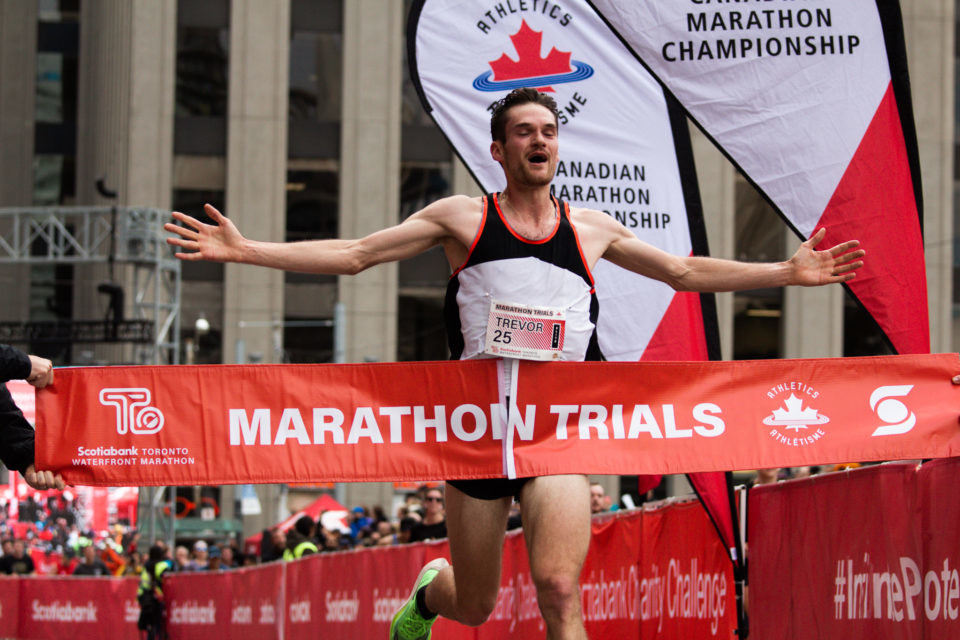
Hofbauer joins fellow canadian marathoner Malindi Elmore on the Saucony team. Elmore, who signed with Saucony in November, is the national marathon record holder with a blazing-fast PB of 2:24:50 that she ran in Houston in early 2020. For Saucony, adding Hofbauer to the team was not a difficult choice.
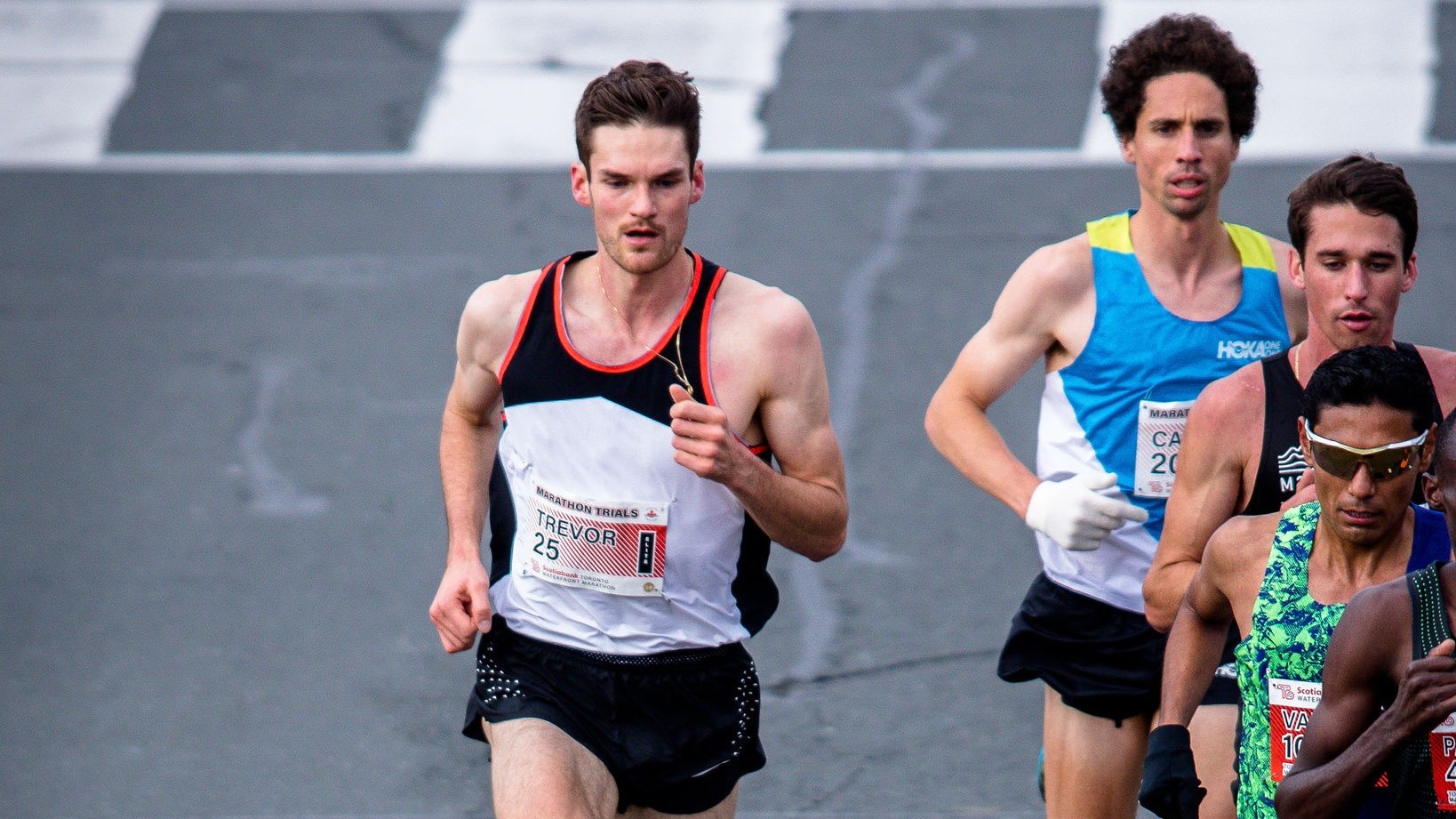
His win in 2019 was the second Canadian marathon crown of his career, and he also won the national half-marathon championships in Calgary in 2018.
Hofbauer didn´t race in 2020 due to COVID-19, but he had a great run from 2017 to 2019, winning a Canadian championship each year. Now into 2021, he will be looking to get back to his winning ways with his new support crew as he works toward the Olympics.
"I am honored to represent Saucony within the running community and at the 2021 Olympics,” Hofbauer said.
“The Saucony Canada team has made me feel extremely valued and their support goes a long way in allowing me to reach my full potential. Saucony’s commitment to sustainability, the Canadian running community, and their leadership are top-notch. I look forward to the future of our partnership together.”
(01/07/2021) ⚡AMPby Ben Snider-McGrath
Tokyo Olympics torch exhibition has been postponed to prevent spread of COVID-19
The exhibition of the Olympic and Paralympic Games across the greater Tokyo area has been postponed due to the worsening situation of the COVID-19 pandemic.
The Tokyo Metropolitan Government announced on Thursday in a statement that the decision is made to "reduce the flow of people and the further spread of COVID-19."
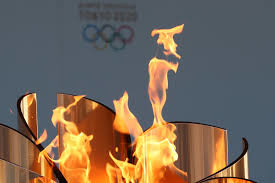
The torches have traveled to 14 places since Nov. 2 and was scheduled to be exhibited on Thursday in Akiruno City. The exhibition will be postponed until January 29.
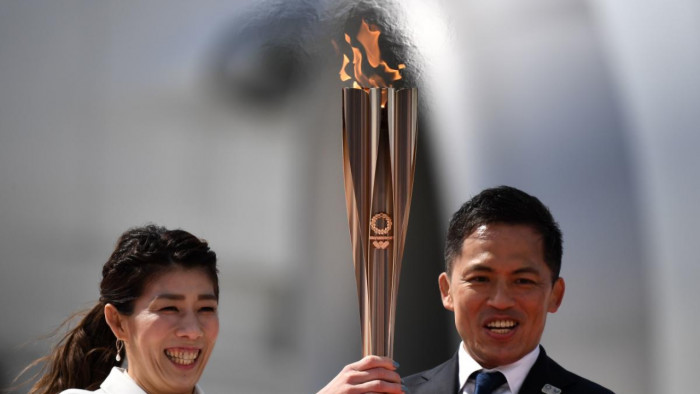
Other exhibitions may also be postponed since Japanese Prime Minister Yoshihide Suga has declared a state of emergency in the Tokyo metropolitan area including Tokyo, Saitama, Chiba and Kanagawa prefectures, authorizing tougher measures to fight a resurgence in COVID-19 infections.
The state of emergency will be effective from Friday to Feb. 7, with measures including urging people to stay at home and calling for restaurants and bars to stop serving alcohol by 7 p.m. and close by 8 p.m.
Gyms, department stores and entertainment facilities will also be subject to shorter hours
(01/07/2021) ⚡AMPby Xinhua News
Tokyo 2020 Olympic Games
Fifty-six years after having organized the Olympic Games, the Japanese capital will be hosting a Summer edition for the second time, originally scheduled from July 24 to August 9, 2020, the games were postponed due to coronavirus outbreak, the postponed Tokyo Olympics will be held from July 23 to August 8 in 2021, according to the International Olympic Committee decision. ...
more...World half marathon record holder Peres Chepchirchir seeks inclusion in Kenya's Olympic marathon team
World women's half marathon record holder Peres Chepchirchir harbors an Olympic dream after her successful but COVID-19 pandemic upended year which saw her claim three successive marathon podiums.
The 27-year-old Kenyan broke her own world record in the women's half marathon by crossing the line in 1:05:16 at the 2020 World Half Marathon championships in Gdynia, Poland, before ending the year with victory at the Valencia Marathon timing 2:17:16, a time that saw her move up to positive five on the all-time world women list.
"I had a very successful year in 2020 despite all the challenges brought about by COVID-19 pandemic, I'm glad I was able to compete. My new year wish is to see if Athletics Kenya can consider my performance and make an amendment on the 2020 Tokyo Olympics marathon team by including me in the squad," Chepchirir told Xinhua on Wednesday.
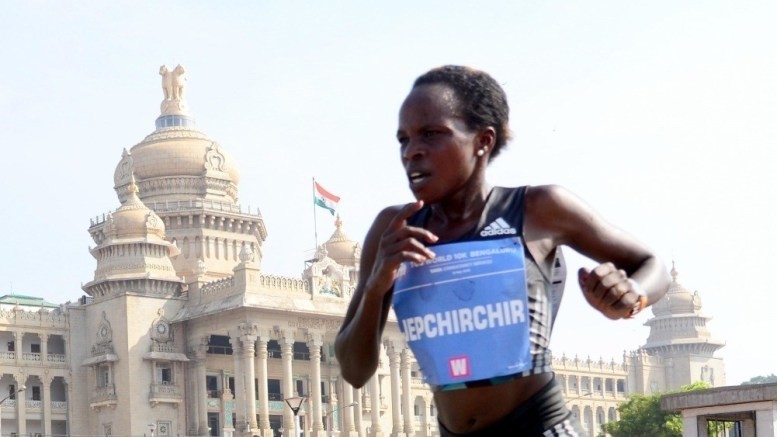
"I will love to compete at the Olympics; it will really make me a complete runner," she added.
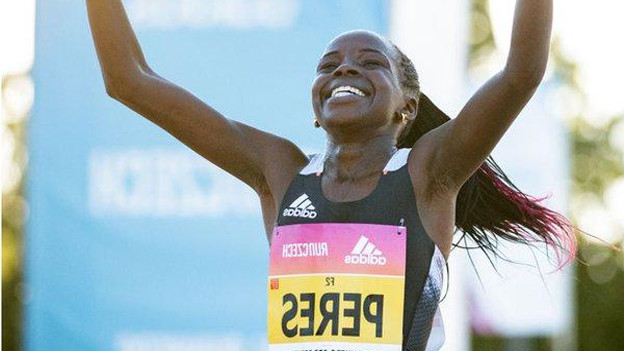
Earlier in 2020, Athletics Kenya (AK) named world marathon record holder Brigid Kosgei, world marathon champion Ruth Chepngetich, Vivian Cheruiyot, a winner of the Olympic 5,000m title in 2016 to the Olympic team.
The 2019 Frankfurt Marathon champion Valary Aiyabei and 2014 world half marathon bronze medallist Sally Chepyego were named as reserves.
The 37-year-old, Cheruiyot aims to compete at her fifth Olympic Games, a record tally for a Kenyan athlete.
However, Paul Mutwii, Athletics Kenya senior vice president and director of competitions told Xinhua that the federation will make some adjustments to the marathon team in order to send a strong squad to the Games which is scheduled for July 23 to Aug. 8.
"Definitely, there will be some changes to the marathon squad depending on the athletes' current form. In fact, in the coming weeks, I will be chairing the technique committee that will determine who will be drafted into the team then make the announcement," Mutwii said on Wednesday.
The world men's marathon record holder Eliud Kipchoge, Lawrence Cherono, a two-time Amsterdam Marathon champion who also won in Boston and Chicago in 2019, and world bronze medalist Amos Kipruto, who has a best of 2:05:43 were named in the men's team.
Two-time Honolulu Marathon winner Titus Ekiru and 2016 world half marathon silver medalist Bedan Karoki were drafted reserves.
(01/07/2021) ⚡AMPby Xinhua News
Tokyo 2020 Olympic Games
Fifty-six years after having organized the Olympic Games, the Japanese capital will be hosting a Summer edition for the second time, originally scheduled from July 24 to August 9, 2020, the games were postponed due to coronavirus outbreak, the postponed Tokyo Olympics will be held from July 23 to August 8 in 2021, according to the International Olympic Committee decision. ...
more...20-year-old Norwegian phenom Jakob Ingebrigtsen has already had an incredible career, but he's hungry for a lot more
In a video recently published by European Athletics, Norway’s Jakob Ingebrigtsen discusses his career so far and his hopes for the future. The multiple national and European record holder has had an amazing career so far, and he’s only 20 years old. This short video is a great chance to see the mindset of Ingebrigtsen, which is certainly a contributing factor to his many successes on the race course.
He outlines his goal for the future in the video, and while it is quite simple to explain, it will be far from easy for him to reach: he wants to be the fastest runner ever.

In a video recently published by European Athletics, Norway’s Jakob Ingebrigtsen discusses his career so far and his hopes for the future. The multiple national and European record holder has had an amazing career so far, and he’s only 20 years old. This short video is a great chance to see the mindset of Ingebrigtsen, which is certainly a contributing factor to his many successes on the race course. He outlines his goal for the future in the video, and while it is quite simple to explain, it will be far from easy for him to reach: he wants to be the fastest runner ever.
A family focus

It’s easy to look at Ingebrigtsen and his older brothers Henrik, 29, and Filip, 27, both accomplished runners themselves, and think they have a natural talent for running. That certainly could be part of their success, but Ingebrigtsen doesn’t think so. “You’re not born with talent,” he says. Instead, he says it comes down to your effort and how much work you put into the sport. “When I was four, five, six years old, people said that I had more talent than them, but I’d already run maybe 10 times more than the people I was competing against.”
Ingebrigtsen talks about his family’s focus, which is less on running and more on winning. From a young age, he watched his brothers run and he decided he had to beat them one day. After chasing them for years, he has accomplished that goal, as Ingebrigtsen has a faster PB than his brothers in every event he has raced in his career except for the mile (a race in which Filip and Henrik have both run faster than their younger brother).
Hard to satisfy
Ingebrigtsen expects a lot from himself, and this mindset can leave him disappointed even when he performs well. He points to the 2017 European U20 Championships in Grosseto, Italy. “I don’t look back at Grosseto as a good championship,” he says. He fell in the 1,500m and couldn’t recover, ultimately finishing in eighth place. Even though he ran to a pair of gold medals in the 5,000m and 3,000m steeplechase later on in the week, Ingebrigtsen still considers that campaign to be a negative experience.
The following year, his father (and coach) asked him what his goals were for the season. Just 17 years old, Ingebrigtsen said he wanted to win at the senior European Championships. He says his father scoffed at him, telling him to be serious, but Ingebrigtsen wasn’t joking. His goal was to win gold, and that’s exactly what he did. Several months later, at the European Championships in Berlin, he ran to gold in the 1,500m and 5,000m, beating his brothers in both races.
Inebrigtsen has had a legendary career already, and he’s still so young. Now just 20, he still has many years of running ahead of him, and although he has some incredible achievements to his name already, he says he wants a lot more. “My dream is to be as good a runner as I can be, to win as much as possible and to run as fast as possible,” he says. “I wouldn’t say that I’m 100 per cent satisfied if I’m not the fastest ever. I think I can go faster. But only time will tell if I’m able to.” It’s a big goal, but aiming to beat his older brothers when he was a young boy and to win at the European Championships as a 17-year-old were both lofty dreams, too, and he still managed to do both.
(01/06/2021) ⚡AMPby Ben Snider-McGrath
Senior International Olympic Committee (IOC) member Richard Pound claims prioritizing athletes for COVID-19 vaccine is the most realistic way of staging Tokyo 2020
Senior International Olympic Committee (IOC) member Richard Pound has claimed prioritizing athletes for the COVID-19 vaccine would be the "most realistic way" of ensuring the Tokyo 2020 Olympic and Paralympic Games take place.
Uncertainty remains over whether year's Olympic and Paralympics in the Japanese capital will go ahead with less than 200 days to go before the event is due to open.

The Games were postponed from 2020 due to the COVID-19 pandemic, but the health crisis seems to have worsened after the discovery of the new variant of the virus, thought to be up to 70 per cent more transmissible.
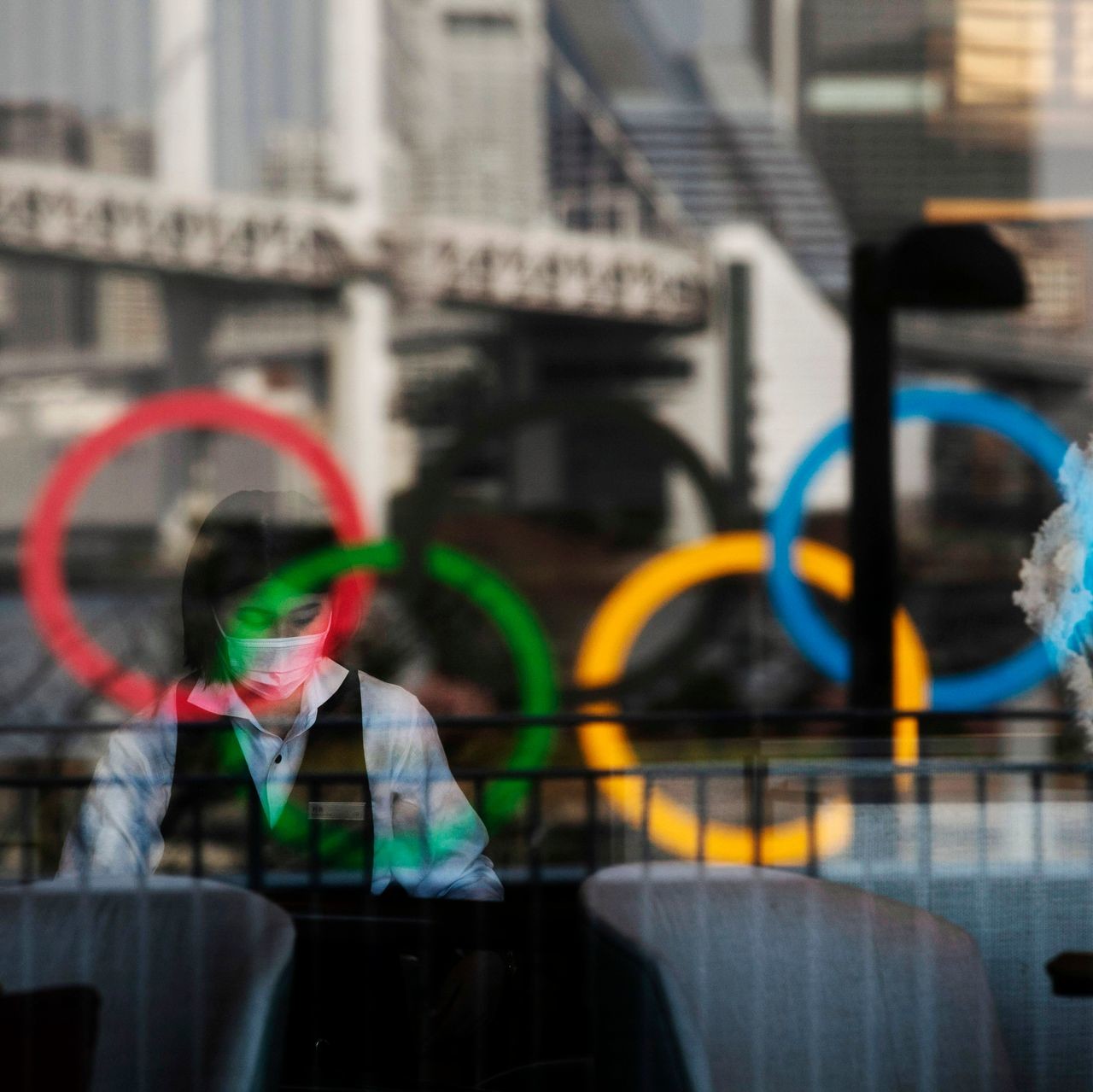
Host country Japan is one of the nations to detect the new variant and is now on the cusp of a state of emergency after reporting a record 5,307 daily coronavirus cases today.
There is hope the development of a number of COVID-19 vaccines will allow Tokyo 2020 to take place safely, however, with the Pfizer-BioNTech vaccine currently being administered in the countries such as the UK and the United States, while it is awaiting approval in Japan.
Pound denied prioritizing athletes for the COVID-19 vaccine to ensure the Games go ahead would cause a public outcry.
"In Canada where we might have 300 or 400 hundred athletes - to take 300 or 400 vaccines out of several million in order to have Canada represented at an international event of this stature, character and level - I don't think there would be any kind of a public outcry about that," Pound told Sky News.
"It's a decision for each country to make and there will be people saying they are jumping the queue but I think that is the most realistic way of it going ahead."
IOC President Thomas Bach has previously encouraged athletes to have a COVID-19 vaccination before Tokyo 2020 but insisted it would not be an entry requirement.
He revealed the IOC was in talks with manufacturers and other health experts but said the organization would not jump the queue in front of those in greater need of a vaccination.
"We made it clear from the very beginning that the first priorities are for the nurses, medical doctors and everybody who keeps our society alive, despite the coronavirus crisis," Bach said during a visit to the Tokyo National Stadium in November.
"These are the people who deserve to be the first ones to be vaccinated."
The Tokyo 2020 Olympics are scheduled to run from July 23 to August 8, with the Paralympics due to follow from August 24 to September 5.
Organizers plan to have a number of COVID-19 countermeasures in place should the Games go ahead.
(01/06/2021) ⚡AMPby Nancy Gillen
Tokyo 2020 Olympic Games
Fifty-six years after having organized the Olympic Games, the Japanese capital will be hosting a Summer edition for the second time, originally scheduled from July 24 to August 9, 2020, the games were postponed due to coronavirus outbreak, the postponed Tokyo Olympics will be held from July 23 to August 8 in 2021, according to the International Olympic Committee decision. ...
more...Ryan Hill has signed with HOKA ONE ONE NAZ Elite
Ryan Hill, the 2016 World Indoor silver medalist at 3,000 meters who has qualified for three US World Championship teams at 5,000 meters, has signed with HOKA ONE ONE Northern Arizona Elite on a multi-year deal. Hill, who turns 31 on January 31, spent the last seven years of his professional career under Jerry Schumacher as part of the Bowerman Track Club, which he joined after graduating from North Carolina State University in 2013.
The signing represents a significant change for Hill, who will now be based in Flagstaff and its 7,000 feet of elevation year-round as he chases his first Olympic team. Hill was 5th at the 2012 Trials and 6th in 2016, both in the 5,000 meters, and will remain focused on that event for the foreseeable future.
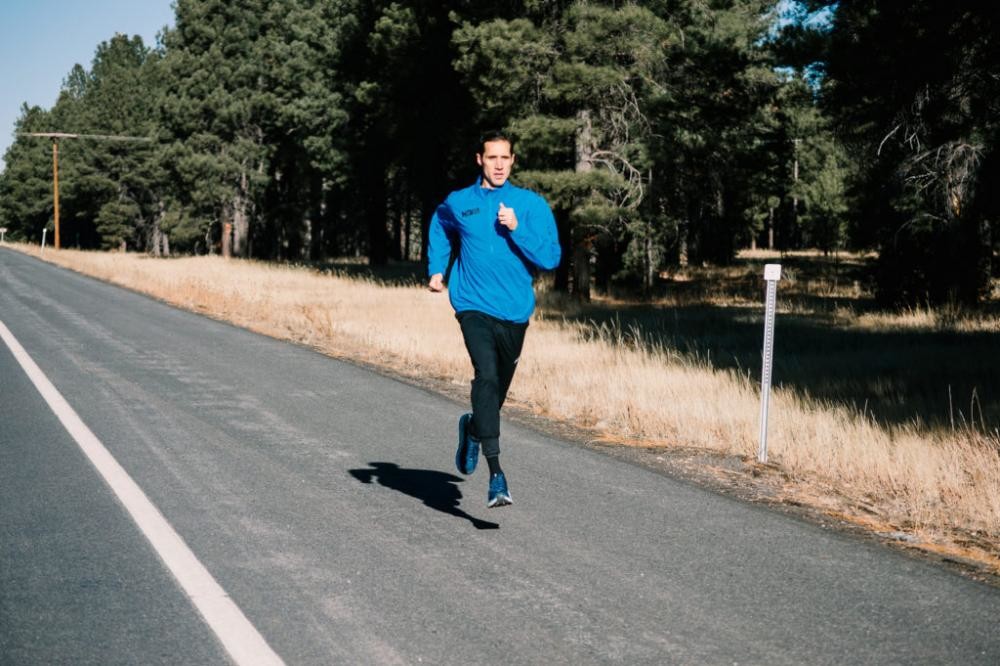
It’s also a big move for NAZ Elite, which continues to grow after signing a four-year extension with HOKA through 2024. Hill’s personal bests of 7:30 for 3,000 and 13:05 for 5,000 are significantly faster than NAZ Elite’s team records of 7:47 and 13:27.
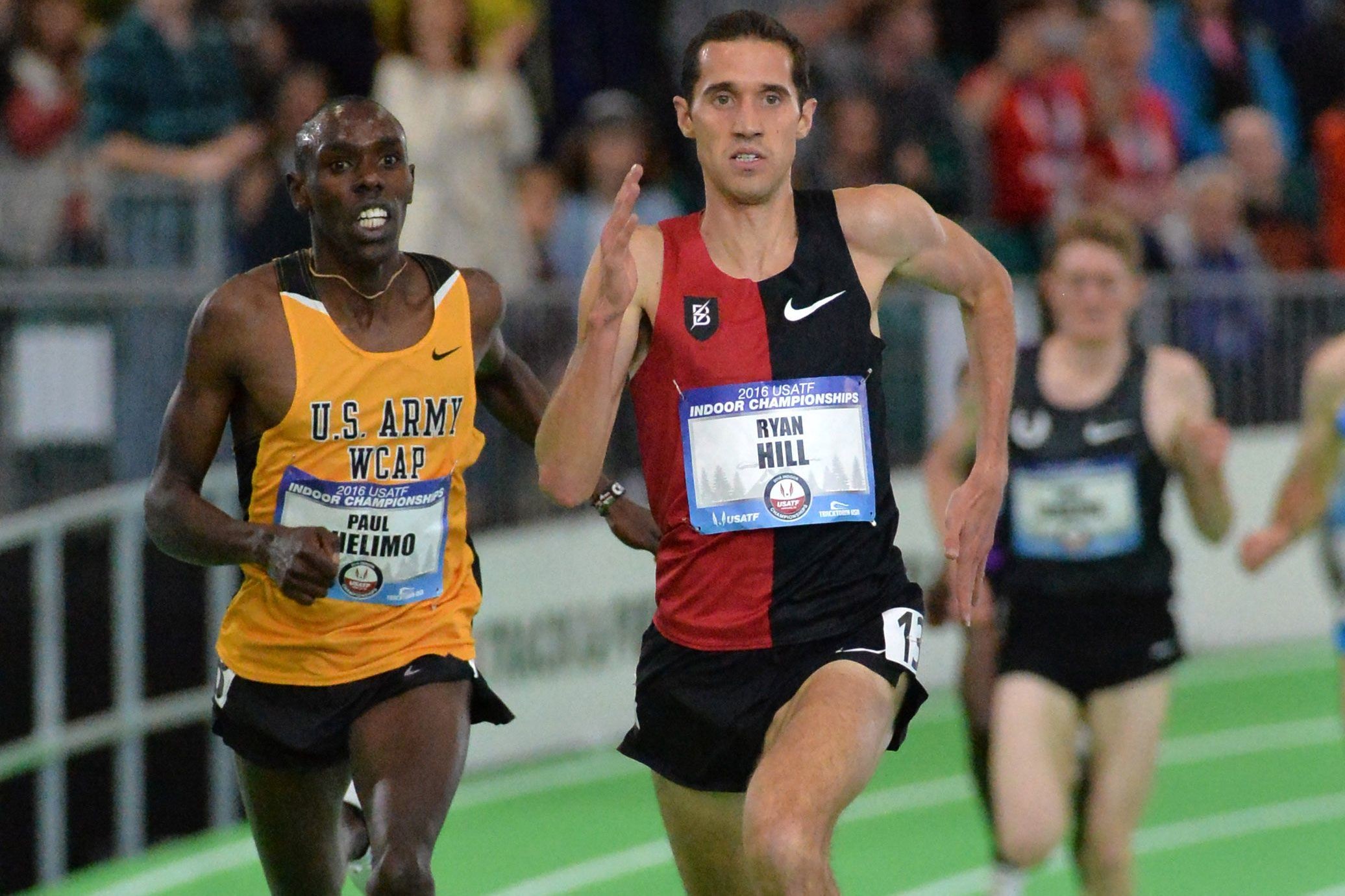
“I’m very confident in the way we train and what that has produced for people at 5,000 meters,” says NAZ Elite coach Ben Rosario. “We just haven’t had a 5,000-meter specialist. Our athletes have gotten a lot better at 5,000 meters, and I think that will translate to someone like Ryan. It’s just, he’s starting off at a different point. And I think his ceiling in that event is different than Stephanie Bruce or somebody…I’m really excited about his ability to close. I love people who can close, like any coach. So my job becomes, hey, let’s just make sure we can get him strong enough to be there at 250m to go, because he’s shown time and time again that if he’s there, he’s very dangerous.”
NAZ Elite has built its reputation as a marathon-focused squad, but Rosario would also like the group to be competitive in the 5,000 and 10,000 meters on the track. That was already the case on the women’s side — Kellyn Taylor and Bruce finished third and fourth at USAs in the 10,000 in 2019. Now, with the additions of Hill and Tyler Day (13:16/28:04 pbs), he believes the men can make some noise in what is shaping up as a pivotal two years for American track & field.
“I view this like a general manager,” Rosario says. “There are different time periods where different things are really important, right? And in this country, an Olympic year is always very important on the track. But then I think next year, track is arguably just as important because the World Championships are in Eugene. So we wanted to have a presence on the track at 5,000 and 10,000 on both sides, men and women. And now I think we do.”
Hill and Nike parted amicably. Six days ago, the Bowerman Track Club posted a lengthy Instagram post announcing with “great sadness” that Hill, whom they called “irreplaceable,” would be leaving. Hill also went to Instagram to say it would be “incredibly hard to leave my lifelong friends, coaches, and some of the best teammates in the world. I’m ultimately very excited and motivated for my next opportunity.”
(01/06/2021) ⚡AMPby LetsRun
New event from Marine Corps Marathon, The Quantico Crucible 5km
Marine Corps Marathon has bucked the trend by adding a new event to their race calendar at a time when most of the established races are being side-lined.
The Quantico Crucible 5km on Saturday 17 April is an in-person event in which participants aged 10+ run the distance while besting three on-course challenges and then complete high intensity fitness drills.
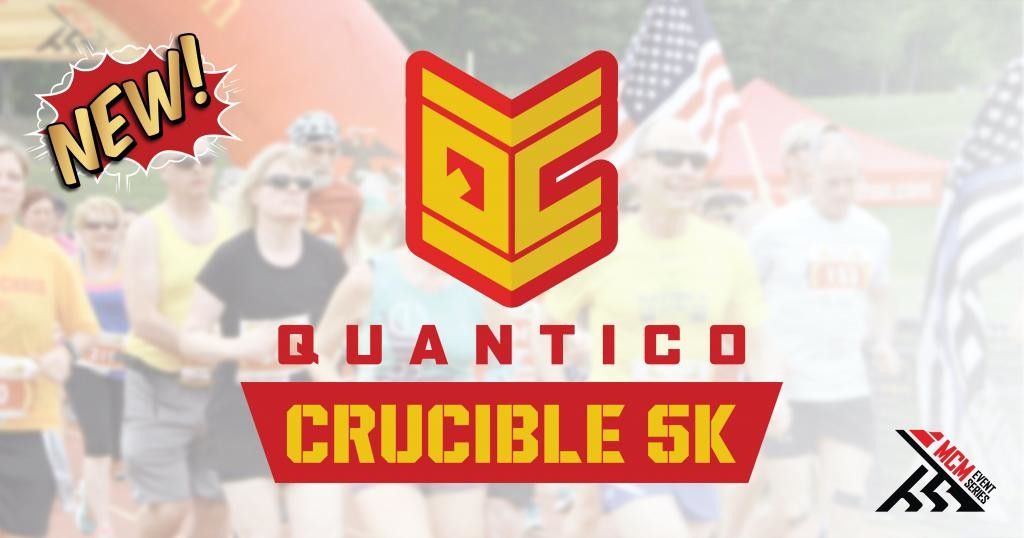
The name and format of the event are a bow to a US Marine’s final challenge in recruit training, “The Crucible”, a 54-hour training exercise where recruits are broken down into squads before facing tasks that test their physical strength, skills and the values they learned throughout training.
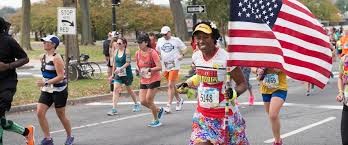
Only those who make it through this challenge are handed their Eagle, Globe and Anchors, symbolising the completion of the gruelling journey to earn the coveted title of U.S. Marine.
The Crucible 5km will take place in the early evening at Marine Corps Base Quantico. Each runner will receive a keepsake 8-pound (3.6kg) sandbag to be used while completing some of the physical challenges.
The sandbags will feature the official event logo inspired by the gold stripes on red flash as seen in the rank insignia worn on Marine uniforms.
Registration opens on 6 January at www.marinemarathon.com. For USD 40 participants receive the official event shirt, bib and a finisher medal. Participants will be divided into small groups and runners may select from multiple start times beginning at 17.00.
(01/06/2021) ⚡AMPMarine Corps Marathon
Recognized for impeccable organization on a scenic course managed by the US Marines in Arlington, VA and the nation's capital, the Marine Corps Marathon is one of the largest marathons in the US and the world. Known as 'the best marathon for beginners,' the MCM is largest marathon in the world that doesn't offer prize money, earning its nickname, “The...
more...The National Olympic Committee of Kenya (NOCK) has said there will be at least 100 athletes in the Tokyo Olympics this year
The National Olympic Committee of Kenya (NOCK) has said there will be at least 100 athletes in the Tokyo Olympics this year, months after the global showpiece was postponed due to the coronavirus pandemic.
NOCK said on Monday there are already programs and enough training camps for adequate preparations. This will help athletes resume training and prepare for the residential training camp scheduled to take place in April.
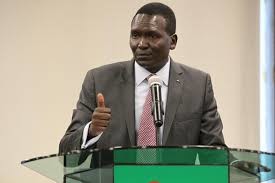
The Kenyan team is in July expected to proceed to the international training camp in Kurume City, Japan for at least 14 days.
“We expect to take at least 100 participants to the games with an expectation a higher medal haul than ever before. We also seek to deliver the best-resourced team Kenya in history.
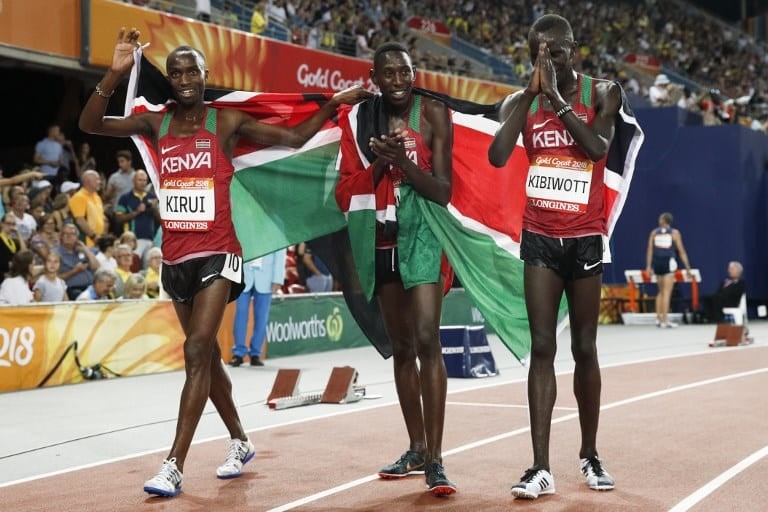
“We are well set and all processes activated to ensure that we deliver an athlete-focused, well managed, well-financed Olympic team as well as provide a memorable Olympic experience for all Kenya. Our resolve to deliver an exemplary Olympic experience is so strong, that our teams together with the Ministry of Sports, Art and Culture have been burning the midnight oil during the holidays to ensure that everything is set to go,” NOCK said in a statement seen by The Standard Sport.
The Paul Tergat-led body further vowed to continue supporting the qualified teams and those in the qualification process.
“NOCK in conjunction with IOC and ANOCA is providing scholarships to at least 15 athletes to help them prepare for Olympic games.
“Further, we are providing team preparation grants to the Volleyball Ladies team and the Rugby ladies team. All the teams currently in the qualification pathways will be supported by the Government and NOCK to ensure that they qualify for the games,” NOCK pointed out.
NOCK added that the Government has developed various programs aimed at empowering young athletes as they prepare to become global superstars.
“To promote youth development, we expect to roll out a sports science centre comprising of a high-performance centre for all national teams as well as a youth sports centre.
“These sports science centre will be instrumental in developing talents as well as improving the performance of our athletes and teams through advanced technical capacity and research,” said NOCK.
Tokyo 2020 organisers said in December that all 68 domestic sponsors for the Summer Olympics agreed in principle to extend their contracts for the delayed games, as growing COVID-19 infections in Japan overshadow the event.
Recent Japanese newspaper polls show two-thirds of the public believe the showpiece should be postponed again or cancelled altogether.
But Prime Minister Yoshihide Suga has repeatedly said he is determined to hold the Olympics as proof that humanity has defeated the deadly virus.
(01/05/2021) ⚡AMPby Waweru Titus
Tokyo 2020 Olympic Games
Fifty-six years after having organized the Olympic Games, the Japanese capital will be hosting a Summer edition for the second time, originally scheduled from July 24 to August 9, 2020, the games were postponed due to coronavirus outbreak, the postponed Tokyo Olympics will be held from July 23 to August 8 in 2021, according to the International Olympic Committee decision. ...
more...Ethiopian marathon ace Birhanu Legese sets sights on Olympic glory
While the staggering marathon feats of Eliud Kipchoge and to a lesser extent Kenenisa Bekele have quite righty earned the bulk of media attention in recent years, it would be a little churlish not to also acknowledge the feats of Ethiopian marathon ace Birhanu Legese.
Standing at 1.68m the diminutive Ethiopian, an NN Running Team team-mate of Kipchoge and Bekele, has claimed four successive marathon podiums which have included back-to-back successes in the Tokyo Marathon, a second place finish in the 2019 Berlin Marathon - to advance to third on the all-time marathon lists - and more recently a third place finish in the 2020 Valencia Marathon.
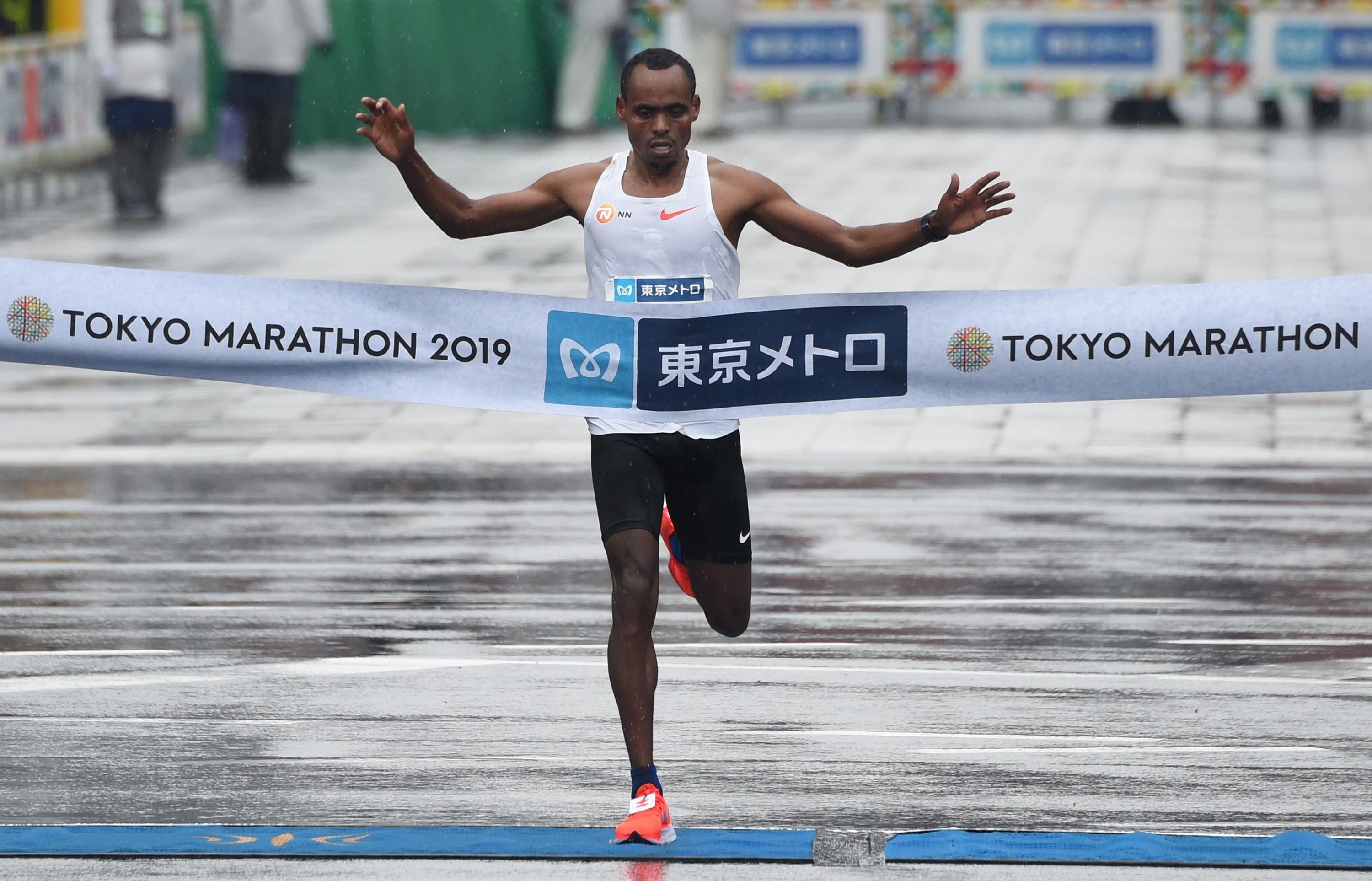
For sheer marathon consistency few can currently match the 26-year-old athlete, who according to his coach, Getaneh Tessema, has the potential to make history.
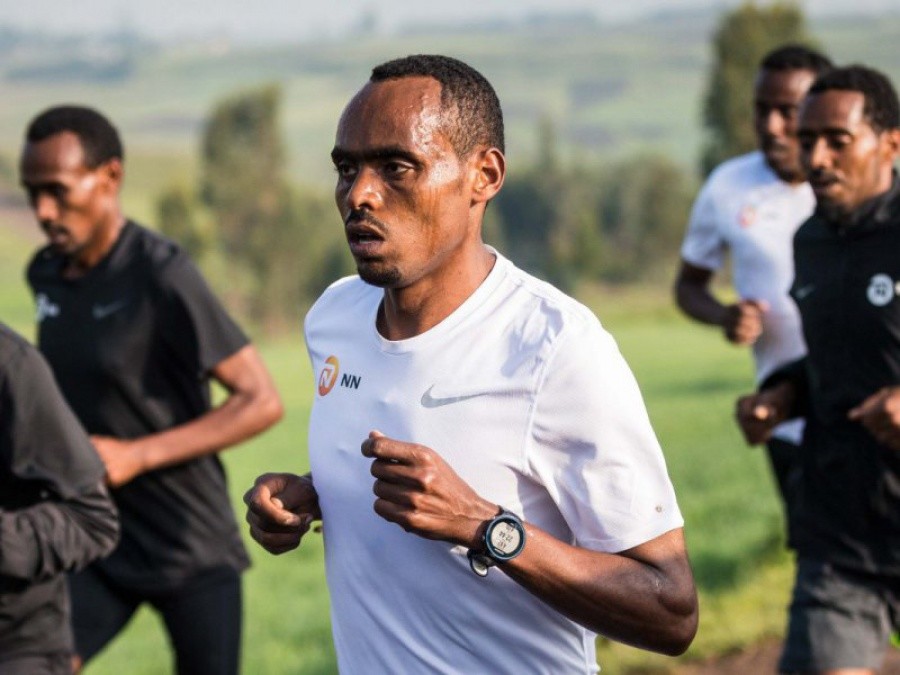
“There is no doubt Birhanu is a quality athlete,” explains Getaneh. “I see that every day in training. If everything goes perfectly, I know he can achieve the same results as Kenenisa and Kipchoge.”
Legese, the third eldest of seven siblings, enjoyed his breakthrough performance at the 2012 10km Great Ethiopian Run when placing second in 28:41 behind 2016 Olympic 5000m bronze medallist Hagos Gebrhiwet.
He continued to make steady progress for the next couple of seasons: in 2013 he clocked a slick 27:34 for 10km on the road in Taroudant and the following year posted a 5000m track PB of 13:08.88 in Shanghai.
Yet it was on the roads where Legese has most excelled and in 2015 he further hinted at his exciting potential by winning both the Berlin (59:45) and New Delhi (59:20) half marathons.
Notable marathon debut
The following couple of seasons he enjoyed intermittent success with victory in the 2016 RAK and 2017 New Delhi Half Marathons yet all too often he was hampered by ongoing shin splints issues, which prevented him from consistently producing his best.
In 2018 Legese made his eagerly awaited marathon debut in Dubai, running an outstanding time of 2:04:15 for sixth. Yet still he craved more.
“I was pleased with the time but not with the position,” he explains.
Stomach issues hampered his efforts later that year at the Chicago Marathon when he wound up tenth in 2:08:41 – more than three-and-a-half minutes behind race winner Mo Farah.
“I was in a lot of pain but I kept on going because I thought the pain would go away,” he recalls. “I was disappointed with the performance but as soon as I returned to training my disappointment disappeared.”
Tokyo win ushers marathon breakthrough
Unlike many elite Ethiopian athletes, Legese has chosen not to live in Addis Ababa but just north of the capital city in the town of Sendafa, where he lives with his brother, Gezahegne, and training partner Tariku Kinfu.
Away from the pollution of the city and living closer to his regular training routes has cut down his commute time to and from training and aided his rest and recovery with the consequence that he enjoyed a smooth build up to the 2019 Tokyo Marathon.
Competing in wet and windy conditions in the Japanese capital he made his winning move just before 35 kilometres, kicking clear of former world half marathon silver medallist Bedan Karoki.
Despite the inclement weather he crossed the line first in 2:04:48 to record the second fastest time in the history of the race and claim a victory, which was pivotal to his career development.
“Winning Tokyo gave me the chance to be invited to other big races and it was a big confidence boost,” he explains. “Financially, it was also a big change for me.”
Sub-2:03 in Berlin
Bolstered by his first Marathon Majors victory and enjoying a trouble-free build up for the 2019 Berlin Marathon, confidence was high he could produce a red hot performance on the course commonly regarded as the fastest in the world.
“I hoped to break the world record that day and that is why I broke clear of the field at 25-k,” explains Legese. “But a few kilometres later I had a problem with my hip, I was feeling pain and that caused me to slow.”
At 38 kilometres he was caught and passed by race winner Kenenisa Bekele, who went on to record victory in 2:01:41 – within two seconds of Eliud Kipchoge’s world record mark. Legese battled on bravely to the finish and was rewarded with a time of 2:02:48 to elevate himself to third on the all-time marathon lists.
Although, understandably, a little frustrated with the hip he was delighted with the time.
“The performance was wonderful,” said Tessema. “It was a good time and finishing position and a very good race from Birhanu. Maybe, he could have waited until 35-k to make his move. If he had then maybe the result might have been different, but that is all with the benefit of hindsight.”
Successful Tokyo defence
Further sheen was added to his growing reputation in the Covid-restricted elite-only 2020 Tokyo Marathon, where the Ethiopian became the first man in history to claim back-to-back wins in the race, recording 2:04:15 despite sustaining a hip injury after just one kilometre and being forced to manage the issue for the remaining 41.
“Birhanu considered dropping out at 35-k but he has a strong mind and kept on running the race,” explains Tessema, his long-time coach.
Launching his winning move at 38.5km he went on to claim a memorable victory and a place in Tokyo Marathon history.
Shortly after his triumph, however, and with the world in the tightening grip of a global pandemic, restrictions in Legese’s homeland led to several weeks without training for the Ethiopian marathon star.
Optimistic of making the Ethiopian team for the 2020 Tokyo Olympics he later learned of the Games’ postponement and rescheduling to 2021.
“It was hard that they had to reschedule the Olympic Games but on the other hand, there was no choice,” he explains. “Everybody’s health and safety was the most important thing.”
(01/05/2021) ⚡AMPby World Athletics
Tokyo 2020 Olympic Games
Fifty-six years after having organized the Olympic Games, the Japanese capital will be hosting a Summer edition for the second time, originally scheduled from July 24 to August 9, 2020, the games were postponed due to coronavirus outbreak, the postponed Tokyo Olympics will be held from July 23 to August 8 in 2021, according to the International Olympic Committee decision. ...
more...This year the 39th annual Bayshore Marathon, Half Marathon and 10K will be transitioning to a virtual event
The Traverse City Track Club recently announced that the 39th annual Bayshore Marathon, Half Marathon and 10K will be transitioning to a virtual event.
After exhausting alternative formats to the 2021 event and keeping the health and safety of participants, volunteers and partners at the forefront, the Traverse City Track Club is canceling the traditional in-person event and offering its first-ever virtual option.
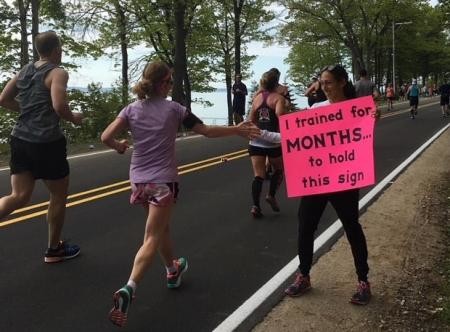
“To make this determination, TCTC has been monitoring developments in the running event industry, following the guidelines of local, state and national authorities and medical advisors, and listening to feedback from volunteers, participants and community partners,” says Lisa Taylor, executive director of Traverse City Track Club. “We did not take the decision to cancel the traditional in-person event lightly, and we thank everyone for their understanding and support.”

“MDHHS orders serve as our primary guide and after much thought and consideration, we do not suspect COVID-19 restrictions to be lifted until we are post-pandemic, meaning we’ve achieved herd immunity and the state has minimal new coronavirus cases’” says Dr. Jim Zeratsky, event medical director. “Vaccine production, distribution and acceptance could exceed expectations, but we think it is unlikely in time for the spring race.”
Virtual participants will receive a Bayshore Marathon short-sleeve technical T-shirt, a commemorative race bib and a finisher’s medal. Registration opens for the virtual event Monday, Jan. 11.
The cost of the virtual event will be $63 for the marathon, $60 for the half marathon and $30 for the 10K. Please note the Boston Athletic Association does not accept virtual times for Boston Qualification. Proceeds from the event will go to the Traverse City Track Club, which has donated more than $2 million to date in support of mission-related higher learning scholarships, community grants and planned giving.
Participants that had been registered for the 2020 in-person event and deferred to the 2021 in-person event will have the option to transfer registration to the 2021 virtual event or defer to the 2022 in-person event.
(01/05/2021) ⚡AMPby MyNorth News Service
Bayshore Marathon
The Bayshore Marathon has become a “must run” for runners throughout the Midwest and beyond. Many runners return year after year to enjoy the scenic courses which run along the shores of beautiful Grand Traverse Bay. Hosted by Traverse City Track Club, Bayshore features a 10K, half marathon and full marathon. The number of runners in all three races is...
more...The Postponed Khmer Empire Marathon slated for August
The postponed Khmer Empire Marathon will be held in Siem Reap province this coming August.
The 2020 edition of the race was supposed to be staged five months ago. But due to the COVID-19 pandemic, its organisers decided to move the event to a later date.
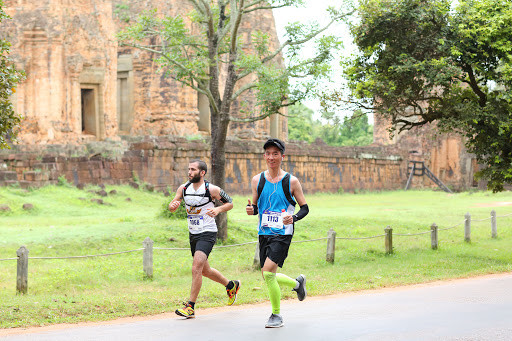
The Khmer Empire Marathon was among the many running events that were affected by the pandemic. The others include Angkor Wat International Half Marathon, Koh Dach Race and Cambodia Elephant Trail.

National Olympic Committee of Cambodia (NOCC) Secretary-General Vath Chamroeun announced early this week the cancellation of Angkor Ultra Trail 2021.
Chamroeun cited the COVID-19 situation as main reason for the cancellation. Cambodia has recorded 381 COVID-19 cases with no fatalities so far. The event, which is among the most popular international adventure races here, was supposed to be held in Siem Reap province this month.
The Khmer Empire Marathon will now be held on August 8, according to World Marathons.
The news comes after the Cambodian government lifted its latest sports ban. The ban was imposed in early December after Cambodia experienced its first COVID-19 community outbreak.
The Khmer Empire Marathon will be among the several major races that will be held this year. These include Angkor Wat International Half Marathon, which is tentatively scheduled for January 24, and the 2nd Women’s Run 10k on March 8.
(01/05/2021) ⚡AMPby Jose Rodriguez T. Senase
Khmer Empire Marathon
The Khmer Empire Full & Half Marathon, organized by Cambodia Event Organizer, is the second edition of this recent event located in Siem Reap in north-western Cambodia. Distances of 3 Km, 10.5 Km, 21.1 Km and the full marathon distance of 42.195 Km are available. Khmer Empire Full and Half Marathon is held at one of the most famous heritages...
more...Bill Anderson ran at least one mile every day for over 44 years has passed away
Bill Anderson has passed away. He has been fighting prostate cancer since 1999.
"He was a fighter," says his brother Bob Anderson (director of My Best Runs). "I know he would be proud to know that he was able to run a mile just ten days before his death. R.I.P. The world will miss you."

In 2018 he shared his secrets with MBR. Bill Anderson (72) started his running streak on September 27, 1976 in Fort Worth Texas. He has run at least one mile everyday since then. He is currently number ten on the Official USA Active Running Streak List.
"My brother Bill has never been injured," says Bob Anderson. Asked why he has never been injured he says, "Shoes are the hidden secret to avoid injuries. I make sure they are always fresh," Bill says.
"Secondly I always run within my capacity. Thirdly, I make sure I enjoy every run. Fourth, I know myself well enough to anticipate a potential issue before it happens."
His daughter (Barb) posted this on FB on December 23, 2020.
“The Streak has ended…
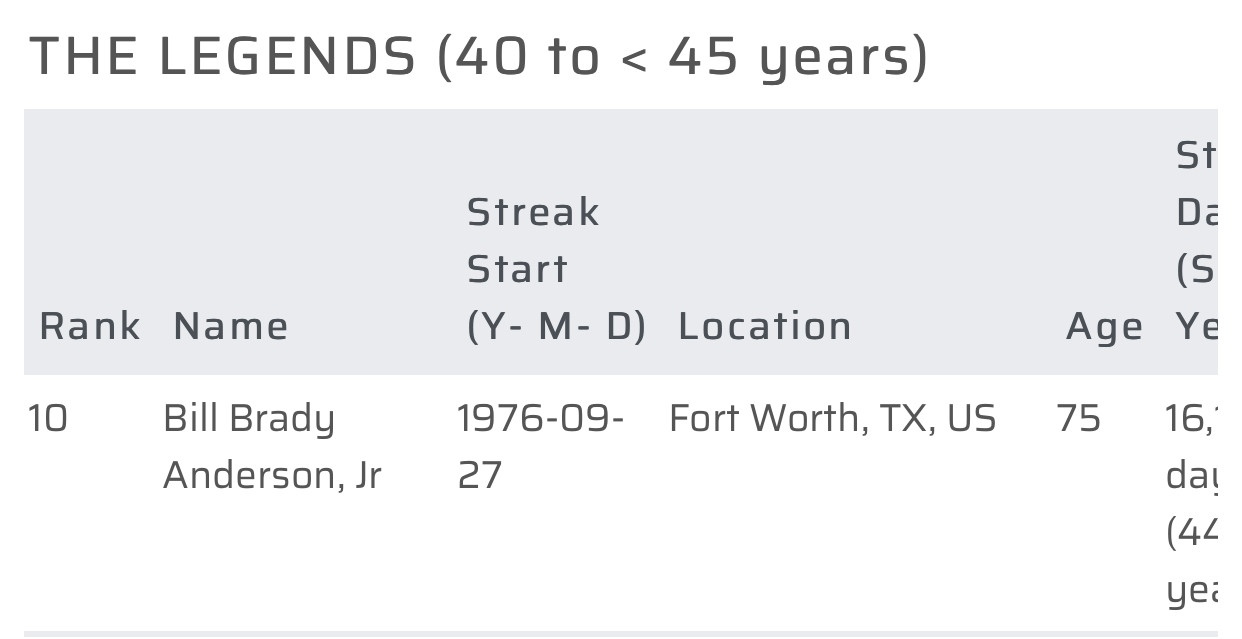
My dad did not do something yesterday that he’d done the past 16,000 + days – he did not go run at least one mile.
On September 27, 1976, he went for a run…I was 2 years old. He continued that for 44 years, 2 months and 25 days and ended his running career with the 10th longest documented running streak in the United States.
The rules? At least one mile, outside, in running shoes.
At some point the streak became another family member that we’ve all formed a complicated relationship with, especially my mom, who has worried about him, followed him in the car in the hail or after a little too much to drink, cursed the inconvenience of the “damn streak” on occasion and supported him every day.
When I was in high school, I started running with him. The first time I ran four miles, I was with my dad and we had about a third of a mile to go, all uphill. I was ready to quit when he calmly said, “At this point it’s really just a matter of one’s character.” I didn’t stop.
I’ve run with him numerous distances, in numerous locations, sometimes in formal races and sometime just around the hood. But my dad’s run in every state, dozens of countries and incredible ranges of temperatures and weather conditions, juggling time zones, international date lines, snow, wind, rain, prostate cancer surgeries, bladder cancer, Parkinson’s, nine chemo cycles, a ruptured appendix and age.
On Monday the 21st my mom practically pushed him out the front door and followed him in the car one last time, this time for concern of his mental acuity.
I ran with him on Tuesday the 22nd, not knowing but somehow feeling the final curtain call. We reminisced about our most memorable runs together – like the one time, a very low-to-the-ground bulldog joined us from nowhere and ran at least a mile right between us. We both thought that dog would go into cardiac arrest. At some point he bailed on us but when we got back to the house, we jumped in the car to try and find him because we were convinced that he was dead, lost or both. We never did find him.
On Wednesday the 23rd after being rushed to the hospital, he announced with dignity, strength and no regret, that the streak was over.
He made the right decision. But I can’t help feeling like we lost a family member yesterday.
My dad has always been my hero. Dad, today I went for a run and even though I cried through half of it, I ran with new purpose and I crushed it. I love you.”
Click on link (the title) to listen to Bill talk about his streak.
(01/04/2021) ⚡AMPSeb Coe relaxed over game-changing shoe technology in athletics
Seb Coe says he is not about to push for the banning of the controversial track spikes worn by Mo Farah’s biggest Olympic rival.
Joshua Cheptegei, who is due to go head-to-head with reigning champion Farah in the 10,000m in Tokyo, recently obliterated the world record both for that distance and the 5,000m.
He did so wearing the new Nike ZoomX Dragonfly shoes which contain a carbon plate and a unique foam and have been billed as the “fastest shoes ever”.

Coe, president of World Athletics, is aware that former British star Tim Hutchings believes the latest shoe technology merits a new classification of world records.

The Olympic legend insists world records “do matter”, need to be “cherished” and recognised the world over as a “benchmark of a suffusion of skill, talent, hard work and great coaching”.
But he says: “We shouldn't be in the business of trying to suffocate innovation. I don't think we've reached that point where world records are being handed out like confetti.”
Coe has seen shoe technology change the face of road running, with Eliud Kipchoge becoming the first human to clock a sub two-hour marathon, wearing Nike’s revolutionary Alphafly shoe.
But he plays down fears for the track record book being rewritten, claiming there are now more control mechanisms in place.
But Hutchings is unconvinced, telling insidethegames : "It's clear that performances in these shoes, both road and track, should be in a separate category, or at least asterisked.
"To compare performances in the shoes, with those not in the shoes, is grossly unfair to the athletes in the latter category.”
Seb Coe says he is not about to push for the banning of the controversial track spikes worn by Mo Farah’s b
(01/04/2021) ⚡AMPby Alex Spink


